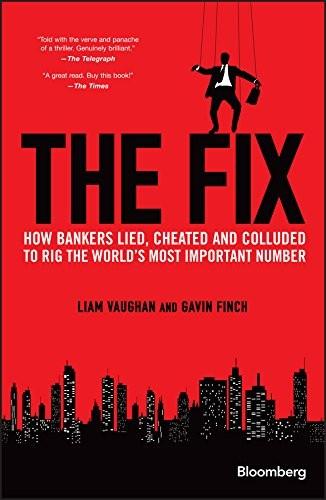
The Fix: How Bankers Lied, Cheated and Colluded to Rig the World's Most Important Number (Bloomberg)
by
Liam Vaughan
and
Gavin Finch
Published 22 Nov 2016
Not only did Hayes have to extract himself from every deal he’d done with Lehman, but he’d also made a series 1 2 THE FIX of enormous bets that in the coming days interest rates would remain stable. The collapse of the fourth-largest investment bank in the U.S. would surely cause those rates, which were really just barometers of risk, to spike. As Hayes examined his tradebook, one rate mattered more than any other: the London interbank offered rate, or Libor, a benchmark that influences $350 trillion of securities and loans around the world. For traders like Hayes, this number was the Holy Grail. And two years earlier, he had discovered a way to rig it. Libor was set by a self-selected,self-policing committee of the world’s largest banks.
…
The Iranian loan was one of the first ever to charge a variable rate of interest that reflected changing market conditions and be split among a group of banks. It was just as revolutionary in the staid world of 1960s 13 14 THE FIX banking as the moon landing, though celebrated with less fanfare, and it marked the birth of the London interbank offered rate, or Libor. “I felt a sense of achievement to set up the whole thing, but I didn’t think we were breaking ground for a new period in the financial world,” says Zombanakis, now 90 and living back in Kalyves, on the island of Crete, amid the same olive groves his family has tended for generations.
…
The formula was simple. The banks in the syndicate would report their funding costs just before a loan-rollover date. The weighted average, rounded to the nearest 1/8th of a percentage point plus a spread for profit, became the price of the loan for the next period. Zombanakis called it the London interbank offered rate. Other financiers cottoned on, and by 1982 the syndicated-loan market had ballooned to about $46 billion.4 Virtually all those loans used Libor to calculate the interest charged. Soon, the rate was adopted by bankers outside the loan market who were looking for an elegant proxy for bank borrowing costs that was simple, fair and appeared to be independent.
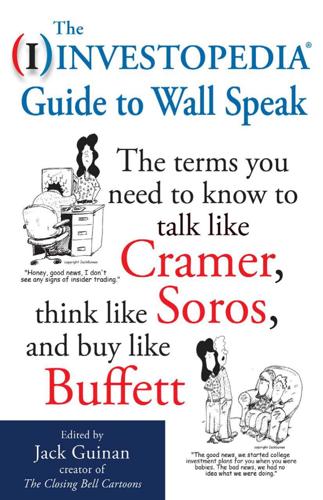
The Investopedia Guide to Wall Speak: The Terms You Need to Know to Talk Like Cramer, Think Like Soros, and Buy Like Buffett
by
Jack (edited By) Guinan
Published 27 Jul 2009
Related Terms: • Breakpoint • Mutual Fund • No-Load Fund • Front-End Load • Net Asset Value—NAV 166 The Investopedia Guide to Wall Speak London Interbank Offered Rate (LIBOR) What Does London Interbank Offered Rate (LIBOR) Mean? An interest rate at which banks borrow funds from other banks in the London interbank market; the LIBOR is fixed on a daily basis by the British Bankers’ Association and derived from a filtered average of the world’s most creditworthy banks’ interbank deposit rates for larger loans with maturities between overnight and a full year. Investopedia explains London Interbank Offered Rate (LIBOR) The LIBOR is the world’s most widely used benchmark for shortterm interest rates.
…
See also Equity multiplier Leveraged buyout (LBO), 161, 234 Leveraged loan, 161-162 Liability, 4, 6-7, 8, 17, 61, 162, 162, 321. See also specific debts and liabilities Liability ratios, 209, 276 Liar loan, 162-163 LIBOR. See London Interbank Offer Rate (LIBOR) Life-cycle mutual funds, 14, 182 Limit order, 163 Liquid assets. See Cash and cash equivalents (CCE) Liquidity, 4-5, 38, 133-134, 163-164 Liquidity ratios, 61, 164, 242-243. See also Current ratio Listed, 165 Load fund, 99, 111-112, 165, 165, 201-202 Loan-to-value ratio (LTV), 163 London Interbank Offer Rate (LIBOR), 96, 140-141, 166 Long (long position), 33, 34, 56-57, 166-167, 197 Long squeeze, 167 Long-term debt, 167-168 Long-term debt to capitalization ratio, 168 MA.
…
If the return on a stock is 15% and the risk-free rate over the same period is 7%, the equity-risk premium is 8% for this stock over that period. Related Terms: • Equity • Premium • Risk-Return Trade-Off • Gordon Growth Model • Risk 96 The Investopedia Guide to Wall Speak Euro LIBOR What Does Euro LIBOR Mean? The London Interbank Offer Rate denominated in euros. This is the interest rate that banks offer one another for large short-term loans in euros. The rate is fixed once a day by a small group of large London banks but fluctuates throughout the day. This market makes it easier for banks to maintain liquidity requirements because they are able to borrow quickly from other banks that have surpluses.
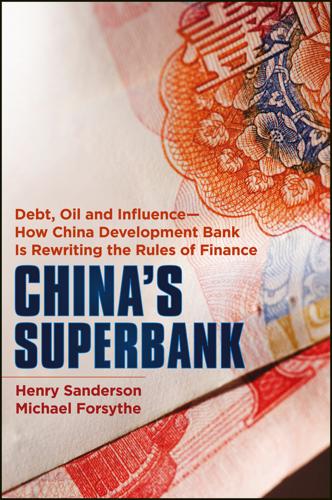
China's Superbank
by
Henry Sanderson
and
Michael Forsythe
Published 26 Sep 2012
They then stuff the debt into the banks via reserve requirements and other devices.”73 Still, Gao worked hard to improve China’s bond market, making CDB bonds more useful to the commercial banks through innovations such as selling them at a floating rate over the bank deposit rate (China had no London Interbank Offering Rate [LIBOR] at the time); if banks believed interest rates were going to rise, they could make good profits. In this closed system, CDB bond issuance has long surpassed the bond sales of the Export-Import Bank of China and Agricultural Development Bank of China, the other two official policy banks.
…
The loan stipulates that Chinese contractors must implement projects worth 60 percent of the loan amount. The loan is strict in its conditions and is certainly not free money: Split into two tranches, the Bank of Ghana must pay interest every six months into CDB accounts opened in Hong Kong and pegged to the six-month London Interbank Offered Rate (LIBOR), a rate heavily influenced by what’s going on in the fickle global markets. The rate is 295 basis points above LIBOR for the 15-year loan and 285 basis points for the 10-year loan, and includes a 1 percent commitment fee every year on the undrawn amount of the loan. (See Table 3.4).
…
With production languishing at about 3 million barrels a day, PDVSA, and Venezuela, were paying a price for deferring investment in the oil industry, forfeiting about $10 billion a month in lost oil revenues, more than enough to have funded Chávez’s social programs, serviced the Chinese loans, and invested in new capacity.25 The company has piled on debt to meet its social funding goals, borrowing on global bond markets at rates far higher than CDB’s loans to BANDES. Debt surged 40 percent in 2011 to $34.9 billion. In February 2011, PDVSA sold $3 billion in bonds with a 12.75 percent rate.26 That compares to CDB loans to the country, set at anywhere from 0.5 percentage points to 2.5 percentage points above the London Interbank Offered Rate (LIBOR; about 1.5 to 3.5 percent at prevailing one-year LIBOR rates in early 2012). In November 2011, PDVSA signed an agreement to borrow $4 billion from CDB to increase production at its Petrosinovensa joint venture with CNPC. The loan will be repaid with oil shipments of 40,000 barrels a day, Ramírez said.27 “When a company like Petrobras takes on new debt, everyone is happy,” Ramírez said on national television on February 7, 2012, referring to Brazil’s state-controlled Petróleo Brasileiro SA.
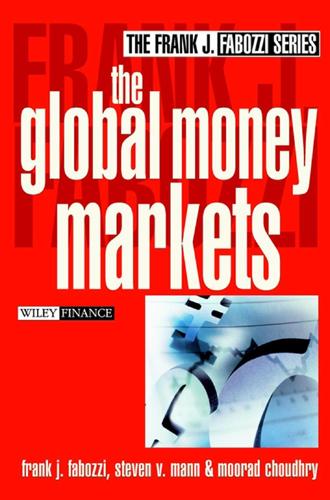
The Global Money Markets
by
Frank J. Fabozzi
,
Steven V. Mann
and
Moorad Choudhry
Published 14 Jul 2002
The other party, who agrees to make interest rate payments that float with some reference rate, is referred to as the floating-rate payer. The reference rates that have been used for the floating rate in an interest rate swap are various money market rates: Treasury bill rate, the London interbank offered rate, commercial paper rate, bankers acceptances rate, certificates of deposit rate, the federal funds rate, and the prime rate. The most common is the London interbank offered rate (LIBOR). LIBOR is the rate at which prime banks offer to pay on Eurodollar deposits available to other prime banks for a given maturity. There is not just one rate but a rate for different maturities.
…
See International Swap Dealers Association ISSUE SIZE, 63 Issues, underwriting, 84 Jackson National Life, 99 JCPenney, 192 Junior tranches, 182–183 Kambhu, John, 43 King & Shaxson Bond Brokers Limited, 139 Knight-Ridder, 35 Kuwait, invasion, 38 Large-denomination CDs, 86 322 Large-denomination negotiable CDs, 85–90 Lazards, 139 Lee, Wanda, 76 Legal structures, 187 Lending lines, 262 Letter of credit (LOC), 96 Level I PAC bond, 178 Level II PAC bond, 178 Level III PAC bond, 179 Leveraged inverse floater, 103 Leveraging, 131 Liabilities. See Current liabilities; Long-term liabilities; Noninterest-bearing liabilities Liberty Brokerage Inc., 34 LIBID. See London Interbank Offered Rate LIBOR. See London Interbank Offered Rate LIBOR-to-arrears swap, 260 Life insurance companies, 98 Lifetime cap, 153 Liquidity, 262, 285–295. See also U.S. Treasury bills book, 276 constraints, 281 definition, 276 marketability, 277 difference, 33 enhancement, 71. See also Asset-backed commercial paper facility.
…
Domestic CDs issued in the United Kingdom denominated in pounds are quoted the same way except the day count convention is Actual/365. Eurodollar CDs are U.S. dollar-denominated CDs issued primarily in London by U.S., Canadian, European, and Japanese banks. The CDs earn a fixed rate of interest related to dollar LIBOR. The term LIBOR comes from the London Interbank Offered Rate and is the interest rate at which one London bank offers funds to another London bank of acceptable credit quality in the form of a cash deposit. The rate is “fixed” by the British Bankers Association every business morning (in practice the fix is usually about 20 minutes later) by the average of the rates supplied by member banks.
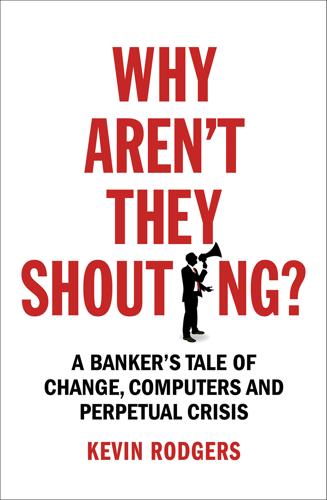
Why Aren't They Shouting?: A Banker’s Tale of Change, Computers and Perpetual Crisis
by
Kevin Rodgers
Published 13 Jul 2016
In time, as an alternative to having their clients trade physically (by actually buying bonds), enterprising banks – with Bankers Trust to the fore – allowed the same economic outcome to be achieved through derivatives. These were effectively bets on interest rates, which would simply pay out with reference to a formula based on the bond price (or an interest rate benchmark like LIBOR, the London Interbank Offered Rate) at maturity – this was known as ‘cash settlement’. In certain cases, convinced of the obviousness of the trade, clients were persuaded to bet heavily by buying highly leveraged products that would win if bond prices continued to rise (or at least remained stable) but would lose many times over if they did not.
…
The loan, which was a large one for the time, was part of a growing business in ‘offshore’ dollars that arose because of the capital flows resulting from the costs of funding the Vietnam War. The Shah’s financiers wanted to pay a floating rate on the loan – but what rate? There was no existing reference. Minos Zombanakis, a Greek banker who ran the London branch of Manufacturers Hanover (later subsumed in JPMorgan) came up with a solution: LIBOR, or the London Interbank Offered Rate. Every quarter, to determine the interest rate for the quarter to come, the banks in the syndicate would submit how much it cost them to borrow dollars in the London market. The average would be taken and that reference (dubbed LIBOR) would be used as the rate for the loan – plus a spread to offset the risk of default and to create profit.
…
leverage ratio The raw ratio of a bank’s assets to its capital, unadjusted by any consideration of risk. liabilities Debts or other obligations that arise during the course of business operations. In banks, liabilities include deposits from customers or other banks, issued bonds, loans taken out and shareholders’ equity. LIBOR The London Interbank Offered Rate: an interest rate reference which measures the borrowing costs of banks in the London market for a set of currencies over different tenors and which is used in the cash settlement of various interest rate products, most commonly interest rate swaps. liquidity A measure of the ability of market participants to transact within a reasonable time frame and at a price close to the price pertaining in the market when the decision to trade was made.

The Spider Network: The Wild Story of a Math Genius, a Gang of Backstabbing Bankers, and One of the Greatest Scams in Financial History
by
David Enrich
Published 21 Mar 2017
Spread out across time zones and continents, a group of bankers, brokers, and traders had tried to skew interest rates that served not only as the foundation of trillions of dollars of loans, but also as an essential vertebra of the financial system itself. It all boiled down to something called Libor: an acronym for the London interbank offered rate, it’s often known as the world’s most important number. Financial instruments all over the globe—a volume so awesome, well into the tens of trillions of dollars, that it is hard to accurately quantify—hinge on tiny movements in Libor. In the United States, the interest rates on most variable-rate mortgages are based on Libor.
…
Around lunchtime, after knocking out the highest and lowest estimates, the BBA would disseminate the average to the banks and others for use in various financial instruments. The number was dubbed “the BBA standard for interest rate swaps.” That didn’t exactly roll off the tongue, so the group decided on a marginally catchier acronym: BBAIRS. That name didn’t last long. On New Year’s Day in 1986, the BBA for the first time published something called the London interbank offered rate—Libor, for short. Pronounced LIE-bore, it would soon be the basis for much of the modern financial world. That same year, Margaret Thatcher ignited what came to be known as the “Big Bang.” It was her attempt to make London a vital financial capital by loosening restrictive, antiforeigner rules that had long governed the London Stock Exchange, and freeing the country’s banks from curbs on their growth and consolidation.
…
That was enticing for customers—they’d no longer worry about missing out on savings if interest rates dropped in the future—and it was attractive for the banks—the variable rate would encourage customers to borrow more, while locking in profits for banks above what it cost them to borrow money. By the 1990s, the phrase “London interbank offered rate” was buried in the fine print of an increasing number of American loan agreements. Before long, the fortunes of just about anyone who borrowed money in the United States and, to a slightly lesser extent, elsewhere in the Western world hinged on Libor. Libor’s spread was part of a much broader trend: the globalization of finance.

Capital Ideas Evolving
by
Peter L. Bernstein
Published 3 May 2007
“Thus,” said Scholes, “we have the academic grandfather, son, and grandson all under one roof.” So far so good. With sixty-five employees on the job today, the fund since inception has generated returns of 9.6 percent a year after fees, and 6.5 percent a year over the popular cash-equivalent benchmark of LIBOR (the London Interbank Offered Rate). Annual volatility has been only 4.5 percent, or a little less than half the rate of return. The fund has almost zero correlation with bond markets or stock markets. Although Platinum Grove does hold short positions, its resemblance to most hedge funds ends there. Platinum Grove makes no forecasts of systematic factors—such as betas or alphas—and has no intention of doing so.
…
By exploiting these kinds of inefficiencies, Pimco could deliver to its clients the return on Treasury issue they wanted to hold plus more than enough to cover the financing costs involved in the futures contract. * The f inancing rate is typically three-month LIBOR, which is the customary f inancing rate in many f inancial transactions similar to this one. LIBOR is the London Interbank Offered Rate, essentially the same kind of high-quality credit as the rate on federal funds in the United States, which is the rate commercial banks charge one another for overnight borrowing of reserve balances at the Federal Reserve Banks. The price of the S&P 500 futures contract also includes an adjustment for the expected dividends on the S&P 500 over the life of the contract, which will not accrue to the holder of the futures.
…
Little (consulting f irm), 152, 166 Asimov, Isaac, 59, 60 Asness, Cliff, 216 AQR Capital Management, 216 Global Alpha Fund, 216 Asset allocation asset allocation goes 2x strategy, 190 –191 Asset Trust platform strategy for, 191–192 considering beta risks in, 173 Leibowitz’s risk/return trade-off for, 211–212 Markowitz’s observations about, 159 Assets f inancial market transactions of, 113–114 Litterman on shifting to portfolio from individual, 228–229 managed by Barclays Global Investors ( BGI), 129–130 risk transfer and liquidity of, 118 Sharpe’s algebraic specif ication of CAPM on pricing, 167–168 Treynor on valuation of, 167 Asset Trust platform strategy, 191–192, 193–194 Asymmetric Returns: The Future of Active Asset Management ( Ineichen), 173 AXA Rosenberg, 11 Bachelier, Louis, 240 Bank of Japan, 119 Barber, Brad, 13, 56 Barclays Bank of London, 130, 137 Barclays Global Investors ( BGI) Active Portfolio Management: Quantitative Theory and Applications (Grinold and Kahn) followed by, 137–138 approach to creating alpha by, 139–141 assets/index funds managed by, 129–130, 170 Asset Trust platform strategy used by, 191–192, 193–194 basic personnel policies of, 141–143 basic philosophy of, 145 Behavioral Finance application by, 147 enhancing indexing at, 140 –141 ETFs (exchange-traded funds) issued by, 142 impact of high-tech bubble (1990s) on, 145–147 Information Ratios ( IR) used by, 138–139 iPath ETNs issued by, 142 portfolio performance of, 129–130, 140 –141, 142–143, 146 role of basic f inance theory in strategies of, 143–145 transformation of WFIA into, 136–137 See also Wells Fargo Investment Advisors ( WFIA) BARRA, 137 Behavioral Finance arbitrage issue of, 25–28 behavioral anamolies are where alpha is born, 31–32 BGI application of, 147 bern_z04bindex.qxd 4/3/07 8:20 AM Page 265 Index contributions to understanding investors by, 30 –32 on decisions and choices by investors, 19, 40 def inition of, 4, 39 examining possibilities of, 10 –11 as good description of reality, 13–14 Grossman on, 144 impact on Capital Ideas by, 30 –31, 32 Kahneman on, 30, 31 Kahneman-Tversky inf luence on, 10 Miller’s quip about, 30 paradox of, 32–33 practical implications of, 6 Samuelson on, 39 using simulations of, 102 survey conducted on, 5 Swensen on, 164 Taylor’s work on, 15 See also Finance theories; Sellers Benartzi, Sholomo, 9 Benchmarks def inition of, 38 LIBOR ( London Interbank Offered Rate), 111 long and short portfolios by eliminating the, 230 Policy Portfolio as, 211 S&P 500, 38, 107, 140, 148–149, 160, 186 Wilshire 5000, 160 Bernoulli, Jacob, 64 Berra, Yogi, 11 Beta (systematic risk) asset allocation and factor of, 173 asset allocation goes 2x for alpha and, 190 –191 265 Asset Trust platform for separating alpha from, 191–192, 193–194 Damsma’s separation of alpha and, 184 –191 def inition of, 38, 92, 168–169 distinction between alpha and, 173–177 Leibowitz on bond funding and role of, 206 Litterman on allocation between alpha and, 219–223 Scholes’ exclusion of, 112 stock volatility and, 168, 172 strategies for separating alpha bets from, 177–178, 190 –192, 193–194, 238 See also Alphas ( beating the market); Risk; Valuation Biggs, John, 200 Black, Fischer Black-Litterman model by, 215, 216, 220, 224 –228, 229, 233–234 Black-Scholes-Merton options pricing model of, 52, 67, 85, 110, 195 on CAPM return discrepancy, 132 controversy between Fouse and, 133 equilibrium goal of, 215, 216, 220, 224 –228, 244 “How to Use Security Analysis to Improve Portfolio Selection” (Treynor and Black) by, 175 on increasingly f ierce competition, 234 inf luence on BGI by, 143 bern_z04bindex.qxd 266 4/3/07 8:20 AM Page 266 INDEX Black, Fischer (Continued) MIT classes taught by, 59 on noise trading, 19, 20 on optimal portfolio selection, 185 on putting trust in logic and theory, 94 quip on arrivals in New York by, 214 on search for alpha, 174 –175 Stagecoach Fund designed by, 128, 133 “The Trouble with Econometric Models” by, 215 Black-Litterman model active management approach of, 224 –228, 229, 233–234 described, 215 equilibrium goal of, 215, 216, 220, 224 –228, 244 market eff iciency foundation of, 220 as mean/variance optimization solution, 225–228 See also Goldman Sachs Black Monday (October 19, 1987), 28 Black-Scholes-Merton options pricing model, 52, 67, 85, 110, 195 Blodget, Henry, 245 Blue noise, 41 Bodie, Zvi Functional and Structural Finance (Merton and Bodie) by, 50 on institutional innovation process, 50 –55 The Bond King, 179 BondsPLUS, 180 –182, 195 Bonds.
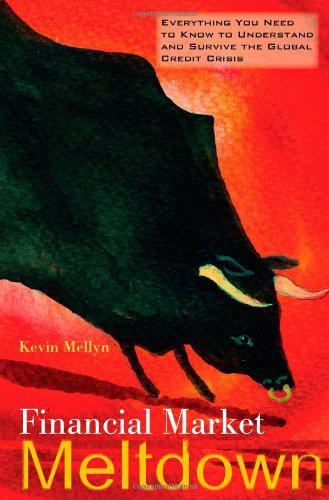
Financial Market Meltdown: Everything You Need to Know to Understand and Survive the Global Credit Crisis
by
Kevin Mellyn
Published 30 Sep 2009
Until, that is, the summer of 2007, when the interbank market froze up and our current financial crisis began. FINANCE RETURNS TO LONDON The first sign that the global financial system was falling apart came in the freezing up of the London interbank market in August of 2007. LIBOR—the London Interbank Offered Rate, essentially the rate at which banks will offer to lend to other banks for various periods— went through the roof. The first question that springs to mind is, ‘‘Why is the global market in dollar deposits in London anyway’’? The Natural History of Financial Folly This is due to yet another accident of history with big consequences, this time Kennedy Administration policies.
…
This swelling of the sheer scale of the global financial economy was possible because banking in the Euromarkets gradually became almost purely concerned with trading in financial instruments unlinked to the real economy of buying and selling stuff. The bankers in the Euromarkets effectively had no constraints. All a bank needed was highly skilled (or lucky) traders. No pesky customers were needed for deposits—you simply bought OPM in the interbank market. The benchmark rate became know as LIBOR—the London Interbank Offered Rate—and remains the most important single interest rate in the financial world. This is why, when LIBOR went through the roof in August 2007, it was the canary in the mineshaft signaling the start of a global credit crunch that morphed into a full-fledged crisis: Interbank lending had seized up because banks The Natural History of Financial Folly wouldn’t trust each other with even short-term placements.
…
(LBJ), 140; and the Great Inflation, 154 Joint Stock Companies, history and role, 81–82, 89, 138; East India Company, 81–82 Keynes, John Maynard, 113–115, 129, 153, 155, 163, 165 Kindleberger, Charles, Manias, Panics and Crashes, 136 ‘‘legal tender,’’ xv, xvii, 10, 105, 148 Lender of Last Resort, 150 lending, xix, 15–18, 27, 34, 36–39, 56, 60–63, 66, 68, 70, 72, 83–84, 90, 92, 98, 102–103, 107, 109–110, 126, 131–132, 142, 148, 150–152, 156–158, 164, 166–167, 170, 185–189. See also Balance sheet lending Leverage, 4–5, 27–28, 66, 152, 160 liberalism, 125, 180, 182 Liberty and markets, 125, 179–182 LIBOR (London Interbank Offered Rate), 146, 150 ‘‘Lifeboat’’ method of bank rescue, 121 Liquidity, 30, 110, 113 Liquidity Trap, 113 Lombard Rate, 34 Lombard Street, book by Walter Bagehot, 102 Lombard Street, London, 34, 135 ‘‘long tail’’ risks, 69. See also ‘‘black swans’’ Long Term Credit Bank (LTCB), Japan, 170 195 196 Index Mackay, Charles, Great Popular Delusions and the Madness of Crowds, 136 Madoff, Bernard, 23, 175 Main Street, 1, 91, 104, 144, 176, 187 Manias, xviii–xx, 27, 109, 136–138 Manufacturers Hanover Trust Company, 148, 158 margin lending, 110 market capitalization, 47, 51, 70, 126, 159, 183 markets 19–22, 24–28, 40–41, 60, 72, 107, 111, 117–119, 124, 126–127, 150, 165–169, 175–176; 179–189; defined, xi–xx; functions, 18–28; history of, 75, 79–89, 135–145; how to play, 50–56; irrational, 52–53, 156–57; real estate market downturn and ‘‘Billy Bob’’ banking crisis, 131–32; secondary, 44 MBS (Mortgage Backed Securities), 57 Medici, 79 Meyer, Martin, Bankers, The, 143 MMA (Money Market Account), 130 models, uses in finance, 21, 25, 27, 63–65, 69–70, 99–100, 138, 152, 166, 171, 177, 182; faith in, 4, 58, 66, 68, 71–72, 74 MOF (Ministry of Finance, Japan), 167 money, creation of, 13; defined, x, xi, 117; history of, xv–xvi, 33–34, 77–80; function of, xii–xv; money supply, types of xv, xvii–xviii, 4, 8–9, 83, 92, 148, 155; value of, 4.
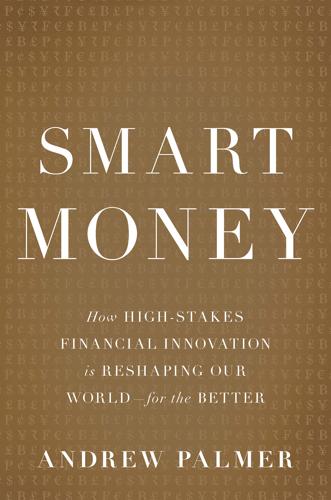
Smart Money: How High-Stakes Financial Innovation Is Reshaping Our WorldÑFor the Better
by
Andrew Palmer
Published 13 Apr 2015
ISDA is where banks go when new areas of OTC activity reach a critical mass and custom-made documents no longer do the job. It also acts as Solomon when ambiguities arise: ISDA’s determinations committee meets to decide on when credit-default swaps have been triggered, for example. The London Interbank Offered Rate also has its roots in a search for standardized efficiency. LIBOR is an interest rate that has become central to pricing loans and derivatives worldwide and that we now know was being routinely manipulated before and during the 2007–2008 financial crisis. It is very common to hear a phrase like “the loan was priced at LIBOR plus 60” when you talk to bankers: that means the loan carried an interest rate of whatever LIBOR was, plus another 60 basis points (100ths of a percentage point) on top.
…
., 32 Keys, Benjamin, 48 Kharroubi, Enisse, 79 Kickstarter, 172 King, Stephen, 99 Klein, David, 182 Krugman, Paul, xv Lahoud, Sal, 166 Lang, Luke, 153, 161–162 Laplanche, Renaud, 179, 184, 188, 190, 193–194, 196–197 Latency, 53 Law of large numbers, 17 Layering, 57 Left-digit bias, 46 Lehman Brothers, x, 44, 65 Lending direct, 84 marketplace, 184 payday, 200 relationship-based, 11, 151, 206–208 secured, xiv, 76 unsecured, 206 See also Loans; Peer-to-peer lending Lending Club, 172, 179–180, 182–184, 187, 189, 194–195, 197 Leonardo of Pisa (Fibonacci), 19 Lerner, Josh, 59 Lethal pandemic, risk-modeling for demographic profile, 230 exceedance-probability curve, 231–232, 232 figure 3 historical data, 228–229 infectiousness and virulence, 229–230 location of outbreak, 230–231 Leverage, 51, 70–71, 80, 186, 188 Leverage ratio, 76–77 Lewis, Michael, 57 Liber Abaci or Book of Calculation (Fibonacci), 19 LIBOR (London Interbank Offered Rate), 41 Liebman, Jeffrey, 98 Life expectancy government reaction to, 128–129 projections of, 124–127, 126 figure 2 ratio of young to older people, 127–128 Life-insurance policies, 142 Life-settlements industry, 142–143 Life table, 20 Limited liability, 212 Liquidity, 12–14, 39, 185–186 List, John, 109 The Little Book of Behavioral Investing (Montier), 156 Lo, Andrew, 113–115, 117–123 Loans low-documentation, 48–49 secured, 76 small business, 181, 216 student, 164, 166–167, 169–171, 182 syndicated, 41 Victory Loans, 28 See also Lending; Peer-to-Peer lending Logistic regression, 201 London, early fire insurance in, 16–17 London, Great Fire of, 16 London Interbank Offered Rate (LIBOR), 41 Long-Term Capital Management, 123 Longevity, betting on, 143–144 Loss aversion, 136 Lotteries, 212, 213 Low-documentation loans, 48–49 Lumni, 165, 168, 175 Lustgarten, Anders, 111 Lynn, Jeff, 160–161 Mack, John, 180 Mahwah, New Jersey, 52, 53 Marginal borrowers assessment of, 216–217 behavioral finance and, 208–214 industrialization of credit, 206 microfinance and, 203 savings schemes, 209–214 small businesses, 215–219 unsecured lending to, 206 Wonga, 203, 205, 208 Marginal borrowers (continued) ZestFinance, 199, 202, 205–206 Maritime piracy, solutions to, 151–152 Maritime trade, role of in history of finance, 3, 7–8, 14, 17, 23 Market makers, 15–16, 55 MarketInvoice, 195, 207, 217–218 Marketplace lending, 184 Markowitz, Harry, 118 Massachusetts, use of inflation-protected bonds in, 26 Massachusetts, use of social-impact bonds in, 98 Matching engine, 52 Maturity transformation, 12–13, 187–188, 193 McKinsey & Company, ix, 42 Mercator Advisory Group, 203 Merrill, Charles, 28 Merrill, Douglas, 199, 201 Merrill Lynch, 28 Merton, Robert, 31, 113–114, 123–124, 129–132, 142, 145 Mian, Atif, 204 Michigan, University of, financial survey by, 134–135 Microfinance, 203 Micropayment model, 217 Microwave technology, 53 The Million Adventure, 213–214 Minsky, Hyman, 42 Minsky moment, 42 Mississippi scheme, 36 Mitchell, Justin, 166–167 Momentum Ignition, 57 Monaco, modeling risk of earthquake in, 227 Money, history of, 4–5 Money illusion, 73–74 Money laundering, 192 Money-market funds, 43, 44 Monkeys, Yale University study of loss aversion with, 136 Montier, James, 156–157 Moody, John, 24 Moody’s, 24, 235 Moore’s law, 114 Morgan Stanley, 188 Mortgage-backed securities, 49, 233 Mortgage credit by ZIP code, study of, 204 Mortgage debt, role of in 2007–2008 crisis, 69–70 Mortgage products, unsound, 36–37 Mortgage securitization, 47 Multisystemic therapy, 96 Munnell, Alicia, 129 Naked credit-default swaps, 143 Nature Biotechnology, on drug-development megafunds, 118 “Neglected Risks, Financial Innovation and Financial Fragility” (Gennaioli, Shleifer, and Vishny), 42 Network effects, 181 New York, skyscraper craze in, 74–75 New York City, prisoner-rehabilitation program in, 108 New York Stock Exchange (NYSE), 31, 52, 53, 61, 64 New York Times, Merrill Lynch ad in, 28 Noncorrelated assets, 122 Nonprofits, growth of in United States, 105–106 Northern Rock, x NYMEX, 60 NYSE Euronext, 52 NYSE (New York Stock Exchange), 31, 52, 53, 61, 64 OECD (Organization for Economic Co-operation and Development), 128, 147 Oldfield, Sean, 67–68, 80–84 OnDeck, 216–218 One Service, 94–95, 105, 112 Operating expense ratio, 188–189 Options, 15, 124 Order-to-trade ratios, 63 Oregon, interest in income-share agreements, 172, 176 Organization for Economic Co-operation and Development (OECD), 128, 147 Overtrading, 24 Packard, Norman, 60 Pandit, Vikram, 184 Park, Sun Young, 233 Partnership mortgage, 81 Pasion, 11 Pave, 166–168, 173, 175, 182 Payday lending Consumer Financial Protection Bureau, survey on, 200 information on applicants, acquisition of, 202 underwriting of, 201 PayPal, 219 Peak child, 127 Peak risk, 228 Peer-to-peer lending advantages of, 187–189 auction system, 195 big investors in, 183 borrowers, assessment of, 197 in Britain, 181 commercial mortgages, 181 CommonBond, 182, 184, 197 consumer credit, 181 diversification, 196 explained, 180 Funding Circle, 181–182, 189, 197 investors in, 195 Lending Club, 179–180, 182–184, 187, 189, 194–195, 197 network effects, 181 ordinary savers and, 184 Prosper, 181, 187, 195 RateSetter, 181, 187, 196 Relendex, 181 risk management, 195–197 securitization, 183–184, 196 Peer-to-peer lending (continued) small business loans, 181 SoFi, 184 student loans, 182 Zopa, 181, 187, 188, 195 Pensions, cost of, 125–126 Perry, Rick, 142–143 Peterborough, England, social-impact bond pilot in, 90–92, 94–95, 104–105, 112 Petri, Tom, 172 Pharmaceuticals, decline of investment in, 114–115 Piracy Reporting Centre, International Maritime Bureau, 151 Polese, Kim, 210 Poor, Henry Varnum, 24 “Portfolio Selection” (Markowitz), 118 Prediction Company, 60–61 Preferred shares, 25 Prepaid cards, 203 Present value of cash flows, 19 Prime borrowers, 197 Prince, Chuck, 50–51, 62 Principal-agent problem, 8 Prisoner rehabilitation programs, 90–91, 94–95, 98, 108, 112 Private-equity firms, 69, 85, 91, 105, 107 Projection bias, 72–73 Property banking crises and, xiv, 69 banking mistakes involving, 75–80 behavioral biases and, 72–75 dangerous characteristics of, 70–72 fresh thinking, need for, xvii, 80 investors’ systematic errors in, 74–75 perception of as safe investment, 76, 80 Prosper, 181, 187, 195 Provisioning funds, 187 Put options, 9, 82 Quants, 19, 63, 113 QuickBooks, 218 Quote stuffing, 57 Raffray, André-François, 144 Railways, affect of on finance, 23–25 Randomized control trials (RCTs), 101 Raphoen, Christoffel, 15–16 Raphoen, Jan, 15–16 RateSetter, 181, 187, 196 RCTs (randomized control trials), 101 Ready for Zero, 210–211 Rectangularization, 125, 126 figure 2 Regulation NMS, 61 Reinhart, Carmen, 35 Reinsurance, 224 Relendex, 181 Rentes viagères, 20 Repurchase “repo” transactions, 15, 185 Research-backed obligations, 119 Reserve Primary Fund, 44 Retirement, funding for anchoring effect, 137–138 annuities, 139 auto-enrollment in pension schemes, 135 auto-escalation, 135–136 conventional funding, 127–128 decumulation, 138–139 government reaction to increased longevity, 128–129 home equity, 139–140 life expectancy, projections of, 124–127, 126 figure 2 life insurance policies, cash-surrender value of, 142 personal retirement savings, 128–129, 132–133 replacement rate, 125 reverse mortgage, 140–142 savings cues, experiment with, 137 SmartNest, 129–131 Reverse mortgages, 140–142 Risk-adjusted returns, 118 Risk appetite, 116 Risk assessment, 24, 45, 77–78, 208 Risk aversion, 116, 215 Risk-based capital, 77 Risk-based pricing model, 176 Risk management, 55, 117–118, 123, 195–197 Risk Management Solutions, 222 Risk sharing, 8, 82 Risk-transfer instrument, 226 Risk weights, 77–78 Rogoff, Kenneth, 35 “The Role of Government in Education” (Friedman), 165 Roman Empire business corporation in, 7 financial crisis in, 36 forerunners of banks in, 11 maritime insurance in, 8 Rotating Savings and Credit Associations (ROSCAs), 209–210 Roulette wheel, use of in experiment on anchoring, 138 Royal Bank of Scotland, 186 Rubio, Marco, 172 Russia, mortgage market in, 67 S-curve, in diffusion of innovations, 45 Salmon, Felix, 155 Samurai bonds, 27 Satsuma Rebellion (1877), 27 Sauter, George, 58 Save to Win, 214 Savings-and-loan crisis in US (1990s), 30 Savings cues, experiment with, 137 Scared Straight social program, 101 Scholes, Myron, 31, 123–124 Science, Technology, and Industry Scoreboard of OECD, 147 Securities and Exchange Commission (SEC), 54, 56, 57, 58, 64 Securities markets, 14 Securitization, xi, 20, 37–38, 117–122, 183–184, 196, 236 Seedrs, 160–161 Sellaband, 159 Shared equity, 80–84 Shared-equity mortgage, 84 Shepard, Chris, xii–xiii Shiller, Robert, xv–xvi, 242 Shleifer, Andrei, 42, 44 Short termism, 58 SIBs.
…
., 32 Keys, Benjamin, 48 Kharroubi, Enisse, 79 Kickstarter, 172 King, Stephen, 99 Klein, David, 182 Krugman, Paul, xv Lahoud, Sal, 166 Lang, Luke, 153, 161–162 Laplanche, Renaud, 179, 184, 188, 190, 193–194, 196–197 Latency, 53 Law of large numbers, 17 Layering, 57 Left-digit bias, 46 Lehman Brothers, x, 44, 65 Lending direct, 84 marketplace, 184 payday, 200 relationship-based, 11, 151, 206–208 secured, xiv, 76 unsecured, 206 See also Loans; Peer-to-peer lending Lending Club, 172, 179–180, 182–184, 187, 189, 194–195, 197 Leonardo of Pisa (Fibonacci), 19 Lerner, Josh, 59 Lethal pandemic, risk-modeling for demographic profile, 230 exceedance-probability curve, 231–232, 232 figure 3 historical data, 228–229 infectiousness and virulence, 229–230 location of outbreak, 230–231 Leverage, 51, 70–71, 80, 186, 188 Leverage ratio, 76–77 Lewis, Michael, 57 Liber Abaci or Book of Calculation (Fibonacci), 19 LIBOR (London Interbank Offered Rate), 41 Liebman, Jeffrey, 98 Life expectancy government reaction to, 128–129 projections of, 124–127, 126 figure 2 ratio of young to older people, 127–128 Life-insurance policies, 142 Life-settlements industry, 142–143 Life table, 20 Limited liability, 212 Liquidity, 12–14, 39, 185–186 List, John, 109 The Little Book of Behavioral Investing (Montier), 156 Lo, Andrew, 113–115, 117–123 Loans low-documentation, 48–49 secured, 76 small business, 181, 216 student, 164, 166–167, 169–171, 182 syndicated, 41 Victory Loans, 28 See also Lending; Peer-to-Peer lending Logistic regression, 201 London, early fire insurance in, 16–17 London, Great Fire of, 16 London Interbank Offered Rate (LIBOR), 41 Long-Term Capital Management, 123 Longevity, betting on, 143–144 Loss aversion, 136 Lotteries, 212, 213 Low-documentation loans, 48–49 Lumni, 165, 168, 175 Lustgarten, Anders, 111 Lynn, Jeff, 160–161 Mack, John, 180 Mahwah, New Jersey, 52, 53 Marginal borrowers assessment of, 216–217 behavioral finance and, 208–214 industrialization of credit, 206 microfinance and, 203 savings schemes, 209–214 small businesses, 215–219 unsecured lending to, 206 Wonga, 203, 205, 208 Marginal borrowers (continued) ZestFinance, 199, 202, 205–206 Maritime piracy, solutions to, 151–152 Maritime trade, role of in history of finance, 3, 7–8, 14, 17, 23 Market makers, 15–16, 55 MarketInvoice, 195, 207, 217–218 Marketplace lending, 184 Markowitz, Harry, 118 Massachusetts, use of inflation-protected bonds in, 26 Massachusetts, use of social-impact bonds in, 98 Matching engine, 52 Maturity transformation, 12–13, 187–188, 193 McKinsey & Company, ix, 42 Mercator Advisory Group, 203 Merrill, Charles, 28 Merrill, Douglas, 199, 201 Merrill Lynch, 28 Merton, Robert, 31, 113–114, 123–124, 129–132, 142, 145 Mian, Atif, 204 Michigan, University of, financial survey by, 134–135 Microfinance, 203 Micropayment model, 217 Microwave technology, 53 The Million Adventure, 213–214 Minsky, Hyman, 42 Minsky moment, 42 Mississippi scheme, 36 Mitchell, Justin, 166–167 Momentum Ignition, 57 Monaco, modeling risk of earthquake in, 227 Money, history of, 4–5 Money illusion, 73–74 Money laundering, 192 Money-market funds, 43, 44 Monkeys, Yale University study of loss aversion with, 136 Montier, James, 156–157 Moody, John, 24 Moody’s, 24, 235 Moore’s law, 114 Morgan Stanley, 188 Mortgage-backed securities, 49, 233 Mortgage credit by ZIP code, study of, 204 Mortgage debt, role of in 2007–2008 crisis, 69–70 Mortgage products, unsound, 36–37 Mortgage securitization, 47 Multisystemic therapy, 96 Munnell, Alicia, 129 Naked credit-default swaps, 143 Nature Biotechnology, on drug-development megafunds, 118 “Neglected Risks, Financial Innovation and Financial Fragility” (Gennaioli, Shleifer, and Vishny), 42 Network effects, 181 New York, skyscraper craze in, 74–75 New York City, prisoner-rehabilitation program in, 108 New York Stock Exchange (NYSE), 31, 52, 53, 61, 64 New York Times, Merrill Lynch ad in, 28 Noncorrelated assets, 122 Nonprofits, growth of in United States, 105–106 Northern Rock, x NYMEX, 60 NYSE Euronext, 52 NYSE (New York Stock Exchange), 31, 52, 53, 61, 64 OECD (Organization for Economic Co-operation and Development), 128, 147 Oldfield, Sean, 67–68, 80–84 OnDeck, 216–218 One Service, 94–95, 105, 112 Operating expense ratio, 188–189 Options, 15, 124 Order-to-trade ratios, 63 Oregon, interest in income-share agreements, 172, 176 Organization for Economic Co-operation and Development (OECD), 128, 147 Overtrading, 24 Packard, Norman, 60 Pandit, Vikram, 184 Park, Sun Young, 233 Partnership mortgage, 81 Pasion, 11 Pave, 166–168, 173, 175, 182 Payday lending Consumer Financial Protection Bureau, survey on, 200 information on applicants, acquisition of, 202 underwriting of, 201 PayPal, 219 Peak child, 127 Peak risk, 228 Peer-to-peer lending advantages of, 187–189 auction system, 195 big investors in, 183 borrowers, assessment of, 197 in Britain, 181 commercial mortgages, 181 CommonBond, 182, 184, 197 consumer credit, 181 diversification, 196 explained, 180 Funding Circle, 181–182, 189, 197 investors in, 195 Lending Club, 179–180, 182–184, 187, 189, 194–195, 197 network effects, 181 ordinary savers and, 184 Prosper, 181, 187, 195 RateSetter, 181, 187, 196 Relendex, 181 risk management, 195–197 securitization, 183–184, 196 Peer-to-peer lending (continued) small business loans, 181 SoFi, 184 student loans, 182 Zopa, 181, 187, 188, 195 Pensions, cost of, 125–126 Perry, Rick, 142–143 Peterborough, England, social-impact bond pilot in, 90–92, 94–95, 104–105, 112 Petri, Tom, 172 Pharmaceuticals, decline of investment in, 114–115 Piracy Reporting Centre, International Maritime Bureau, 151 Polese, Kim, 210 Poor, Henry Varnum, 24 “Portfolio Selection” (Markowitz), 118 Prediction Company, 60–61 Preferred shares, 25 Prepaid cards, 203 Present value of cash flows, 19 Prime borrowers, 197 Prince, Chuck, 50–51, 62 Principal-agent problem, 8 Prisoner rehabilitation programs, 90–91, 94–95, 98, 108, 112 Private-equity firms, 69, 85, 91, 105, 107 Projection bias, 72–73 Property banking crises and, xiv, 69 banking mistakes involving, 75–80 behavioral biases and, 72–75 dangerous characteristics of, 70–72 fresh thinking, need for, xvii, 80 investors’ systematic errors in, 74–75 perception of as safe investment, 76, 80 Prosper, 181, 187, 195 Provisioning funds, 187 Put options, 9, 82 Quants, 19, 63, 113 QuickBooks, 218 Quote stuffing, 57 Raffray, André-François, 144 Railways, affect of on finance, 23–25 Randomized control trials (RCTs), 101 Raphoen, Christoffel, 15–16 Raphoen, Jan, 15–16 RateSetter, 181, 187, 196 RCTs (randomized control trials), 101 Ready for Zero, 210–211 Rectangularization, 125, 126 figure 2 Regulation NMS, 61 Reinhart, Carmen, 35 Reinsurance, 224 Relendex, 181 Rentes viagères, 20 Repurchase “repo” transactions, 15, 185 Research-backed obligations, 119 Reserve Primary Fund, 44 Retirement, funding for anchoring effect, 137–138 annuities, 139 auto-enrollment in pension schemes, 135 auto-escalation, 135–136 conventional funding, 127–128 decumulation, 138–139 government reaction to increased longevity, 128–129 home equity, 139–140 life expectancy, projections of, 124–127, 126 figure 2 life insurance policies, cash-surrender value of, 142 personal retirement savings, 128–129, 132–133 replacement rate, 125 reverse mortgage, 140–142 savings cues, experiment with, 137 SmartNest, 129–131 Reverse mortgages, 140–142 Risk-adjusted returns, 118 Risk appetite, 116 Risk assessment, 24, 45, 77–78, 208 Risk aversion, 116, 215 Risk-based capital, 77 Risk-based pricing model, 176 Risk management, 55, 117–118, 123, 195–197 Risk Management Solutions, 222 Risk sharing, 8, 82 Risk-transfer instrument, 226 Risk weights, 77–78 Rogoff, Kenneth, 35 “The Role of Government in Education” (Friedman), 165 Roman Empire business corporation in, 7 financial crisis in, 36 forerunners of banks in, 11 maritime insurance in, 8 Rotating Savings and Credit Associations (ROSCAs), 209–210 Roulette wheel, use of in experiment on anchoring, 138 Royal Bank of Scotland, 186 Rubio, Marco, 172 Russia, mortgage market in, 67 S-curve, in diffusion of innovations, 45 Salmon, Felix, 155 Samurai bonds, 27 Satsuma Rebellion (1877), 27 Sauter, George, 58 Save to Win, 214 Savings-and-loan crisis in US (1990s), 30 Savings cues, experiment with, 137 Scared Straight social program, 101 Scholes, Myron, 31, 123–124 Science, Technology, and Industry Scoreboard of OECD, 147 Securities and Exchange Commission (SEC), 54, 56, 57, 58, 64 Securities markets, 14 Securitization, xi, 20, 37–38, 117–122, 183–184, 196, 236 Seedrs, 160–161 Sellaband, 159 Shared equity, 80–84 Shared-equity mortgage, 84 Shepard, Chris, xii–xiii Shiller, Robert, xv–xvi, 242 Shleifer, Andrei, 42, 44 Short termism, 58 SIBs.
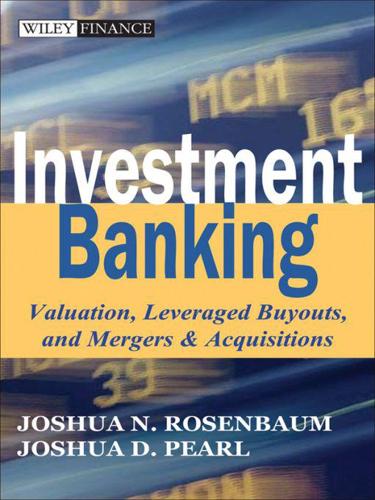
Investment Banking: Valuation, Leveraged Buyouts, and Mergers and Acquisitions
by
Joshua Rosenbaum
,
Joshua Pearl
and
Joseph R. Perella
Published 18 May 2009
See letters of credit lease legal counsel letters of credit (LC) leverage levels leverage ratios leveraged buyouts (LBO). See also Contents leveraged loan. See also bank debt levered beta predicted. See also Barra levered free cash flow. See also cash available for debt repayment LexisNexis liabilities, long-term LIBOR. See London Interbank Offered Rate LIBOR floor limited partners (LPs) liquidity London Interbank Offered Rate (LIBOR) long-term growth rate LPs. See limited partners LTM. See last twelve months M M&A. See mergers & acquisitions MAC/MAE. See material adverse change/effect maintenance capex maintenance covenants make-whole provision management buyout (MBO) Management Case management discussion & analysis (MD&A) management presentation sample mandatory amortization/repayment marginal tax rate margins market capitalization.
…
., for Q4 2008E) in the projection period and adjust the discounting for a quarter year. 105 Alternatively, ValueCo’s cost of debt could be extrapolated from that of its peers. We took comfort with using the current yield on ValueCo’s existing term loan because its current capital structure is in line with its peers. 106 A basis point is a unit of measure equal to 1/100th of 1% (100 bps = 1%). 107 The London Interbank Offered Rate (LIBOR) is the rate of interest at which banks can borrow funds from other banks, in marketable size, in the London interbank market. 108 An alternate approach is to use historical betas (e.g., from Bloomberg), or both historical and predicted betas, and then show a range of outputs. 109 For simplicity, we assumed that the market value of debt was equal to the book value. 110 Ibbotson estimates a size premium of 1.65% for companies in the Low-Cap Decile for market capitalization. 111 Depending on the long-term structural effects of the subprime mortgage crisis and ensuing credit crunch, including the ability to raise debt at historical levels, these long-established benchmarks may be revisited. 112 The “free cash flow” term (“levered free cash flow” or “cash available for debt repayment”) used in LBO analysis differs from the “unlevered free cash flow” term used in DCF analysis as it includes the effects of leverage. 113 The term “investment bank” is used broadly to refer to financial intermediaries that perform corporate finance and M&A advisory services, as well as capital markets underwriting activities. 114 These letters are typically highly negotiated among the sponsor, the banks providing the financing, and their respective legal counsels before they are executed. 115 To compensate the GP for management of the fund, LPs typically pay 1% to 2% per annum on committed funds as a management fee.
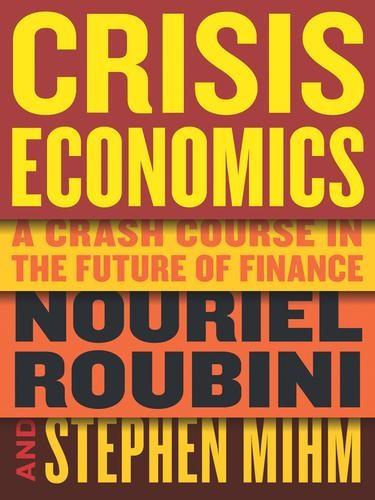
Crisis Economics: A Crash Course in the Future of Finance
by
Nouriel Roubini
and
Stephen Mihm
Published 10 May 2010
In the 1970s many Latin American governments embarked on massive economic development projects financed with foreign capital. The resulting fiscal and current account deficits were financed with loans brokered by banks in the United States and Europe. The interest rates on these foreign currency loans were linked to a benchmark short-term interest rate known as the London Interbank Offered Rate (LIBOR). When Volcker hiked interest rates, the LIBOR rate rose sharply as well, making it impossible for Latin American countries to service their debts. Even worse, the real value of these debts rose as these countries’ currencies depreciated. As a consequence, multiple governments defaulted on their debt.
…
In 2007 the seizure occurred in a more amorphous international network of financial institutions—not only in London but in New York, Tokyo, and other financial centers. This was the interbank market, where banks and other financial institutions lend their surplus cash to one another. It all takes place in cyberspace, but in a testament to London’s enduring place in financial history, the most important rate at which money is lent is known as the London Interbank Offered Rate (LIBOR). In normal times, the overnight LIBOR—for loans made for the duration of a day—is only a few basis points above the overnight policy rates set by central banks around the world. The reason for this near convergence is simple: the perceived risk of lending between established banks is only marginally higher than the risk-free lending available from central banks.
…
knowledge, of U.S. corporations Krugman, Paul Kurosawa, Akira labor land Latin America debt crisis in (1980s) panics in see also specific countries Latvia Law, John Lawrence, Joseph Lehman Brothers collapse of leverage of stock of lender of last resort central banks as, see central banks, as lenders of last resort IMF as investment banks and Morgan as lending facilities Lereah, David A. leverage of banks borrowers and compensation and of corporations defined embedded in foreign countries of hedge funds of households of insurance companies of investment banks regulation of systemic or compound liar loans LIBOR (London Interbank Offered Rate) LIBOR-OIS spread liquidity banks and central banks and investment banks and in money markets mortgages and liquidity crunch emerging economies and liquidity trap Lithuania living wills loans bridge corporate credit card foreign investment as home equity IMF Latin American debt crisis and liar LIBOR and l ong-term NINJA nonrecourse PPIP and short-term student subprime see also auto loans; collateralized loan obligations; mortgages lobbying activities local government fiscal policy and Lombard Street Lombard Street London London Interbank Offered Rate (LIBOR) Long-Term Capital Management (LTCM) Luskin, David McCulley, Paul Mackay, Charles Madoff, Bernard Maiden Lane corporations Malaysia managers Manias, Panics, and Crashes (Kindleberger) manufacturing margin calls margin requirements markets efficiencies of failure of self-regulation of Markit Group mark-to-market accounting rules Marshall, Alfred Martin, William McChesney, Jr.
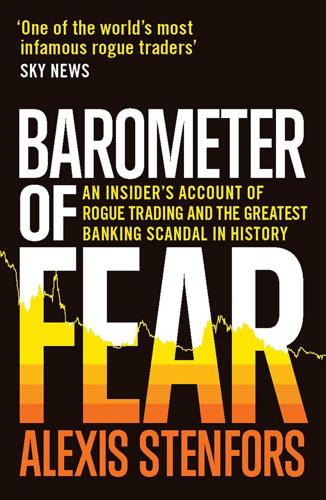
Barometer of Fear: An Insider's Account of Rogue Trading and the Greatest Banking Scandal in History
by
Alexis Stenfors
Published 14 May 2017
ABBREVIATIONS ACI Association Cambiste Internationale BBA British Bankers’ Association BBAIRS BBA Interest Rate Settlement BIS Bank for International Settlements CDO collateralised debt obligation CDOR Canadian Dollar Offered Rate CDS credit default swap CEO chief executive officer CIA Central Intelligence Agency CIBOR Copenhagen Interbank Offered Rate CME Chicago Mercantile Exchange CPI Consumer Price Index CRS cross-currency basis swap ECB European Central Bank ERM Exchange Rate Mechanism EU European Union EURIBOR Euro Interbank Offered Rate FBI Federal Bureau of Investigation FCA Financial Conduct Authority FIBOR Frankfurt Interbank Offered Rate FRA forward rate agreement FSA Financial Services Authority FX foreign exchange GDP gross domestic product HELIBOR Helsinki Interbank Offered Rate ICMA International Capital Market Association IMM International Monetary Market IRS interest rate swap ISDA International Swaps and Derivatives Association KLIBOR Kuala Lumpur Interbank Offered Rate LIBOR London Interbank Offered Rate LIFFE London International Financial Futures and Options Exchange NIBOR Norwegian Interbank Offered Rate OIS overnight index swap OPEC Organization of the Petroleum Exporting Countries OTC over the counter PIBOR Paris Interbank Offered Rate PRA Prudential Regulation Authority SEC Securities and Exchange Commission SFO Serious Fraud Office SIMEX Singapore International Monetary Exchange STIBOR Stockholm Interbank Offered Rate STIRT Short-term Interest Rate Trading TAF Term Auction Facility TIBOR Tokyo Interbank Offered Rate TIFFE Tokyo International Financial Futures Exchange INTRODUCTION ‘It’s a misunderstanding’ ‘How can the FSA be sure you will not do this again?’
…
My writing style had been heavily influenced by the trading floor lingo I had picked up over the years. Rather than a clearly constructed research plan, I sent across fragments and observations that I thought were important, and that had bothered me deeply for a while. One such observation I introduced in the heading ‘London Interbank Offered Rate (LIBOR2) manipulation’. Another was ‘Foreign exchange (FX) order books’. Both of these outlined how the foreign exchange and money markets were systematically manipulated, how it was being covered up, and how it affected people all over the world. I was mostly concerned by the fact that 99.99 per cent of people were completely unaware of the fact that it was going on.
…
MacKenzie, D. (2007) ‘The material production of virtuality: innovation, cultural geography and facticity in derivatives markets’. Economy and Society, 36 (3), 355–76. McAdams, R. H. (1997) ‘The origin, development, and regulation of norms’. Michigan Law Review, 96, 338–433. McAndrews, J., Sarkar, A. and Wang, Z. (2008) ‘The effect of the term auction facility on the London Interbank Offered Rate’. Federal Reserve Bank of New York Staff Reports, 335. McCool, G. (2009) ‘Merrill bonus names are not secret: NY judge’. Reuters, 18 March. Available from: http://www.reuters.com/article/us-bankofamerica-merrill-bonuses-idUSTRE52H7BT20090318 [accessed 21 December 2016]. Mitchell, J. D. (2001) ‘Clustering and psychological barriers: the importance of numbers’.
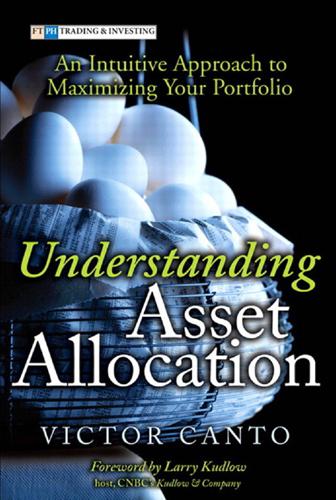
Understanding Asset Allocation: An Intuitive Approach to Maximizing Your Portfolio
by
Victor A. Canto
Published 2 Jan 2005
On the other hand, I have noticed absolute funds returns can exhibit temporary deviations from a trend, or can track the market or some aggregate returns. One simple way for investors to compensate for this is to demand an absolute strategy deliver a return in excess of the risk-free rate (such as the rate of short-term T-bills) close to or above the long-run rate of return. In practice, the average of the one-month London Interbank Offered Rate (LIBOR) plus 400 basis points is commonly used for the hurdle rate. LIBOR is a reference rate used by banks for lending. Surpassing the hurdle is clearly a sign of a superior investment strategy—one that delivers a higher return with lower volatility. The next step in the process is to determine whether a pure-alpha strategy can deliver the expected target rate of return.
…
., 89 Kerry, John, 84 large-cap stocks active management tested against passive management, 166-168 annual returns, 19 elasticity, 184, 187-189 Index 311 location effect, 190-193, 202-204, 273-274 optimal mix with small-cap stocks, 23-24, 31-32, 123 performance of, 16-18, 41-43 regulatory fixed costs, 184-185 risk measurement, 20 size cycles, 54-55 active versus passive management during, 170-172, 175, 271-272 equal-weighted versus cap-weighted indexes, 175-180 and market breadth, 168-170, 237-238 in value-timing strategy, 243-250 LBOs (leveraged buyouts), 74 legislation. See tax-rate changes leverage in pure-alpha strategy, 256-257, 261 leveraged buyouts (LBOs), 74 LIBOR (London Interbank Offered Rate), 257 lifecycle allocations for benchmark portfolio, 115-116 lifecycle funds case study, 152-157 liquidity trap, 221 LJE quantitative model, probabilities in, 134-136 local companies, 190 location cycles, 57-58 location effect, 186. See also elasticity elasticity and, 187-189 large-cap stocks and, 190-193, 202-204, 273-274 regional stock indices and, 198-202 small-cap stocks and, 193-198, 202-204, 213, 273-274 location portfolios, Sharpe ratio, 61-63 location-based asset allocation cyclical asset allocation and, 34-37, 125-126 optimal mixes, 24-25 London Interbank Offered Rate (LIBOR), 257 long-run asset allocation.
…
See also elasticity elasticity and, 187-189 large-cap stocks and, 190-193, 202-204, 273-274 regional stock indices and, 198-202 small-cap stocks and, 193-198, 202-204, 213, 273-274 location portfolios, Sharpe ratio, 61-63 location-based asset allocation cyclical asset allocation and, 34-37, 125-126 optimal mixes, 24-25 London Interbank Offered Rate (LIBOR), 257 long-run asset allocation. See also strategic asset allocation (SAA) length of sample period, 285n optimal mixes, 40-43, 118, 127, 274-275 Long-Term Capital Management (LTCM) example, 228 low cost-managed index funds, 110 LTCM (Long-Term Capital Management) example, 228 M M&As (mergers and acquisitions), 77 market allocations for benchmark portfolio, 108-115, 266-269 312 market breadth, size cycles and, 168-170, 237-238 market portfolio, 3 market risk, 19 market valuation, CEM (capitalized earnings model), 90-94 modifying for earnings growth, 94-96 performance indicators and, 96-100 market-timing strategy, value-timing strategy versus, 243-250, 276-277 markets, correlation of, 186 mean return, Sharpe ratio, 2 mean-reversion hypothesis, 4, 18, 46, 59 mergers and acquisitions (M&As), 77 Meriwether, John, 228 Microsoft, 84 Milkin, Michael, 75-76 mobile factors, immobile factors versus, 187-189, 273-274 mobility, elasticity and, 208 monetary policy style cycles and, 55-56 tax rates and, 88-90 Monte Carlo simulations, 4-6 N national factor, 191 negative incentives, 81 new-economy view, mean-reversion hypothesis versus, 59 NIPA (National Income and Product Accounts), 77 Nixon, Richard, 89 nominal interest rate, 128 O-P oil prices global economy and, 219-224 location effect and, 200-201 supply shift and tax increase example, 216-219 OPEC (Organization of the Petroleum Exporting Countries), 220 P/E ratio, 79, 90-94 passive management, 164.

The City
by
Tony Norfield
The UK enjoys significant economic gains from hosting the biggest international banking centre, and its own banks also take an important share of this business.28 Furthermore, the nature of the UK banking and credit market is very different from that of the US. Far from US dollar LIBOR – the London Interbank Offered Rate for loans between banks in US dollars – being ‘effectively the internationally “traded version” of the Fed’s interest rate’,29 it is a rate that represents a financial market that does not exist in the US. For historical reasons,30 the US has no equivalent to the UK’s highly developed interbank money market for unsecured loans of different maturities in US dollars, let alone in other currencies.
…
While the bulk of eurocurrency business was shorter-term, some 30 per cent of bank deposits and 40 per cent of loans in the 1970s, for example, were for longer than three months.55 This was because the London market had (and has) a large number of banks performing these wholesale market operations. That is why there is a London Interbank Offered Rate (LIBOR), which gives the interest rates for borrowing in this active interbank market in unsecured term loans, and why there is no such thing as a ‘NYIBOR’ for New York.56 Banking centres in Europe that might have become rivals to London, such as Paris, were eclipsed by strong Anglo-American economic and political links, and by domestic political events and policy decisions.57 Above all, there was the more consistent promotion of international financial business by the British authorities, which included an implicit promise not to disturb financial interests with any changes in legislation.
…
Gupta, Partha Sarathi 1975, Imperialism and the British Labour Movement, 1914–1964, London: Macmillan Press Newsinger, John 2006, The Blood Never Dried: A People’s History of the British Empire, London: Bookmarks Index Page numbers in bold refer to charts, page numbers in italic refer to charts. 1 per cent, the 76, 102 ABN AMRO 51 ABP 82 Acland, Richard 32 advances 78 Afghanistan 220 Amsterdam 51 Anglo-American euromarkets 40–4 Anglo-American financial relationships 21, 27–8, 36, 59 transition, post-1945 29–30 Anheuser Busch InBev 121 anti-monopoly policies 119–20 Apple 77, 118, 118–19, 121–2, 155 Arab-Israeli War, 1973 55 Asian financial crisis, 1997–98 101, 166–7 Asian Infrastructure Investment Bank (AIIB) 18, 226 asset managers 80–1 austerity 152, 219 Australia 31, 58, 60, 109, 206, 226 automobile production 121 Aviva 82 Bahamas, the 209 balance of payments 187, 188, 200, 203, 207 balance of power 52 bank deposits 93 Bank for International Settlements (BIS) 108, 191, 192, 214 bank loans, international 66 Bank of America 125 Bank of America International xi Bank of England 44, 47, 56–7, 62, 64, 99–100, 116, 158–9, 173 Bank of Japan 157–8 banking capital 136 banks American 132–3, 193 American fragmentation 40 American regulation 36 assets 4, 85, 122–3, 141–4, 143, 214 borrowing 206–8 broking activity 80 business 79–80 Chinese 225–6 City of London trade 45 clients 79 creation of revenue-earning assets 137, 137–8 credit creation 83–5, 86, 104 dealing revenues 146 dealing spreads 191 derivative assets 140–1 Eurodollar deposits in American 41–2 existing loan assets 140 financial assets 139–47, 143 financial power 92 financial services revenues 191–7, 192, 194, 196 fines 79–80 foreign exchange deals 79 foreign exchange turnover 193–5, 194 fund buy backs 198 Hilferding’s analysis 92–5 interest-bearing capital advances 79–80 international assets 108 international business volume 192–3 Islamic 221 lending 142–4, 208–10 leverage ratios 131–4, 133, 134, 138 liabilities 108, 141, 141–4, 143 monopoly position 139 net interest income 138 networks 205–6 offshore operations 208–9 private 116 reserve requirements 40 role of 9, 136 short-term money-market instrument assets 144 start-ups 139 transaction volume 134–5 UK 4, 116, 134, 191–7, 192, 194, 196, 206–10, 214 UK assets and liabilities 141–4, 143 unsecured loans between 46 Banque de France 100 Barclays Bank 4 Barclays Global Investors 125 Barclays-Lehman deal, 2008 125 Barclays plc 123, 125 Bayly, Christopher 30 beer production 121 Belgium 1 Berkshire Hathaway 81–2 Berlin Wall, fall of 63 Bevan, Aneurin 32 Big Bang, the xi, 7, 54, 66–70 BlackRock 80, 125 Blair, Tony 64, 112 bond markets 49, 146 bond ownership 102, 144, 146 bond securities, characteristics 86 booms 104 borrowed money 78 borrowing banks 206–8 bond-market 146 interest rates 146 repo 46 risk 130 UK 201–2, 204–5 UK bank 206–8 BP plc 3, 111–12, 114, 190 Brazil 18, 106, 107, 222 Bretton Woods world monetary system 10, 26–7, 29, 31, 39 break up of 16, 52, 53, 66 BRICS 222–3 British Empire 23–6, 24, 25, 27, 28, 30–3, 52, 105 brokers 68, 80, 96, 99 Browne, John 112 Brown, Gordon 210 Brunei 220 Bündchen, Gisele 164–5 Bundesbank 57, 62 Burn, Gary 43, 74 Bush, George W. xii busts 104 Cameron, David 211, 220–1 Canada 4, 31, 60, 66 capital access to foreign 68 accumulation 19, 149 and financial securities 89–90 and imperialism 19–20 interest-bearing 77–8 manufacturing 43 money-dealing 79 organic composition of 148–9 ownership 93 parasitism 228 productive 90 capitalism crisis 12, 215 and finance 76 financial mechanism of 9 and financial system 8–9 global 4 and monopoly 100 moribund 159–60 and the rate of profit 147–50 and the state 111–15 UK 44–7, 49 capitalist business 74 capitalist market system, and finance xiii capitalist power 86 capitalist production 9 rate of profit measurement 153 capital movement, national controls on 51 capital values, destruction of 151–2 Carlsberg 121 Carney, Mark 213–14 cash flows, financial securities 88 Cayman Islands, the 209, 211 central banks 5, 47, 83, 85, 116 CHAPS 84 Chesnais, François 19–20 Chicago 37, 42, 185, 195 China 2, 15, 171 automobile production 121 bad debt 224 banks 225–6 challenge of 222 challenge to America 17–18 currency trading 225–6 cyber attacks 18 equity market capitalisation and turnover 181, 182 export prices 224–5 FDI 107–8 financial services exports 176–7 foreign direct investments 18 foreign exchange reserves 167, 224 foreign exchange trading 109 FX swap arrangements 225 GDP 106, 106–7, 224 growing financial role 73 military spending 109 millionaires 99 mobile phones 122 New Development Bank funding 18, 222–3 rise of 18, 221–7 and Russia 223 security threat 18 status 110, 111 stock exchange prices 182 stock exchanges 18 US dollar-denominated debt 18, 221 wages 155 China Mobile 222 China Resources Snow Breweries 121 Churchill, Winston 60 as Chancellor of the Exchequer 23, 24–6 Iron Curtain speech 29 ‘City–Bank of England–Treasury’ nexus 54 City bonuses 211 City of London 37, 228 advantages 37, 40, 47, 49–50, 52 casino analogy xii Chinese currency trading 225–6 competitiveness 68 deregulation xii, 7 development 44–7 domination 194–5 earnings 49 and economic policy 8 euromarket 44–5, 47–51 European rivals 46–7, 51 expansion 40 financial system 37–40 geographical scope 37 Gowan’s analysis 11–12 growth 44–5 international reach 4 international role 47–51, 73–4 market 45 networks 205–6 operations 185–212 Panitch and Gindin’s analysis 15 relationship with America 73 role xii–xiii, 45, 49, 69 status 28, 35, 50, 185, 206, 210–11 strength 99–100 Clinton, Bill 122 Clinton, Hillary 18 clipping coupons 97–8 Cold War, the 37 Collateralised Debt Obligations (CDOs) 90, 140 colonial marketing boards 32 commercial capitalists 76 commodities, circulation of 78 Common Agricultural Policy 58 communism, threat of 30 Competition Commission 119–20 constructive parasitism 213–14 cooperation 16, 28 corporate control 183 corporations headquarters 114–15 nationality 111–13 stock market listings 113 cost of living 155 costs 77 Court of Justice, European Union 216 credit bubble 156 credit creation 21, 76, 150–1 banks 83–5, 86, 104 currency dealing costs 162 seigniorage 163–6 and trade 162–3 current account balance, UK 188–90, 189, 190 current account deficit, UK 200, 202, 211, 217 current account deficit, USA 167–8 current account surplus, UK 33, 34, 69 cyber attacks 18 Czech Republic 10 Darling, Alistair 125 dealing costs 162 dealing revenues 146 dealing room screens xi dealing spreads 191 debt crisis 151–2 Deepwater Horizon oil spill 190 de Gaulle, Charles 34, 47 Dell 77 Denmark 1 deregulation 45, 54, 65–70 derivatives 140–1 dealing in 142 definition 141 money-market 141 over-the-counter 185, 195, 196 derivatives markets 135 Deutsche Bank 215 Dollar–Wall Street Regime 12 domestic politics, economics and 217–19 Dubai 172 Dublin, International Financial Services Centre 178 earnings, City of London 49 Economic and Monetary Union (EMU) 59–61 advantages 63 five conditions for membership 64 threat to UK financial power 64–5 UK opt-outs 61–4 Economic Consequences of Mr Churchill, The (Keynes) 23–4 Economic Consequences of the Peace, The (Keynes) 23 economic crises 151–2 economic growth 53, 60–1 economic influence 3 economic output 106 economic policy 8 economic power 101 concentration of 91–2 financial privileges of 7 and financial securities 85–92 global 3–6 hierarchy of 97 manifestation of 88–92 UK 2 economic privilege 104 economic relationships, in global capitalism 4 economics, domestic politics and 217–19 economic system, dysfunctional 8 elevators and escalators 121 employment, financial sector 186 End of History thesis 15–16 English language, role of 37 equity capital, valuation 179 equity markets 179–81, 181–3 capitalisation and turnover 181–3, 181 equity securities 86 eurobonds 41, 47–8 euro crisis, 2010 62, 65 eurocurrency bonds 49 eurodollars 40–1, 43, 48 euro financial system 72–3 euromarkets 28, 40, 51, 52, 66 Anglo-American 40–4 City of London 44–5, 47–51 definition 40 growth 40, 42, 43 interest 41 operation 40–1 origins 42–3 regulation 40–1 scale 43 UK earnings 43–4 European Central Bank (ECB) 64, 65, 72, 100, 159, 173 European Commission 162 European Economic Community (EEC) 33, 34, 57–8 European Free Trade Association (EFTA) 34 European integration 58 European Monetary System 67 European Union 16–17, 21, 54 anti-monopoly policies 120–1 Court of Justice 216 financial policy 69–70 financial services sector integration 72–3 GDP 70 UK membership referendum 218–19 UK opt-outs 61–2 euro system 57 euro, the 162–3, 164, 165, 166 status 72–3, 109 exchange controls, abolition of 54, 66–7 exchange rates 156, 163 Exchange Rate Mechanism (ERM) 57, 62 existing loan assets 140 exorbitant privilege 166–9 Facebook 5, 91 Federal Deposit Insurance Corporation charge (US) 41 Federal Reserve System (US) 40 fictitious capital 87, 88, 90, 91, 183 ownership 92 pricing 147 and securities prices 145 as wealth 147 fictitious deposits 83 finance access to 6 and capitalism 76 and capitalist market system xiii definition 5 and imperialism 8–10 and power 7–8 role of 161 finance capital 92–5 finance ministries 5 financial account, UK 197–200, 199 balance of payments 200 flows 198–9, 199 surplus 199 financial aristocracy 90, 96 financial assets banks 139–47, 143 ownership of 102–3 and profit 137 financial capitalists 78 financial crises 6, 10, 19, 101–2 America and 12 causes 147–8 and profit and profitability 135 financial crisis, 2007–8 20, 65, 72, 132, 134, 154, 157–8, 168, 198, 214 financial dealing 76 financial excess 154 financial institutions, and money-capitalists 76–7 financial market shares 70–3, 71 financial markets, state policy 65–70 financial operations xiii financial parasitism 95–7, 227–8 financial policy American 11, 65–6, 67–8 European Union 69–70 Japanese 67 UK 14, 65–70 financial power 101, 109 American 6, 11–12, 14–15, 55, 170–3, 183 banks 92 EMU threat to 64–5 global 3–6 individuals 90–1 UK 2, 3, 64–5 financial prices 8 financial privilege 7, 22 financial revenues 144–6 financial scandals 216 financial sector 5 employment 186, 213–14 scale 4, 213–14 tax revenues 186 financial sector capitalists 91 financial securities 21, 104 as assets 91–2 and capital accumulation 89–90, 139–40, 179 cash flows 88 cash value 89 characteristics 86 creditors 88–9 and economic power 85–92 markets 89 price 87–8, 145–6, 147 price currency 181 role of 76 and surplus value 144–6 value xi, 87–8 financial services exports 173–9, 175 financial services revenues 190–7, 192, 194, 196 Financial Stability Board 214 financial system 4, 4–5, 20, 104, 227 and capitalism 8–9 growth 75–6 hierarchy 6, 105–11, 111 and imperialism 8–10 state regulation 115–16 Financial Times xii, 75, 214 Top 500 global corporations 3 financialisation 20 First World War 23–6, 29 fixed assets, and profit 137 floating-rate notes 48 Ford Motor Company 5 Ford Motor Credit 5 foreign currency risk 168 foreign direct investment (FDI) American 3, 42 Chinese 18 outward 107–8 and status 107–8 UK 3, 66, 200, 205 foreign exchange deals, banks 79 foreign exchange (FX) market 71, 72, 193–5, 194 foreign exchange trading 108–9, 123 foreign investment revenues 9–10, 22, 189–90 foreign operations, expanding 101 foreign securities 47–8 Fox Broadcasting Company 113 France 2, 4, 13, 63, 93 China policy 226 FDI 107 GDP 106, 107 international banking index 108 international banking position 192, 192 Keynesianism in one country 67 military spending 109 monetary policy 67 seigniorage 165 trade pattern 60–1, 61 Frankfurt 51, 64, 72 free market 13, 15–16 FTSE 100 113 Fukuyama, Francis 15–16 functioning capitalists 77–8 G4S 120 GDP Chinese 224 European Union 70 and status 106 UK 4, 106, 107, 155–6 GE Capital 5 General Electric 5 General Motors 121 Gent, Chris 180 Germany 2, 4, 63, 66, 94–5, 107, 108, 109, 110, 111 China policy 226 domination 64 equity market capitalisation and turnover 181, 182 GDP 106, 107 Hilferding’s analysis 93–95 international banking share 71, 71 reunification 62, 63 seigniorage 165 status 54 trade pattern 60–1, 61 GIC 177 Gindin, Sam 14–17, 18 Glass-Steagall legislation 36 Glencore 122 global capitalism, economic relationships in 4 global finance 2 globalisation 13, 114 global market trading, location 49 global system, centre of gravity 73–4 global value chains 118 Goldman Sachs 161, 222 gold prices 39 gold standard 23–6, 54 Google 5 government debt 87, 89 governments, financial role 5 government spending, cuts 59 Gowan, Peter, The Global Gamble 11–12 Greece 65, 72, 101, 151 greed 148 Group of 5, the 68 Group of 7, the 70, 71 Harper, Tim 30 Harvey, David 19 Healey, Denis 58–9 Heath, Edward 57–8 hedge funds 12, 81, 131 Heineken 121 Helleiner, Eric 12–14, 70 Hilferding, Rudolf 136 Finance Capital 92–5 Holcim 75 Hong Kong 18, 176–7, 206, 209 household debt 103 Howe, Geoffrey 66 HSBC 3–4, 225 idiocy 148 Iksil, Bruno 135–6 imperialism 5–6, 160, 161–84 American 12, 14–15, 166–9 and capital 19–20 currency 162–6 definition 117–18 domination network 21 economic definition 116–17 economic mechanism 117–21 equity markets 179–83 exorbitant privilege 166–9 and finance 8–10 financial power 170–3 financial services exports 173–9, 175 Lenin’s analysis 117–18 methods 117, 118 and monopoly 100, 117–21 parasitism of 97–9 power 126 predatory 19 and the state 119 UK 7–8, 186, 228 imports 155 India 18, 30, 222 GDP 106, 107, 224 individuals, financial power 90–1 Indonesia 101 inflation, 1970s 58 inflation rates 132, 164 innovation 135–6 insurance companies 81–2, 99 insurance premiums 81–2 insurance revenues 191 intellectual property rights 126 interbank market 46 interbank payments, value 84 interbank payment systems 84 interest and interest rates 78, 88, 130, 132, 138, 142 American 168 bond-market borrowing 146 derivatives turnover 195, 196 ERM fiasco 62 euromarkets 41 and profit 156–7 UK 203 interest-bearing capital 77–8 bank advances 79–80 dealing in 79–80 division of labour 99 Lenin’s analysis 98–9 Marx on 95–7 parasitism 95–7 Interest Equalisation Tax (US) 39–40, 48 international banking index 108 international banking share 50, 70–1, 71 international community 117 international companies 112 international finance, drivers 51 international financial revenues, UK 10 International Financial Services Centre, Dublin 178 international financial transactions 98 international investment position, UK 200–1, 201 International Monetary Fund 14, 19, 27, 29, 56, 58–9, 73, 101, 164, 223 investment, advance of money 86–7 investment mandates 80 investment returns 131 Iran 59, 113, 172 Iraq, invasion of, 2003 7, 220 Ireland 4, 178, 205 Islamic bonds 220–1 Islamic finance 22, 219–21 Islamic Finance Task Force 221 Italy 4, 106, 107, 226 Japan 2, 4, 15, 38, 93, 163, 167 equity market capitalisation and turnover 181, 182 financial crisis 71 financial policy 67 foreign exchange trading 109 GDP 106, 107 international banking index 108 international banking share 50–1, 71, 71 Offshore Market 67 seigniorage 165 threat of 29 zaibatsu 94 jobbers 68 Johnson Controls 121 JP Morgan Chase 135–6 Juncker, Jean-Claude 175 Kennedy, John F. 34 Keynesianism in one country 67 Keynes, John Maynard 23–4, 30, 35 labour exploitation of 74 international division of 99 surplus 149 labour costs 98, 118–19, 155 Labour Party Conference, 1956 32 Tanzanian groundnut scheme 32 Lafarge 75 Lafont, Bruno 75 Lear Corporation 121 Lee, Jennie 32 legal tender 115 Lehman Brothers 125, 210 lender of last resort 116 Lend-Lease policy 29 Lenin, V. I. 97–9, 117–18, 160 Lenovo 122 leverage 22, 130–6, 133, 134, 138, 159 leverage ratios American 131 banks 131–4, 133, 134, 138 liberalisation 13–14 Libya 2 living standards, working-class 154–5 London, geographical location 37 London Interbank Offered Rate (LIBOR) 15, 46, 48, 216 London Stock Exchange 34, 113, 182, 221 Big Bang reform 66–70 Luxembourg 4, 70, 174–5, 178, 184, 205, 225 Maastricht Treaty 61 Macmillan, Harold 34 Major, John 61 major powers 6 Mannesmann 180 manufacturing capital 43 market confidence 147 market domination see monopoly market system 20 market, the, laws of 104 Marx, Karl 87, 136, 183, 228 Capital 96, 98 on parasitism 95–7 on the rate of profit 148–9 means of production, value 148 mergers and acquisitions 75, 91–2, 122, 179–81, 183 Merrill Lynch 125 Metro Bank 139 Microsoft 118, 121–2 mid-Atlantic policy 218.
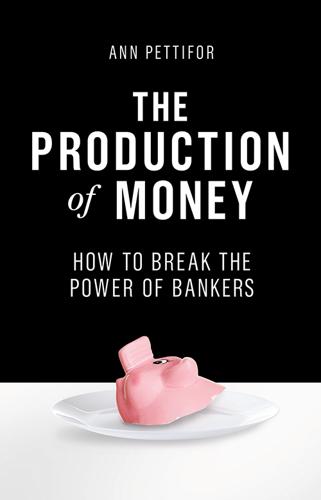
The Production of Money: How to Break the Power of Banks
by
Ann Pettifor
Published 27 Mar 2017
Bankers make decisions about the rate of interest on a loan based on their assessment of the riskiness of the borrower, and on the rate of return they seek for themselves, but also on what other creditors are offering borrowers in the market place. Given that the banking sector is oligopolistic, there is in reality very little competition and instead a great deal of collusion on decisions about rates. How rates are ‘fixed’ by private, commercial bankers The LIBOR – London Interbank Offered Rate – is critical to determining the rate of interest on $800 trillion–worth of global financial instruments, including millions of mortgages. In 2008 the Wall Street Journal began drawing attention to the manipulation of LIBOR. The scandal erupted in 2012 and brought to the attention of the general public, but also to economists and regulatory authorities, the role played by the British Bankers Association (a cartel) and back office bank staff – the ‘submitters’ – in ‘fixing’ the price of inter-bank loans.
…
Instead, the rate was fixed by back office staff determined to make money for the bank and to ensure their annual bonus exceeded the last year’s bonus. The Economist examined ‘The Rotten Heart of Finance’: The most memorable incidents in earth-changing events are sometimes the most banal. In the rapidly spreading scandal of LIBOR (the London Interbank Offered Rate) it is the very everydayness with which bank traders set about manipulating the most important figure in finance. They joked, or offered small favours. ‘Coffees will be coming your way,’ promised one trader in exchange for a fiddled number. ‘Dude. I owe you big time! … I’m opening a bottle of Bollinger,’ wrote another.
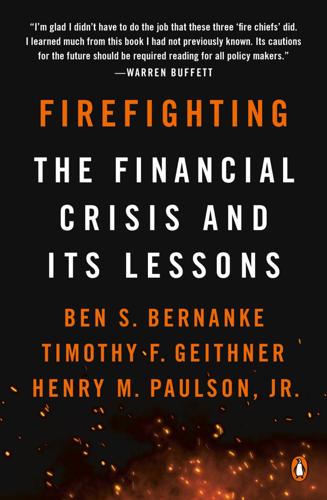
Firefighting
by
Ben S. Bernanke
,
Timothy F. Geithner
and
Henry M. Paulson, Jr.
Published 16 Apr 2019
ACRONYMS ABCP asset-backed commercial paper ABS asset-backed securities AMLF Asset-Backed Commercial Paper Money Market Mutual Fund Liquidity Facility CAP Capital Assistance Program CDCI Community Development Capital Initiative CDS credit default swaps CET1 Common Equity Tier 1 CPFF Commercial Paper Funding Facility CPP Capital Purchase Program DGP Debt Guarantee Program DIF Deposit Insurance Fund EESA Emergency Economic Stabilization Act of 2008 FDIC Federal Deposit Insurance Corporation FHA Federal Housing Administration FHFA Federal Housing Finance Agency GDP gross domestic product GSEs government-sponsored enterprises HAMP Home Affordable Modification Program HARP Home Affordable Refinance Program HUD U.S. Department of Housing and Urban Development Libor-OIS London Interbank Offered Rate–Overnight Indexed Swap rate MBS mortgage-backed securities MLEC Master Liquidity Enhancement Conduit MMF money market fund NBER National Bureau of Economic Research PDCF Primary Dealer Credit Facility PPIP Public-Private Investment Program QE Quantitative Easing SAAR seasonally adjusted annual rate SBA 7(a) Small Business Administration 7(a) Securities Purchase Program SCAP Supervisory Capital Assessment Program SDR special drawing right SPSPAs Senior Preferred Stock Purchase Agreements TAF Term Auction Facility TAGP Transaction Account Guarantee Program TALF Term Asset-Backed Securities Loan Facility TARP Troubled Assets Relief Program TLGP Temporary Liquidity Guarantee Program TSLF Term Securities Lending Facility CHARTING THE FINANCIAL CRISIS U.S.
…
Bank credit default swap spreads and Libor-OIS spread Sources: Libor-OIS: Bloomberg Finance L.P.; bank CDS spreads: Bloomberg Finance L.P., IHS Marki Notes: Credit default swap spreads are equal-weighted averages of JPMorgan Chase, Citigroup, Wells Fargo, Bank of America, Morgan Stanley, and Goldman Sachs. Libor-OIS spread used throughout is the spread between the 3-month London Interbank Offered Rate and the 3-month USD overnight indexed swap rate. ARC OF THE CRISIS Home prices peaked nationally in the summer of 2006, then fell rapidly—eight major cities had declines of more than 20 percent by March 2008. Change in S&P CoreLogic Case-Shiller Home Price Indexes for 20 cities and U.S., from U.S. peak in July 2006, not seasonally adjusted Sources: S&P CoreLogic Case-Shiller Home Price Indexes for 20 individual cities and National Home Price Index via Federal Reserve Economic Data (FRED) ARC OF THE CRISIS Stress in the financial system built up gradually over late 2007 and early 2008, as mortgage troubles and recession fears increased.
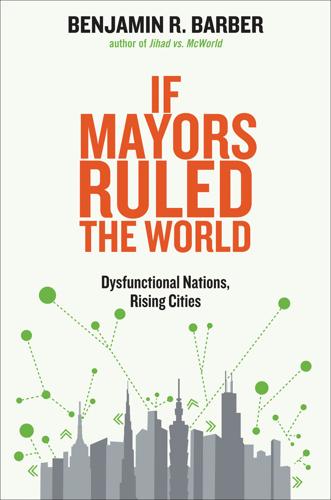
If Mayors Ruled the World: Dysfunctional Nations, Rising Cities
by
Benjamin R. Barber
Published 5 Nov 2013
See Adewale, Ayodele La Guardia, Fiorello, 86 LAMN (Los Angeles Microfinance Network), 230 Latin America: inequality in, 184; networks in, 120; participatory budgeting in, 304–306 Latino access to parks, 206 Law of the Sea Treaty, 159 Lazika, Georgia, 16 Leadership in Energy and Environmental Design (LEED) project, 319 League of Historical Cities, 118–119, 293 League of Nations, 19, 158 Le Corbusier, 44, 46, 193, 367n9 Lee Kuan Yew, 141–142, 234 LEED (Leadership in Energy and Environmental Design) project, 319 Lesy, Michael, 29, 37, 38 Levi, Carlo, 37–38, 69, 150, 368n17 Le World e.gov Forum, 263, 391n43 LIBOR (London Interbank Offered Rate), 186, 379n32 Libya NATO intervention, 375n13 Lichtenberg, participatory budgeting, 308, 309 Lindsay, John, 83–84, 96 Linzey, Thomas, 324–325 Listening, 282, 341 Liu Xiaobo, 259, 280, 284 Livingstone, Ken, 85–86 Local Governments for Sustainability. See International Council for Local Environmental Initiatives London: congestion measures, 197; parks, 45–46; vices, 34, 40. See also Johnson, Boris London Interbank Offered Rate (LIBOR), 186, 379n32 Los Angeles: carbon emissions, 319; inequalities in transportation, 195, 196; mitigation, 230–233; participatory budgeting, 306, 396n14 Los Angeles Microfinance Network (LAMN), 230 Lovelock, James, 17–18 Lübeck in Hanseatic League, 109 Luzhkov, Yury, 86, 172–174, 331, 400n48 Ma, Yo-Yo, 272, 287–288 MacArthur Park, 232–233 MAD (mutual assured destruction) strategy, 127 Mafia, 50–52, 107–108 Mailer, Norman, 10, 27, 37 “Make-work” jobs, 200 Malls, 44–45, 47, 276 Market fundamentalism, 226, 227 Marketplace, 14–15, 16 Market privatization of digital media, 254 Martindale, Don, 65 Maslin, Paul, 84 Masur, Kurt, 287 Mau, Bruce, 46–47, 366n46 Mayer, Marissa, 220 Mayors, 83–102; ambitions, 94–95, 98–99; characteristics, 87–100; corrupt, 89; expectations, 92–93; as homeboys, 98; how cities shape, 100–102; humor, 89–90; as managers, 92; mobilization of relationships by, 93; and NRA, 89; personal engagement by, 95–98; personality, 85–86, 88–89, 99–100; popularity, 84–85; pragmatism, 90–92; unique role, 350–352; work of, 86–87.
…
In the summer of 2012, Stockton, California, a city of over 800,000, led a number of California cities in filing for bankruptcy, in effect declaring its impotence in the face of financial forces it could not control. Detroit is also bankrupt, its local government in receivership. In Baltimore, Maryland, with unemployment climbing and revenues down, the city found itself a victim of the manipulation of a key interest rate (the London Interbank Offered Rate) by global banks such as Barclays, over which it could exert no influence—other than through lawsuits that lead to prolonged and costly court battles.32 Syracuse, a typical New York State rustbelt city, recently appealed for a state bailout rather than accept Governor Andrew Cuomo’s proposal to push its pension costs into the future.
…
The Correctional Association is an NGO focused on the criminalization of youth behavior. Its work includes a partnership with the National Black Theater in presenting Bryonn Bain’s play Lyrics from Lockdown in 2013, typical of the integration of art and politics in the city (see Chapter 10). 32. The so-called LIBOR or London Interbank Offered Rate is a global benchmark for many other rates used by banks, municipalities, and others around the world. Cities do “rate swaps” as part of their financing at an interest pegged to LIBOR. By illegally manipulating the rate during the fiscal crisis, banks prevented cities like Baltimore from getting the full interest due them on their swaps.
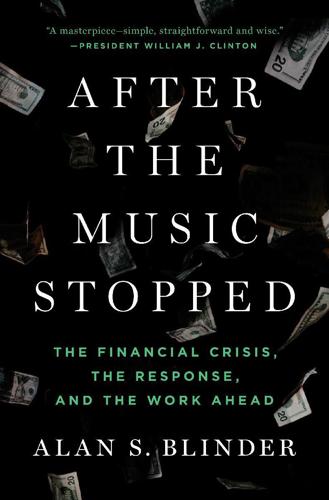
After the Music Stopped: The Financial Crisis, the Response, and the Work Ahead
by
Alan S. Blinder
Published 24 Jan 2013
Never Again: Legacies of the Crisis Notes Sources Index LIST OF ACRONYMS AND ABBREVIATIONS ABCP: asset-backed commercial paper ABS: asset-backed securities AIG: American International Group AIG FP: AIG Financial Products AMLF: Asset-Backed Commercial Paper Money Market Mutual Fund Liquidity Facility ANPR: Advance Notice of Proposed Rulemaking ARM: adjustable-rate mortgage ARRA: American Reinvestment and Recovery Act (2009) BofA: Bank of America CBO: Congressional Budget Office CDO: collateralized debt obligation CDS: credit default swaps CEA: Council of Economic Advisers CEO: Chief Executive Officer CFMA: Commodity Futures Modernization Act (2000) CFPA: Consumer Financial Protection Agency CFPB: Consumer Financial Protection Bureau CFTC: Commodity Futures Trading Commission CME: Chicago Mercantile Exchange CP: commercial paper CPFF: Commercial Paper Funding Facility CPI: Consumer Price Index CPP: Capital Purchase Program DTI: debt (service)-to-income ratio ECB: European Central Bank EMH: efficient markets hypothesis ESF: Exchange Stabilization Fund FCIC: Financial Crisis Inquiry Commission FDIC: Federal Deposit Insurance Corporation FHA: Federal Housing Administration FHFA: Federal Housing Finance Agency FICO: Fair Isaac Company FOMC: Federal Open Market Committee FSA: Financial Services Authority (UK) FSLIC: Federal Savings and Loan Insurance Corporation FSOC: Financial Stability Oversight Council G7: Group of Seven (nations) GAAP: generally accepted accounting principles GAO: Government Accountability Office GDP: gross domestic product GLB: Gramm-Leach-Bliley Act (1999) GSE: government-sponsored enterprise H4H: Hope for Homeowners HAFA: Home Affordable Foreclosure Alternatives Program HAMP: Home Affordable Modification Program HARP: Home Affordable Refinancing Program HAUP: Home Affordable Unemployment Program HHF: Hardest Hit Fund HOLC: Home Owners’ Loan Corporation HUD: Department of Housing and Urban Development IMF: International Monetary Fund ISDA: International Swaps and Derivatives Association LIBOR: London Interbank Offer Rate LTCM: Long-Term Capital Management LTRO: Longer-Term Refinancing Operations LTV: loan-to-value (ratio) MBS: mortgage-backed securities MOM: my own money NBER: National Bureau of Economic Research NEC: National Economic Council NINJA (loans): no income, no jobs, and no assets NJTC: new jobs tax credit OCC: Office of the Comptroller of the Currency OFHEO: Office of Federal Housing Enterprise Oversight OMB: Office of Management and Budget OMT: Outright Monetary Transactions OPM: other people’s money OTC: over the counter OTS: Office of Thrift Supervision PDCF: Primary Dealer Credit Facility PIIGS: Portugal, Ireland, Italy, Greece, and Spain QE: quantitative easing Repo: repurchase agreement S&L: savings and loan association S&P: Standard and Poor’s SEC: Securities and Exchange Commission Section 13(3): of Federal Reserve Act SIFI: systemically important financial institution SIV: structured investment vehicle SPV: special purpose vehicle TAF: Term Auction Facility TALF: Term Asset-Backed Securities Loan Facility TARP: Troubled Assets Relief Program TBTF: too big to fail TED (spread): spread between LIBOR and Treasuries TIPS: Treasury Inflation-Protected Securities TLGP: Temporary Liquidity Guarantee Program TSLF: Term Securities Lending Facility UMP: unconventional monetary policy WaMu: Washington Mutual PREFACE When the music stops . . . things will be complicated.
…
In any case, the bond bubble, which was predicated on blissfully ignoring risk, ended with a bang on August 9, 2007. That faith in counterparties started to evaporate on that day is evidenced by the sharp rise in interbank lending rates. The key rate that everyone watches is LIBOR—the London Interbank Offer Rate—which indicates what one big bank charges another for short-term lending. This is a market restricted to the big boys: HSBC lending to Citibank, and so on. Was there actually a risk that such august financial giants might fail to repay overnight loans? The risk premium reflected in LIBOR said yes.
…
See also Wells Fargo Krugman, Paul, 33, 181, 225, 245 Lacker, Jeffrey, 111 Lagarde, Christine, 420–21 Leamer, Ed, warning about crisis, 92 Lee, Mike, 362 Leeson, Nick, 62 Lehman Brothers, 119–28 asset size, 111 bailout, rejection by Fed, 100–101, 122, 123–28, 146 bailout as illegal, 126–27 collapse, as beginning of economic crisis, 3–4, 19–21, 127–28, 168, 171 collapse of, 52, 125 commercial real estate exposure of, 120 history of, 119–20 leverage ratio of, 52, 121 mortgage-related holdings and decline of, 89, 120, 121, 125, 127 rejection by other banks, 122–24 Reserve Primary Fund, 143–44 run on bank, cause of, 53 and UK financial crisis, 168 Lender of last resort, Fed as, 93–94, 98 Leverage, 47–55 by banks, normal use, 50, 272 and capital injection process, 197–98 dangerous ratios, 47, 50–52 excess, negative impacts of, 47–48, 52, 435 financial returns, illustration of, 48–49 against home, problem of, 37–38, 47–49 ratio, meaning of, 37 short-term borrowing by investment banks, 52–53 stock options example, 53–54 structured investment vehicles (SIVs) by banks, 50–52 synthetic, derivatives as, 53–55, 281 Levitt, Arthur, derivatives regulation failure, 63 Lewis, Ken, 122, 152–53, 164. See also Bank of America Liar loans, 69, 70 Libertarians, Federal Reserve chairmen as, 57, 57n LIBOR (London Interbank Offered Rate), 70n financial collapse, sign of, 91 Lincoln, Blanche, 313–14 Liquidity crisis. See also Bailouts AIG, 135 Bagehot principal, 94, 97, 104 Bear Stearns, 102–5 danger of, 104 Fed initial actions, 93–96 insolvency versus illiquidity, 103–4 preventing, regulatory needs, 271–72, 294–95, 308 Loans asset purchase with.
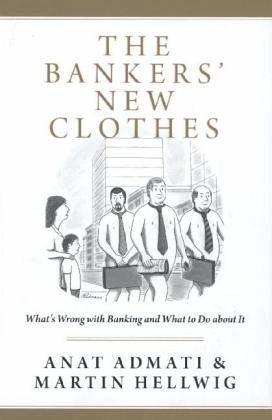
The Bankers' New Clothes: What's Wrong With Banking and What to Do About It
by
Anat Admati
and
Martin Hellwig
Published 15 Feb 2013
In line with our previous assertion that runs do not come out of the blue, the withdrawals were concentrated in institutions that were known to be in trouble, such as U.S. investment banks, or that subsequent developments would show to be in trouble because they had excessive leverage, such as Dexia in France or Hypo Real Estate in Germany. However, less risky institutions such as Aareal Bank in Germany were also hit (see Expertenrat 2011). 13. As banks came to be perceived as very risky, interest rates for unsecured lending rose dramatically. One example is the behavior of the London interbank offered rate (LIBOR), an index for the rates that London banks charge each other in unsecured borrowing and lending. Before August 2007, the difference between LIBOR and an interest rate for lending that was considered riskless was around 10 basis points (0.01 percent). On September 14, 2007, the day that the Bank of England announced emergency funding for Northern Rock, one of the largest mortgage lenders in the United Kingdom, the difference reached 85 basis points.
…
Instead, it’s increasingly evident that these institutions instead [sic] elevate the interests of the most powerful interest groups over collective interests, and neglect long-term primary needs.” 67. See Norimitsu Onishi and Ken Belson, “Culture of Complicity Tied to Stricken Nuclear Plant,” New York Times, April 26, 2011. THIRTEEN Other People’s Money 1. For the full letter, see http://www.bbc.co.uk/news/business-18678731, accessed October 15, 2012. 2. LIBOR, the “London interbank offered rate,” is not actually quoted in any market but is based on interest rates reported by participating banks. If traders manipulate their reports, this can change the interest on all LIBOR-related debts—for example, on any debt with interest specified at a variable rate equal to “LIBOR + 1 percent.”
…
., 309n50, 335n46 Levitt, Arthur, 204 Lewis, Michael, 60, 240n4, 253n38, 253n42, 259n29, 259n34, 261n51, 262n53, 282n14, 285n37, 290n27, 297n33, 300n49, 320n17, 329n6, 329n8, 331n20 liabilities, in balance sheets, 48, 48f, 248n4 liability: for covered bonds versus mortgage-backed securities, 254n48; extended, 31; limited, 25–26, 30–31, 240n10; unlimited, 30–31, 153 LIBOR (London interbank offered rate): definition of, 208, 256n13, 328n2; in financial crisis of 2007–2009, 256n13; scandal involving manipulation of, 208, 209, 215, 276n5, 328n2, 328n4 light-touch regulation, in UK, 204 Liikanen Commission, 90, 270nn34–35 limited-liability businesses, 25–26; banks as, 30–31; versus extended liability, 31; forms of, 240n10; rise of, 30; versus unlimited liability, 30–31.
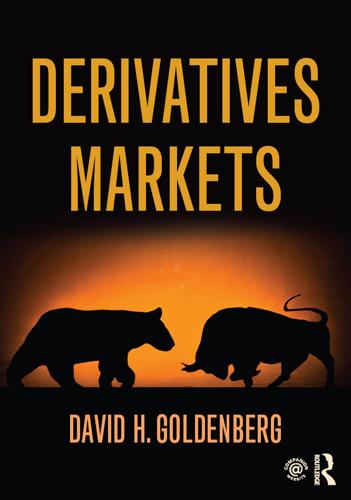
Derivatives Markets
by
David Goldenberg
Published 2 Mar 2016
Suppose the bank immediately lends out the $100,000,000. What annualized rate would the bank earn on its investment? c. Is the above set of transactions an arbitrage opportunity? 7.6.3 LIBOR3, LIBID3, and Fed Funds The annualized lending rate corresponding to a 3-month Eurodollar time deposit is called LIBOR3 (London Interbank Offered Rate). Annual in the world of LIBOR means 360 days, by market convention. A 3-month (90 days) Eurodollar time deposit earns interest at the rate LIBOR3*(90/360) =LIBOR3/4. So, on $1,000,000 that amounts to $1,000,000*LIBOR3/4. Say LIBOR3= 3%. Interest would be, On a Eurodollar placement of US$50,000,000 that amounts to 50*$7500= $375,000 which is not a bad 3 months work.
…
224; bank borrowing in spot Eurodollar (ED) market 250; ‘buying’ and ‘selling’ Eurodollar (ED) futures 256; calculation of adjusted hedge ratios 245; solution to 269; calculation of optimal (risk-minimizing) hedge ratio 240; cash settlement and effective price on S&P 500 spot index units 234; solution to 269; exchange rate risk, currency positions and 218; solution to 268; foreign exchange (FX) risk and jet fuel market 219; solution to 268–9; underlying spot 3-month Eurodollar (ED) time deposit 261; solution to 270; contract month listings 214, 215, 228; contract offerings 227–8; contract size 214, 215, 227, 228; contracts offered 257–8; currency forward positions vs. currency futures positions 220; currency futures 213–17; contract specifications 213–15; pricing vs. currency forward pricing 225; quote mechanism, future price quotes 216–17; risk management strategies using 217–24; daily price limits 228, 229; daily settlements 216, 260; diversifiable risk 225; dividend-adjusted geometric mean (for S&P 500) 227; dollar equivalency 227, 234, 239–40; economy-wide factors, risk and 225–6; effective payoff 220, 233; EFP eligibility 214; Eurodollar (ED) deposit creation 253; Eurodollar (ED) futures 220–1, 245, 246, 249, 250, 252–64; cash settlement, forced convergence and 258–61; contract specifications 254–5; forced convergence, cash settlement and 258–61; open positions, calculation of profits and losses on 262–4; quote mechanism 256–8; exchange rate risks and currency futures positions 217–20; Lufthansa example 217–20; exchange rule 214, 228; exchange-traded funds (ETFs) 226; exercises for learning development 266–8; Fed Funds Rate (FFR) 251; Federal Funds (FF) 249–50, 251, 252; Federal Reserve system (US) 249; financial futures contracts, selection of 213; FLIBOR (Futures LIBOR) 256, 257, 262, 263, 264, 267–8; forced conversion of Eurodollar (ED) futures 260; foreign exchange (FX) reserves, currency composition of 247–8; forward price change, present value of 242; hedging 224–5; hedging a cross hedge 244; issues in 224–5; quantity uncertainty 224–5; holding period rate of return 237; idiosyncratic risk 225; index points 226; interest rate derivatives (IRDs) 254; International Monetary Fund (IMF) 246; JPY/USD futures 213–15; key concepts 265–6; last trade date/time view calendar 214, 228; lending (offering) Eurodollars (EDs) 249–50; liabilities, Eurodollars (EDs) and 246; LIBID (London Interbank Bid Rate) 249–50, 252; LIBOR (London Interbank Offered Rate) 249, 250–4, 262, 263–4; Federal Funds (FF) vs. 251–2; liquidity and 220, 222, 231, 237, 252, 258; lock-in characteristics 220, 233; market risk 225–6; minimum price increment 214, 215; naive hedge ratio (NHR) 234, 240–1, 243; open interest 258; placing Eurodollars (EDs) 248–9; position accountability 214, 215, 228, 229; raw price change, present value of 243; realized daily cash flows, creation of 243; risk management strategies using currency futures 217–24; risk management using stock index futures 231–45; cross-hedging 243–5; monetizing S&P 500 Spot Index 231–4; naive hedge ratio, adjustment for risk-minimizing hedge ratio 239–41; non S&P 500 portfolios, adjustment of hedge for 243–5; pricing and hedging preliminaries 231; profits from traditional hedge 235–6; risk, return analysis of traditional hedge 236–8; risk minimizing hedge using forward vs. futures contracts 241–3; risk-minimizing hedging 238–9; rolling hedge strategy: efficient market hypothesis (EMH) 223; interpretations of profits from rolling hedge 221–3; Metallgesellschaft example 223; numerical example of 223–4; rule book chapter 228; settlement procedure 214, 228, 229, 258–9; S&P 500 Fact Sheet 226; S&P 500 Futures 228; spot commodities, S&P 500 futures contracts as 233–4; spot Eurodollar market 245–54; Eurodollar time deposits, creation of 252–4; spot 3-month Eurodollar time deposits 246–8; spot trading terminology 248–50; Stigum’s Money Market (Stigum, M.) 252; stock index futures 225–30; commentary 230; S&P 500 futures quotes, quote mechanism for 230; S&P 500 Spot Index 225–7; S&P 500 Spot Index, effective payoff on monetization of 233; S&P 500 Spot Index, monetization of 231–4; S&P 500 Stock Index Futures Contract Specifications 227–9; tailing the hedge 241–2; taking Eurodollars (EDs) 249; ticker symbol 214, 215, 228, 229, 261; timing in Eurodollar (ED) futures 257; tick size 228, 229; trading hours 214, 228; traditional hedge, risk and return analysis on 236–8; basis risk 238; holding period rate 237; intermediate execution, basis risk and 237–8; liquidity advantage in execution 237; unallocated foreign exchange (FX) reserves 248 financial innovation using European Put-Call Parity 401–5; American Put-Call Parity (no dividends) 403–5; generalized forward contracts 401–3 financial institutions and use of swaps 299–301 finite-maturity financial instruments, options as 20, 354 fixed leg in interest-rate swaps 293 fixed payments in interest-rate swaps 278–9 fixed-rate mortgages 7 FLIBOR (Futures LIBOR): financial futures contracts 256, 257, 262, 263, 264, 267–8; interest-rate swaps 278, 287 floating leg in interest-rate swaps 293 floating payments in interest-rate swaps 279–80 floating-rate bond implicit in swap 306 floating-rate payments as expected cash flows 306 floor-brokers 140 floor-traders 140 foreign currencies: forward prices on 24–5; futures prices on 25–6; see also currency futures foreign economy (FE) 103–4 foreign exchange (FX) forward contracts: example of pricing 107–9; pricing using no-arbitrage 106–7 foreign exchange (FX) markets, price quotes in 103–5 foreign exchange (FX) rates (New York, March 11, 2014) 30–1 foreign exchange (FX) reserves, currency composition of 247–8 foreign exchange (FX) risk 3–5 forward contracts: differences between futures contracts and 122; on dividend-paying stocks, pricing with no-arbitrage 100–3; hedging with 37, 43–5; on stocks with dividend yield, pricing with net interest model 99–100; swaps as strips of 274–8; valuation of (assets without dividend yield): default on 76; interpretation via synthetic contracts 78–82; leverage and 80–2; no up-front payments on 75; payment on maturity, expectation of 81; price vs. value for 73; valuing at expiration 74–5; valuing at initiation 75–8 forward market contracting: buying forward 7–8; Clearing House intermediation 14–15; concept checks: controlling for counterparty risk 12–13; exploration of forward rates in long-term mortgage market 9–10; exploration of spot rates in long-term mortgage market 11; solution 29; intermediation by Clearing House 15–16; solution 29–30; spot markets, dealing with price quotes in 6–7; counterparty risk 11; default 11–12; exit mechanism 15–16; features of 8; fixed-rate mortgages 7; forward agreement, terms of 8; forward contracts, differences between futures contracts and 122; forward market 8; forward prices 9, 24–5; forward transactions 8; historical data, checking on 9–10; interest-rate risk management 9–10; intermediation 13–14, 14–15; liquidity, enablement of 16; locked-in prices 12; market levels 11; market organization, importance of 13, 14; obligations, transfer of 16; offsetting trades 15–16; overnight averages 11; price quotes in forward markets 9–11; problems with forward markets 11–13; ‘reversing’ of trades 15–16; short positions 7; SouthWest Airlines, case example 12–13; spot, forward, and futures contracting 7–13; standardization 14; transfer of obligations 16; see also hedging with forward contracts; valuation of forward contracts forward prices 9, 24–5; change in, present value of 242; no-arbitrage, forward pricing with 102–3 front stub period 294 fundamental theorem of asset pricing number one (FTAP1): equivalent martingale measures (EMMs) 509, 511–12, 517, 528–9, 530, 532, 533; model-based option pricing (MBOP) 450, 451, 452; option pricing in continuous time 540; risk-neutral valuation 596–7, 601–2, 605, 606, 624, 631 fundamental theorem of asset pricing number two (FTAP2): binomial option pricing model (BOPM) 490; model-based option pricing (MBOP) 452; option pricing in continuous time 540; risk-neutral valuation 596–7, 601–2, 605, 606, 624, 631; risk-neutral valuation and another version of 606 future value (FV) 69–70, 382, 386, 390, 395 Futures Commission Merchant (FCM) 122, 123, 124, 125, 137, 140 futures contracts: futures market contracting 17; market organization for: ‘buying’ and ‘selling’ of 126–7; daily value of 146; differences between forward contracts and 122; futures price and 127; market participants 122–5 futures market contracting 17–26; concept check, price quotes in futures markets 19; contract size 19; contract specifications 17, 18–19; delivery dates 19; fancy forward prices 19, 25; futures contract 17; futures market 17; futures prices 17, 25–6; futures transaction 17; key definition, futures contract 17; mapping out spot, forward, and futures prices 20–6; ‘Open Outcry Futures’ 19; price quotes in futures markets 17–19; seller’s options 17; as solution to forward market problems 13–16; volatility (uncertainty) 22; see also hedging with futures contracts; market organization for futures contracts futures trading: hedging with forward contracts 35; market organization for futures contracts: cash flow implications of 144; daily settlement, perspectives on 144; delivery obligations 142; offsetting trades 142–4; phases of 125–6 gap management problem, solutions for 300–1 Gaussian distributions 543, 546, 548, 557, 565, 577 general equilibrium (GE) 453; models of, risk-neutral valuation and 615 generalized forward price 402 geometric Brownian motion (GBM) 553–61; continuous version 559–61; discrete version 553–9 Girsanov’s theorem 605 Globex and Globex LOB 134–6 Globex trades, rule for recording of 135 Gold pricing on London Bullion Market 20–3 guaranteeing futures obligations 139–41 hedge ratio: dollar bond position and 478; model-based option pricing (MBOP) and 455 hedging: financial futures contracts 224–5; hedging a cross hedge 244; issues in 224–5; quantity uncertainty 224–5; hedged position profits, graphical method for finding 55; hedgers 37; hedging definitions 168; minimum variance hedging 185–8; estimation of risk minimization hedge ratio 187–8; OLS regression 187–8; risk minimization hedge ratio, derivation of 186–7; motivation for hedging with forward contracts 33–7; objective of 167–8; as portfolio theory 165–8; reverse hedge 618, 620, 621; riskless hedge 607, 616, 620, 628, 632; rolling hedge strategy: efficient market hypothesis (EMH) 223; interpretations of profits from rolling hedge 221–3; Metallgesellschaft example 223; numerical example of 223–4; short hedge 168; synthesis of negative correlation, hedging as 165–7 hedging a European call option in BOPM (N=2) 477–85; complete hedging program (for BOPM, N=2) 484–5; concept check, value confirmation 485; hedge ratio and dollar bond position, definition of (step 2) 478; parameterization (step 1) 477–8; replicating portfolio, construction of (step 3) 478–84; concept check: interpretation of hedge ratio 482; down state, replication in 481; hedge ratio, interpretation of 482–3; replication over period 2 (under scenario 1) 479–82; replication under scenario 2 (over period 2) 484; scenarios 478–9; solving equations for ?
…
and B 481; solving for dollar position in bonds under scenario 1 (over period 2) 483; up state, replication in 480 hedging with forward contracts 33–64; cash commodity prices 35; combinations of positions 50; combining charts to see profits from hedged positions 54–5; commitment prices 41; concept checks: charting payoff to long forward position 39; solution to 62; charting payoff to short forward position 42; solution to 62; charting profits to fully unhedged position 45; solution to 63; charting profits to long spot position sold forward 49; payoff per share to long forward position 39; solution to 61; payoff per share to short forward position 42; profits to fully naked (unhedged) short forward position 50; solution to 64; profits to long spot position sold forward 48–9; profits to naked long spot position 45; wheat price volatility, dealing with 36; decision-making process, protection of potential value 36–7; exercises for learning development of 56–61; forward contracts 37; hedging with 43–5; fully hedged current long spot position, profits to 47–9; fully hedged position, adding profit tables to determine profits from 50–4; futures trading 35; hedged position profits, graphical method for finding 55; hedgers 37; individual stock forwards: long position 38–9; short position 41–3; key concepts 56; long forward position, payoff to 37–9; motivation for 33–7; naked (unhedged) forward contracts 41; naked (unhedged) long spot position, profits to 45–6; payoff position 37; payoff to long forward position in IBM 40; payoff to short forward position in IBM 43; profit from fully hedged spot position in wheat 53; profits from fully naked (unhedged) spot position in wheat 51; profits from short forward position in wheat 52; profits to long spot position sold forward 49; profits to naked (unhedged) long spot position 46; risk aversion 37; scenarios: adding profit tables to determine profits from fully hedged position 52–4; hedging with forward contracts 44–5; long position contracts 38–9; short position contracts 42; selling a forward contract 40–1, 47–8; settlement price 35; short forward position, payoff to 39–43; spot prices 34–5; uncertainty (volatility), unhedged positions and 45; wheat price uncertainties, dealing with 33–7 hedging with futures contracts 163–209; backwardation, contango and 198–9; basis risk vs. spot price risk 178–82; calendar spreads 199; carrying charge hedging 188–93; convergence, implications for 189; equilibrium (no-arbitrage) in full carrying charge market 190–3; overall profits on 189; concept checks: bond equivalent yield (BEY) of actual T-bill 167; solution to 207–8; construction of risk-free arb if r > 0 with no dividends 173; solution to 208; effect of narrowing basis in traditional short hedge 178; solution to 208–9; effect of widening basis in traditional short hedge 176; failure of traditional hedging 184; solution to 209; profits in traditional short hedge and the basis 172; verification arb is arb without non-interest carrying charges and is riskless 192–3; solution to 209; verification of no current cost in arb 190; verification of riskless arb 191; contango and backwardation 198–9; convergence of futures to cash price at expiration 189; correlation effect 165–6; cost-of-carry model, spread and price of storage for 195; equilibrium forward pricing, comparison with equilibrium futures pricing 193–5; equilibrium (no-arbitrage) in full carrying charge market 190–3; classical short selling a commodity 192; Exchange Traded Funds (ETF) 191–2; formal arbitrage opportunity 192; non-interest carrying changes, arb without 192–3; setting up arb 190; unwinding arb 190–2; exercises for learning development of 205–7; hedging as portfolio theory 165–8; hedging definitions 168; informational effects 181–2; inter-commodity spreads 199; inter-market spreads 199; interest-adjusted marginal carrying costs 196; key concepts 204; long vs. short positions 164; marginal carrying charges 188; minimum variance hedging 185–8; estimation of risk minimization hedge ratio 187–8; OLS regression 187–8; risk minimization hedge ratio, derivation of 186–7; non-traditional (λ-for-one) hedging theory 182–8; objective of hedging 167–8; OLS regression 181–2, 187–8; one-for-one theory with basis risk 174–8; non-constant basis example with basis narrowing 177; non-constant basis example with basis widening 175–6; one-for-one theory with no basis risk 168–71; basis, concept of 170–1; consistency with no-arbitrage 172–4; constant basis example 168–71; with dividends, r > 0 and r=p, case of 173–4; no dividends and r=0, case of 172–3; speculation on the basis 171; perfectly negatively correlated asset returns 166; portfolio theory, hedging as 165–8; portfolio variance, calculation of 179–81; profits in one-for-one short hedge and basis 171–2; risk reduction with (λ-for-one) hedging 183–5; risk reduction with traditional hedging 179–82; informational effect 181–2; OLS regression 181–2; portfolio variance calculation 179–81; selling hedge 168; short hedge 168; spread basis, definition of 200–1; spreads as speculative investment 199–203; stock index futures contracts, introduction of 167; storage and price (cost) of 195–7; subsequent inventory sale price, locking in of 195; synthesis of negative correlation, hedging as 165–7; synthetic risk, diversifying away of 167; synthetic treasury bill vs. actual bill 165; systematic, market risk after diversification, protection against 168; transportation across time, storage as 195; treasury bill synthesis 166–7 Heston volatility model 587–8 historical data, checking on 9–10 holding period rate of return 237 idiosyncratic risk 225 immediate exercise value 330 implicit bonds 303, 304; implicit floating-rate bond, valuation of 308 implicit short positions 340 In-the-Money calls 337 In-the-Money covered call writes 421–4 incomplete markets 450–1 independent securities and risks 600 index points 226 individual stock forwards: long position 38–9; short position 41–3 infinitesimal intervals 93 informational effects 181–2 instantaneous yields 90–2, 93–4 insurance features, options and 327 inter-commodity spreads 199 inter-market spreads 199 interest-adjusted marginal carrying costs 196 interest rate derivatives (IRDs): financial futures contracts 254; interest-rate swaps 278–80; paying fixed in 278–9; receiving variable in 279–80 interest-rate risk management 9–10 interest-rate swaps 273–319; back stub period 294; cash flows for annual rate swap 302; cash flows in non-intermediated swaps 282–4; commodity forward contracts: paying fixed and receiving floating in 276; as single period swaps 275–6; concept checks: calculation of implied forward rates (IFRs) 310; solution to 319; graphical representation of swap’s cash flows 283; solution to 318; paying fixed in an interest rate derivative (IRD) 279; solution to 317–18; receiving variable in an interest rate derivative (IRD) 280; strip of forward contracts, short’s position in 278; solution to 317; swapping fixed for floating payments 276; solution to 317; credit spreads 298–9; currency swaps, notional value of 274; dealer intermediated plain vanilla swaps 284–93; arbitraging swaps market 292–3; asked side in 286; bid side in 285; dealer’s spread 286; example of 284–6; hedging strategy: implications of 291–2; outline of 288–90; plain vanilla swaps as hedge vehicles 286–92; dealer’s problem, finding other side to swap 294–8; asked side in 295; bid side in 295; credit spreads in spot market (AA-type firms) 296; dealer swap schedule (AA-type firms) 295; selling a swap 296; swap cash flows 298; synthetic floating-rate financing (AA-type firms) 297; transformation from fixed-rate to floating rate borrowing 297–8; duration 300; effective date 293; Eurodollar (ED) futures 278; strips of 280–1; exercises for learning development of 315–16; financial institutions and use of swaps 299–301; fixed leg 293; fixed payments 278–9; FLIBOR (Futures LIBOR) 278, 287; floating leg 293; floating payments 279–80; floating-rate bond implicit in swap 306; floating-rate payments as expected cash flows 306; forward contracts, swaps as strips of 274–8; front stub period 294; gap management problem, solutions for 300–1; generic example, five-year swap 294; implicit bonds 303, 304; implicit floating-rate bond, valuation of 308; interest rate derivatives (IRDs) 278–80; paying fixed in 278–9; receiving variable in 279–80; key concepts 315; LIBOR (London Interbank Offered Rate) 274–5, 278, 282, 293, 297, 303, 304, 306, 307, 309–10, 311–13; yield curve (spot rates) 304; matching principle 300; mortgage bonds 279; non-dealer intermediated plain vanilla swaps 281–4; notional value of 274; over-the-counter (OTC) bilateral agreements 278; par swap rate 294, 301; paying fixed 293; in interest rate derivatives (IRDs) 278–9; and receiving floating in commodity forward contracts 276; plain vanilla interest-rate swaps 274; dealer intermediated swaps 284–93; non-dealer intermediated swaps 281–4; pricing a swap 294; quality spreads 299; receiving floating 293; receiving variable in interest rate derivatives (IRDs) 279–80; reset date 293; resetting floating rate 293; selling short 293; single period swaps, commodity forward contracts as 275–6; strip cash flows, generation of 277; strips of forward contracts 277–8; swap cash flows: decomposition into implicit bonds 303; graphical representation of 318; swap spread 294; swapping fixed for floating payments 276; swaps as strips of forward contracts 274–8; swaps pricing 301–14; example of 301–3; fixed-rate bond, valuation of 303–5; floating-rate bond, valuation of 305–8; implied forward rates (IFRs) 309–11; par swap rate 301; interpretations of 311–14; swap at initiation, valuation of 308–9; synthetic fixed-rate bond 291–2; synthetic fixed-rate financing 290; tenor of swap 293; terminology for 278–81, 293–4; trade date 293; valuation of floating-rate bonds prior to maturity 306–7; zero sum game, swaps as?

Broken Markets: A User's Guide to the Post-Finance Economy
by
Kevin Mellyn
Published 18 Jun 2012
For the large global banks based outside the United States, and therefore without domestic dollar deposits, the ability to tap these sources is normally taken for granted, as it is for the big US institutions whose lending and trading businesses vastly exceed their own deposits. It’s Still All About Trust The canary in the mineshaft leading up to the 2008 financial market meltdown was that banks in the interbank-lending market began to get very nervous about the creditworthiness of one another and ramped up prices (the key one being the London Interbank Offered Rate [LIBOR]) while cutting back supply.The market froze up and has never become completely unfrozen since; it’s down 60 percent from its pre-crisis peak as I write.The original deterioration of mutual trust in the market was based on worries about which banks had big, illiquid positions in dud securities backed by US mortgages.
…
eBook <www.wowebook.com> 170 Index Global whirlwinds (continued) economic primacy, 113 European banking crisis ECB, 102–103 federal funds market, 102 Federal Reserve, 103 global money market, 102 interbank market, 101 interbank-lending market, 102 interest rate and currency risks, 101 investment-banking industry, 101 recession, 103 short-and medium-term credit, 101 short-term funding and liquidity, 101 sovereign risk, 102 steroids, 103 globalization, 113 global money pump, 103–105 global trade, zero-sum game ants and grasshoppers, 96 cheap TV deal, 94–95 Chinese Central Bank, 94 currency manipulation, 95–96 multilateral trade, 94 political demagoguery, 94 hegemon, 113–116 sustainable development, 112 technology vs. friction, 105–106 US global economic leadership, 112 US losing clout, 111–112 war, settlement risk, 108–109 Western decline acceleration, 113 Government-sponsored enterprises (GSEs), 17 Graham-Leach-Bliley Act, 36 Great Depression, 5, 44, 61 Great Moderation, 16–18, 21, 61 “Green” economy, 85 Growth-killing austerity, 111 H Home equity lines of credit (HELOCs), 16 I Industrial Revolution, 77 Infinite customization, 68 J Joint-stock banking, 63, 76 L Laissez-faire economy, 84–86 Liberal arts, 132 Life after finance, 75 credit-driven economy, 76–77 death knell, consumer credit American optimism, 90 big data, 90 entrepreneurs starvation, 91–92 loan factories, 90 per-account/per-transaction, 90 securitization, 90 unbanking, 91 financial repression Bretton Woods system, 79 capital exports and foreignexchange transactions, 79 captive domestic audience, 79 debt restructuring, 78 GDP, 79 government banks ownership, 79 industrial policy, 86 monopolies, 86 negative real interest rates, 78, 79 prudential regulation, 79 rules, 80 subsidized green energy, 86 tax raising and lowering, 81–82 World War II, 79 Government expenditure, 75–76 low interest rates, 77–78 political direction, credit and investment formal taxation, 82 government-run utility, 83 Japanese banks, 83 laissez-faire economy myth, 84–86 Index market-driven banking system, 83 winners and losers, 83–84 risky business amalgamation, 88 coincidence, 88 competition, 89–90 joint-stock banks, 87 often-contradictory rules and requirements, 88 private partnerships, 87 separation of functions, 87 shareholder-owned banks, 87 small-town banks, 87 Life-line banking, 70 R Liquidity trap, 72 Ring fencing, 88 London Interbank Offered Rate (LIBOR), 102 Rules-based regulation, 59, 61 M S “Market-centric” financial system, 110 Real Time Gross Settlement (RTGS), 108 Regulation process “Anglo-Saxon” world, 36 balance sheets and trading desks, 35 definition, 36 finance deregulation, 35–36 Graham-Leach-Bliley Act, 36 Triple A–rated bonds, 37 “ultra-safe” money market mutual fund, 37 Regulatory arbitrage, 61 Resolution Trust Corporation (RTC), 31 Savings-and-loan (S&L) industry, 28, 30 Mass-market retail banking, 66 Securities and Exchange Commission (SEC) rules, 33 McKinsey Global Institute (MGI), 110 S&L industry.See Savings-and-loan industry Micro-regulation, 92 Ministry of International Trade and Industry (MITI), 83 Society for Worldwide Interbank Financial Telecommunications (SWIFT), 107 Moral hazard, 18 Straight-through procession, 107 N National Bank Act, 49 National Bureau of Economic Research (NBER), 78 O Outsourcing, 13 P Personal Consumption Expenditure (PCE), 90 Price discovery, 104 Principles-based regulation, 59 Printing money, 78 Professional/proprietary trading, 12 Subprime mortgage market, 66 T The Dodd-Frank Act, 49 Trillion-pound banking groups, 60 Troubled Asset Relief Program (TARP), 39 U US Federal Reserve, 6 V Volcker rule, 88 W Working capital, 11 171 Broken Markets A User’s Guide to the Post-Finance Economy Kevin Mellyn Broken Markets: A User’s Guide to the Post-Finance Economy Copyright © 2012 by Kevin Mellyn All rights reserved.
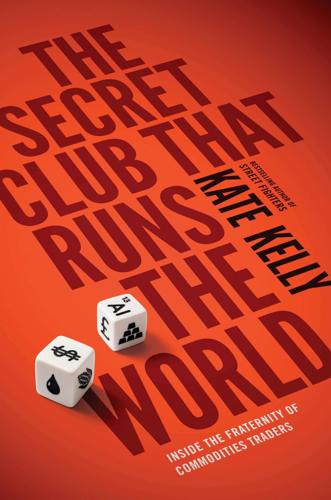
The Secret Club That Runs the World: Inside the Fraternity of Commodity Traders
by
Kate Kelly
Published 2 Jun 2014
But the more time he spent observing the industry’s behavior in the various contract markets—known overall as derivatives because they were derived from simpler products like stocks and commodities—the more objectionable Gensler felt it was. The swindle that first captured his attention was the handling of an internationally regarded interest rate known as LIBOR, the acronym for the London Interbank Offered Rate, in London, which had little to do with commodities. But his sudden enforcement zeal spurred a crackdown on misconduct and sleaze in the contract market for raw materials. Late in 2010, Gensler hired David Meister, a trim, antsy father of two teenagers, to run the forgotten enforcement division.
…
See also Delta Air Lines Delta hedging decisions and, 113, 208, 212–14 Delta refinery purchase and, 120 Jaffe, Amy Myers, 98 jet fuel hedging airlines’ need for, 106, 107–8 crude oil used for, 67, 78–79 for Emirates by Morgan Stanley, 77–83, 106 John, Elton, 134 JPMorgan charged by FERC, 226 Glencore-Xstrata merger and, 168, 172 Henry Bath & Son warehousing company and, 143 physical commodities business sale of, 226 Klein, Michael, 164–65, 166, 175, 177, 178 Lazard, 169, 170, 180 legal issues. See regulation and legal issues Lehman Brothers, Chapter 11 filed by, 43 Levin, Carl, 85–87 Lincoln, Blanche, 101 London Interbank Offered Rate (LIBOR) scandal, 190, 200 London Metal Exchange (LME) aluminum stockpiling complaints of, 141, 142, 144, 151 Goldman board seat secured by Cohn, 148 minimum load-out rate mandated by, 144, 152, 155 sued for violating antitrust laws, 156 Lukken, Walter, 92–93, 182 Mack, John commodity traders’ arrogance disliked by, 77 Glasenberg advised about Glencore-Xstrata merger by, 166 negotiation with Emirates management by, 81–83 Purchase, New York, office visited by, 76 as Rosneft director, 227 Managed Funds Association, 97 Marc Rich & Co.
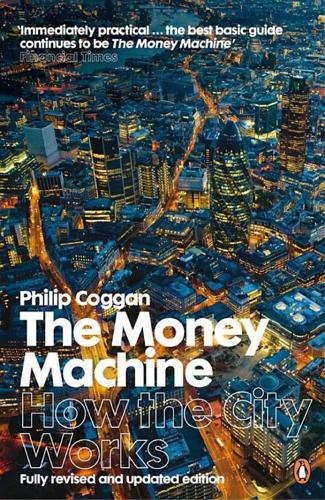
The Money Machine: How the City Works
by
Philip Coggan
Published 1 Jul 2009
Much trading is in short-term bank deposits. Interest rates were quoted as the spread between the bid and offer rates. The bid rate is the rate which a bank is prepared to pay to borrow funds; the offer rate is the rate at which it is prepared to lend. The average of the offer rates, the London Interbank Offered Rate (LIBOR), is an important benchmark for other loans, although it came under some criticism for its accuracy during the credit crunch of 2008. LIBOR is used as a benchmark for loans to the corporate sector, with the interest rate being set every six months or so in line with the rates paid by banks.
…
The prospectus is distributed to potential investors, who are told the price at which shares will be sold JOBBERS Under the old Stock Exchange system, those who bought and sold shares but could deal with outside investors only through the brokers LEASING A kind of rental agreement whereby companies purchase land or equipment and pay for it by instalments LETTER OF CREDIT A method of financing trade LEVERAGE In speculative terms, the opportunity for a large profit at a small cost. Also a technical term for the ratio of a firm’s debt to its equity LIBID London Interbank Bid Rate – the rate at which a bank is prepared to borrow from another bank LIBOR London Interbank Offered Rate – the rate at which a bank is prepared to lend to another bank LIFE ASSURANCE A form of saving whereby individuals invest a small monthly premium in return for a much larger sum later on. If the saver dies during the scheme, his or her dependants receive a large sum. If the saver does not die, the sum will be paid out at the end of the policy LIFE COMPANIES Institutions which market life assurance and insurance policies.
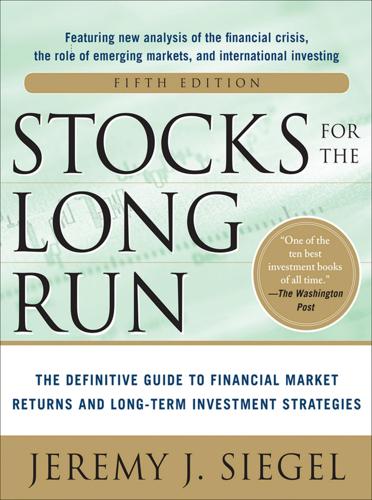
Stocks for the Long Run 5/E: the Definitive Guide to Financial Market Returns & Long-Term Investment Strategies
by
Jeremy Siegel
Published 7 Jan 2014
See also specific Acts , 52–55 Lehman Brothers 2008 financial crisis and, 18–19 allowing failure of, 34–36 bankruptcy of, 21–23 stock market and, 41–42 Title II and, 54 Volcker rule and, 53 Lenders of last resort, 32–37 Level of markets, 303–305 Leverage, 281 LIBOR (London Interbank Offered Rate), 43, 46–47, 218 Life-changing inventions, 69–70 Life expectancies, 59–60, 63 Limited Stores, 189 Lintner, John, 175 Liquidity investing, 191–193 Liquidity replenishment points, 299 Litzenberger, Robert, 180 Logarithmic scales, 5 London Interbank Offered Rate (LIBOR), 43, 46–47, 218 Long-Term Capital Management, 15, 220 Long-term investing bonds in, 78–79, 85, 101 Dow Jones Industrial Average in, 108–109 growth of portfolios in, generally, 373, 378 guidelines for, 374–376 holding periods in, 94–95 implementing plans for, 377–378 investment advisors for, 377–378 practical aspects of, 373–374 real returns in, 85 “on-the-run” bonds in, 192 stocks in, 7–15, 90–92 trends in, 108–109 Lorie, James H., 12, 14, 113 “The Loser’s Game,” 366 Losing trades, 347–349 Loss aversion, 347–349 Low-cost stock indexes, 375 Lowenstein, Roger, 3, 14 Lower bounds, 314–316 Lower-than-expected inflation, 266 Lun, Ts’ai, 70 Lynch, Peter on Buffett, 271 on business cycles, 229 on index products, 271, 288 on mutual funds, 362–365 Lyondell Basell Industries, 116 MacCauley, Frederick, 313 Magellan Fund, 362, 365 Magnitudes of cash flows, 144 Main Street vs.
…
The LIBOR Market One of the most watched spreads in the money market is that between the rate set by the Federal Reserve in the fed funds market (a market to facilitate the borrowing and lending of reserves between U.S. banks) and the interbank lending rates outside the United States, called the London Interbank Offered Rate, or LIBOR. There are literally hundreds of trillions of dollars of loans and financial instruments around the world that are based on the LIBOR, including almost one-half of all adjustable-rate mortgages. The history of the LIBOR goes back to the 1960s, when the market for overseas dollar lending grew dramatically after the U.S. government put restrictions on dollar outflows in a futile attempt to reverse its balance-of-payments deficit and staunch its gold outflow.
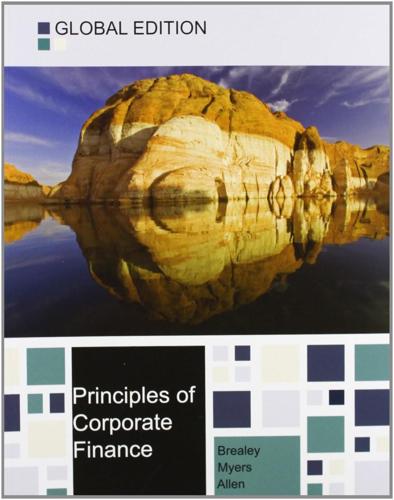
Principles of Corporate Finance
by
Richard A. Brealey
,
Stewart C. Myers
and
Franklin Allen
Published 15 Feb 2014
If a $1,000 bond is issued when long-term interest rates are 10%, the firm continues to pay $100 per year regardless of how interest rates fluctuate. Most bank loans and some bonds offer a variable, or floating, rate. For example, the interest rate in each period may be set at 1% above LIBOR (London Interbank Offered Rate), which is the interest rate at which major international banks lend dollars to each other. When LIBOR changes, the interest rate on the loan also changes. 3. Should you borrow dollars or some other currency? Many firms in the U.S. borrow abroad. Often they may borrow dollars abroad (foreign investors have large holdings of dollars), but firms with overseas operations may decide to issue debt in a foreign currency.
…
Sometimes bonds are sold with a lower coupon payment but at a significant discount on their face value, so investors receive much of their return in the form of capital appreciation.4 The ultimate is the zero-coupon bond, which pays no interest at all; in this case the entire return consists of capital appreciation.5 The J.C. Penney interest payment is fixed for the life of the bond, but in some issues the payment varies with the general level of interest rates. For example, the payment may be set at 1% over the U.S. Treasury bill rate or (more commonly) over the London interbank offered rate (LIBOR), which is the rate at which international banks borrow from one another. Sometimes these floating-rate notes specify a minimum (or floor) interest rate, or they may specify a maximum (or cap) on the rate.6 You may also come across “collars,” which stipulate both a maximum and a minimum payment.
…
Then the link between spot and futures prices is broken, and futures prices can assist with price discovery. 18Note that the party that profits from a rise in rates is described as the “buyer.” In our example you would be said to “buy three against nine months” money, meaning that the forward rate agreement is for a six-month loan in three months’ time. 19The interest rate is usually measured by LIBOR. LIBOR (London interbank offered rate) is the interest rate at which major international banks in London borrow dollars (or euros, yen, etc.) from each other. 20These payments would be made when the loan matures nine months from now. 21Data on swaps are provided by the International Swaps and Derivatives Association (www.isda.org) and the Bank for International Settlements (www.bis.org). 22The spread between the bank’s 6% borrowing rate and the 8% lending rate is the bank’s profit on the project financing. 23Maybe the short-term interest rate is below the five-year interest rate because investors expect interest rates to rise. 24Both strategies are equivalent to a series of forward contracts on LIBOR.

The Crisis of Crowding: Quant Copycats, Ugly Models, and the New Crash Normal
by
Ludwig B. Chincarini
Published 29 Jul 2012
Morgan and legal opinion on bankruptcy of leverage liquidity pool liquidity stress test results losses of market imbalances and moving business strategy profits of real estate exposure Repo repo imbalance and Reserve Primary Fund and run on Russian default and size of stock price storage business strategy swap imbalance and Lehman Brothers Bank Lenders: of last resort marking to market by mortgage, and housing bubble Lessons from financial crisis: arbitrage conflicts of interest counterparty interaction derivatives hedge funds interconnectedness and crowds leverage overview of policy lessons risk management systemic risk and “too big to fail,” Lessons from LTCM failure: compensation contingency capital counterparties and clearinghouses counterparty due diligence Fed as coordinator of last resort interconnected crowds leverage overview of quantitative theory regulation size of firms and “too big to fail,” spread the love VaR Leverage: capital ratio and dangers of of investment banks lessons from financial crisis at LTCM Leveraged bank loans Levitt, Arthur Lewis, Joe Lewis, Ken LIBOR (London Interbank Offer Rate) Liebowitz, Martin Liew, John Lim, Steven Liquidity, price of during crisis Liquidity risk Liquid securities London Interbank Offer Rate (LIBOR) Long swap spread trade Long-Term Capital Management (LTCM). See also Lessons from LTCM failure; Trades of LTCM Buffett hostile offer causes of failure consolidated balance sheet consortium bailout copycat firms core trading strategies correlation and daily profit and loss early success of fate of investors founding partners J.P.
…
LTCM typically looked at LIBOR versus repo before making that trade, and might have avoided it if the expected financing gains were too small compared with the spread.3 (A repo transaction is collateralized lending: One party lends cash to another party in exchange for a bond. The repo rate is the interest rate LTCM paid on the cash it borrowed in exchange for a bond offered to a counterparty as collateral. LIBOR is an acronym for the London Interbank Offer Rate. This is the interest rate that LTCM received on the swap in a long swap spread transaction.) If the spread between received LIBOR and paid-out repo stays wide, the trade is more profitable, even if the swap spread moves against the position. LTCM traders considered how they thought the LIBOR-repo spread would evolve over time, as this would create future financing terms.
…
As its name implies, an ARM’s interest rate varies with interest rates in the overall economy. Hybrid ARMs were common during the housing bubble. These had a fixed interest rate for some period of time—perhaps a year or more—then charged a variable rate pegged to a reference index rate such as U.S. Treasury yields, the Fed Funds rate, or the London Interbank Offer Rate (LIBOR). A 2/28 hybrid ARM was a common offering. For the first two years, this loan’s monthly payments were lower than monthly payments would have been for a standard 30-year fixed-rate mortgage for the same amount. To make up for this, payments must be higher after year two, even if the reference interest rate doesn’t move.
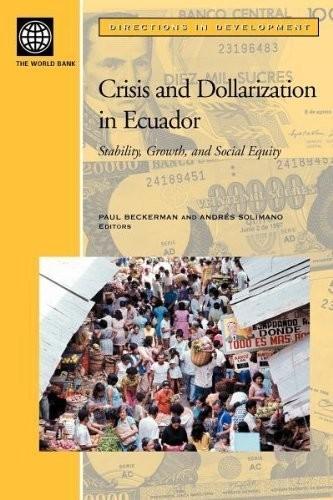
Crisis and Dollarization in Ecuador: Stability, Growth, and Social Equity
by
Paul Ely Beckerman
and
Andrés Solimano
Published 30 Apr 2002
Centro de Planificación y Estudios Sociales (World Bank Poverty Group) el Consejo de las Mujeres del Ecuador (National Council of Ecuadoran Women) debt-and-debt-service reduction Dirección Nacional de la Mujer (National Directory for Women, Ecuador) early childhood development Encuesta de Condiciones de Vida (Ecuador LSMS survey) economically active population European Union Fondo de Inversión Social de Emergencia (Emergency Social Investment Fund, Ecuador) gross domestic product Inter-American Development Bank Instituto Ecuatoriano de Seguro Social (Ecuadoran Social Security Institute) International Monetary Fund Instituto Nacional de Estadística y Censo (National Institute of Statistics and Census, Ecuador) Instituto Nacional del Niño y de la Familia (National Institute of the Child and the Family, Ecuador) London interbank offered rate Living Standards Measurement Study Mercado Común del Sur (Southern Common Market) National Center for Health Statistics, U.S. nongovernmental organization Organisation for Economic Co-operation and Development xi xii OPEC ORI PACMI PAHO PANN PDI PRONEPE SIISE SIMUJER STFS VAT WHO CRISIS AND DOLLARIZATION IN ECUADOR Organization of Petroleum Exporting Countries Operación Rescate Infantil (Child Rescue Program, Ecuador) Programa de Alimentación Complementaria Materno-Infantil (Maternal-Infant Nutrition Program, Ecuador) Pan American Health Organization Programa Nacional de Alimentación y Nutrición (Food and Nutrition Program that replaces PACMI in Ecuador) Programa de Desarrollo Infantil (Child Development Program, Ecuador) Alternativo Programa Nacional de la Educación Prescolar (National Alternative Preschool Education Program, Ecuador) Sistema Integrado de Indicadores Sociales del Ecuador (Integrated System of Social Indicators of Ecuador) Situation of Women and Gender Inequality Indicators database, Ecuador Secretaría Técnica del Frente Social (Technical Secretariat of the Social Front, Ecuador) value added tax World Health Organization 1 Crisis and Dollarization: An Overview Andrés Solimano Introduction On January 9, 2000, Ecuador decided to adopt the U.S. dollar as its national currency, its domestic medium of exchange, and its unit of account,1 thus becoming the first country to officially dollarize its economy in the 21st century.
…
In addition, after December 1998, the Treasury added an additional US$1.6 billion in dollar-denominated bonds to recapitalize commercial banks and pay deposit guarantees (see Part 4). (In November 1999, as the predollarization crisis turned acute, the authorities unilaterally termed out the dollar-denominated domestic debt falling due through December 2000 for seven years, with two years’ grace, at London interbank offered rate (LIBOR) plus 2 percent interest.) Although the volatile performance of public finances is basically the consequence of the volatility of oil revenue and the large interest bill and payroll, the problem has additional dimensions. The Public Budgets Law and various reform attempts by the Council for the Modernization of the State notwithstanding, administration of the various aspects of LONGER-TERM ORIGINS OF ECUADOR’S “PREDOLLARIZATION” CRISIS 41 public finance has remained weaker than the country requires.
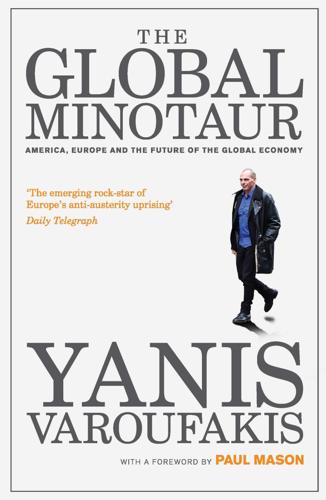
The Global Minotaur
by
Yanis Varoufakis
and
Paul Mason
Published 4 Jul 2015
On 17 August, Bernanke reduces interest rates slightly, demonstrating a serious lack of appreciation of the scale of the problem. September – The obvious unwillingness of the banks to lend to one another is revealed when the rate at which they do this lending (the LIBOR, short for the London Interbank Offered Rate) exceeds the Bank of England’s rate by more than 1 per cent (for the first time since the South East Asian crisis of 1998). At that point, we witness the first run on a bank since 1929. The bank in question is Northern Rock. While it holds no CDOs or sub-prime mortgage accounts, the bank relies heavily on short-term loans from other banks.
…
., New Frontier social programmes, 83, 84 Keynes, John Maynard: Bretton Woods conference, 59, 60, 62, 109; General Theory, 37; ICU proposal, 60, 66, 90, 109, 254, 255; influence on New Dealers, 81; on investment decisions, 48; on liquidity, 160–1; trade imbalances, 62–6 Keynsianism, 157 Kim Il Sung, 77 Kissinger, Henry, 94, 98, 106 Kohl, Helmut, 201 Korea, 91, 191, 192 Korean War, 77, 86 labour: as a commodity, 28; costs, 104–5, 104, 105, 106, 137; hired, 31, 45, 46, 53, 64; scarcity of, 34–5; value of, 50–2 labour markets, 12, 202 Labour Party (British), 69 labourers, 32 land: as a commodity, 28; enclosure, 64 Landesbanken, 203 Latin America: effect of China on, 215, 218; European banks’ exposure to, 203; financial crisis, 190 see also specific countries lead, prices, 96 Lebensraum, 67 Left-Right divide, 167 Lehman Brothers, 150, 152–3 leverage, 121–2 leveraging, 37 Liberal Democratic Party (Japan), 187 liberation movements, 79, 107 LIBOR (London Interbank Offered Rate), 148 liquidity traps, 157, 190 Lloyds TSB, 153, 156 loans: and CDOs, 7–8, 129–31; defaults on, 37 London School of Economics, 4, 66 Long-Term Capital Management (LTCM) hedge fund collapse, 13 LTCM (Long-Term Capital Management) hedge fund collapse, 2, 13 Luxembourg, support for Dexia, 154 Maastricht Treaty, 199–200, 202 MacArthur, Douglas, 70–1, 76, 77 machines, and humans, 50–2 Malaysia, 91, 191 Mao, Chairman, 76, 86, 91 Maresca, John, 106–7 Marjolin, Robert, 73 Marshall, George, 72 Marshall Plan, 71–4 Marx, Karl: and capitalism, 17–18, 19, 34; Das Kapital, 49; on history, 178 Marxism, 181, 182 Matrix, The (film), 50–2 MBIA, 149, 150 McCarthy, Senator Joseph, 73 mercantilism, in Germany, 251 merchant class, 27–8 Merkel, Angela, 158, 206 Merrill Lynch, 149, 153, 157 Merton, Robert, 13 Mexico: effect of China on, 214; peso crisis, 190 Middle East, oil, 69 MIE (military-industrial establishment), 82–3 migration, Crash of 2008, 3 military-industrial complex mechanism, 65, 81, 182 Ministry for International Trade and Industry (Japan), 78 Ministry of Finance (Japan), 187 Minotaur legend, 24–5, 25 Minsky, Hyman, 37 money markets, 45–6, 53, 153 moneylenders, 31, 32 mortgage backed securities (MBS) 232, 233, 234 NAFTA (North American Free Trade Agreement), 214 National Bureau of Economic Research (US), 157 National Economic Council (US), 3 national income see GDP National Security Council (US), 94 National Security Study Memorandum 200 (US), 106 nationalization: Anglo Irish Bank, 158; Bradford and Bingley, 154; Fortis, 153; Geithner–Summers Plan, 179; General Motors, 160; Icelandic banks, 154, 155; Northern Rock, 151 NATO (North Atlantic Treaty Organization), 76, 253 negative engineering, 110 negative equity 234 neoliberalism, 139, 142; and greed, 10 New Century Financial, 147 New Deal: beginnings, 45; Bretton Woods conference, 57–9; China, 76; Global Plan, 67–71, 68; Japan, 77; President Kennedy, 84; support for the Deutschmark, 74; transfer union, 65 New Dealers: corporate power, 81; criticism of European colonizers, 79 ‘new economy’, 5–6 New York stock exchange, 40, 158 Nietzsche, Friedrich, 19 Nixon, Richard, 94, 95–6 Nobel Prize for Economics, 13 North American Free Trade Agreement (NAFTA), 214 North Atlantic Treaty Organization (NATO), 76 North Korea see Korea Northern Rock, 148, 151 Obama administration, 164, 178 Obama, Barack, 158, 159, 169, 180, 230, 231 OECD (Organisation for Economic Co-operation and Development), 73 OEEC (Organisation for European Economic Co-operation), 73, 74 oil: global consumption, 160; imports, 102–3; prices, 96, 97–9 OPEC (Organization of the Petroleum Exporting Countries), 96, 97 paradox of success, 249 parallax challenge, 20–1 Paulson, Henry, 152, 154, 170 Paulson Plan, 154, 173 Penn Bank, 40 Pentagon, the, 73 Plaza Accord (1985), 188, 192, 213 Pompidou, Georges, 94, 95–6 pound sterling, devaluing, 93 poverty: capitalism as a supposed cure for, 41–2; in China, 162; reduction in the US, 84; reports on global, 125 predatory governance, 181 prey–predator dynamic, 33–5 prices, flexible, 40–1 private money, 147, 177; Geithner–Summers Plan, 178; toxic, 132–3, 136, 179 privatization, of surpluses, 29 probability, estimating, 13–14 production: cars, 70, 103, 116, 157–8; coal, 73, 75; costs, 96, 104; cuts in, 41; in Japan, 185–6; processes, 30, 31, 64; steel, 70, 75 production–distribution cycle, 54 property see real estate prophecy paradox, 46, 47, 53 psychology, mass, 14 public debt crisis, 205 quantitative easing, 164, 231–6 railway bubbles, 40 Rational Expectations Hypothesis (REH), 15–16 RBS (Royal Bank of Scotland), 6, 151, 156; takeover of ABN-Amro, 119–20 Reagan, Ronald, 10, 99, 133–5, 182–3 Real Business Cycle Theory (RBCT), 15, 16–17 real estate, bubbles, 8–9, 188, 190, 192–3 reason, deferring to expectation, 47 recession predictions, 152 recessions, US, 40, 157 recycling mechanisms, 200 regulation, of banking system, 10, 122 relabelling, 14 religion, organized, 27 renminbi (RMB), 213, 214, 217, 218, 253 rentiers, 165, 187, 188 representative agents, 140 Reserve Bank of Australia, 148 reserve currency status, 101–2 risk: capitalists and, 31; riskless, 5, 6–9, 14 Roach, Stephen, 145 Robbins, Lionel, 66 Roosevelt, Franklin D., 165; attitude towards Britain, 69; and bank regulation, 10; New Deal, 45, 58–9 Roosevelt, Theodore (‘Teddy’), 180 Royal Bank of Scotland (RBS), 6, 151, 156; takeover of ABN-Amro, 119–20 Rudd, Kevin, 212 Russia, financial crisis, 190 Saudi Arabia, oil prices, 98 Scandinavia, Gold Standard, 44 Scholes, Myron, 13 Schopenhauer, Arthur, 19 Schuman, Robert, 75 Schumpter, Joseph, 34 Second World War, 45, 55–6; aftermath, 87–8; effect on the US, 57–8 seeds, commodification of, 163 shares, in privatized companies, 137, 138 silver, prices, 96 simulated markets, 170 simulated prices, 170 Singapore, 91 single currencies, ICU, 60–1 slave trade, 28 SMEs (small and medium-sized enterprises), 186 social welfare, 12 solidarity (asabiyyah), 33–4 South East Asia, 91; financial crisis, 190, 191–5, 213; industrialization, 86, 87 South Korea see Korea sovereign debt crisis, 205 Soviet Union: Africa, 79; disintegration, 201; Marshall Plan, 72–3; Marxism, 181, 182; relations with the US, 71 SPV (Special Purpose Vehicle), 174 see also EFSF stagflation, 97 stagnation, 37 Stalin, Joseph, 72–3 steel production, in Germany, 70 Strauss-Kahn, Dominique, 60, 254, 255 Summers, Larry, 230 strikes, 40 sub-prime mortgages, 2, 5, 6, 130–1, 147, 149, 151, 166 success, paradox of, 33–5, 53 Suez Canal trauma, 69 Suharto, President of Indonesia, 97 Summers, Larry, 3, 132, 170, 173, 180 see also Geithner–Summers Plan supply and demand, 11 surpluses: under capitalism, 31–2; currency unions, 61; under feudalism, 30; generation in the EU, 196; manufacturing, 30; origin of, 26–7; privatization of, 29; recycling mechanisms, 64–5, 109–10 Sweden, Crash of 2008, 155 Sweezy, Paul, 73 Switzerland: Crash of 2008, 155; UBS, 148–9, 151 systemic failure, Crash of 2008, 17–19 Taiwan, 191, 192 Tea Party (US), 162, 230, 231, 281 technology, and globalization, 28 Thailand, 91 Thatcher, Margaret, 117–18, 136–7 Third World: Crash of 2008, 162; debt crisis, 108, 219; interest rate rises, 108; mineral wealth, 106; production of goods for Walmart, 125 tiger economies, 87 see also South East Asia Tillman Act (1907), 180 time, and economic models, 139–40 Time Warner, 117 tin, prices, 96 toxic theory, 13–17, 115, 133–9, 139–42 trade: balance of, 61, 62, 64–5; deficits (US), 111, 243; global, 27, 90; surpluses, 158 trades unions, 124, 137, 202 transfer unions, New Deal, 65 Treasury Bills (US), 7 Treaty of Rome, 237 Treaty of Versailles, 237 Treaty of Westphalia, 237 trickle-down, 115, 135 trickle-up, 135 Truman Doctrine, 71, 71–2, 77 Truman, Harry, 73 tsunami, effects of, 194 UBS, 148–9, 151 Ukraine, and the Crash of 2008, 156 UN Security Council, 253 unemployment: Britain, 160; Global Plan, 96–7; rate of, 14; US, 152, 158, 164 United States see US Unocal, 106 US economy, twin deficits, 22–3, 25 US government, and South East Asia, 192 US Mortgage Bankers Association, 161 US Supreme Court, 180 US Treasury, 153–4, 156, 157, 159; aftermath of the Crash of 2008, 160; Geithner–Summers Plan, 171–2, 173; bonds, 227 US Treasury Bills, 109 US (United States): aftermath of the Crash of 2008, 161–2; assets owned by foreign state institutions, 216; attitude towards oil price rises, 97–8; China, 213–14; corporate bond purchases, 228; as a creditor nation, 57; domestic policies during the Global Plan, 82–5; economy at present, 184; economy praised, 113–14; effects of the Crash of 2008, 2, 183; foreign-owned assets, 225; Greek Civil War, 71; labour costs, 105; Plaza Accord, 188; profit rates, 106; proposed invasion of Afghanistan, 106–7; role in the ECSC, 75; South East Asia, 192 value, costing, 50–1 VAT, reduced, 156 Venezuela, oil prices, 97 Vietnamese War, 86, 91–2 vital spaces, 192, 195, 196 Volcker, Paul: 2009 address to Wall Street, 122; demand for dollars, 102; and gold convertibility, 94; interest rate rises, 99; replaced by Greenspan, 10; warning of the Crash of 2008, 144–5; on the world economy, 22, 100–1, 139 Volcker Rule, 180–1 Wachowski, Larry and Andy, 50 wage share, 34–5 wages: British workers, 137; Japanese workers, 185; productivity, 104; prophecy paradox, 48; US workers, 124, 161 Wal-Mart: The High Cost of Low Price (documentary, Greenwald), 125–6 Wall Street: Anglo-Celtic model, 12; Crash of 2008, 11–12, 152; current importance, 251; Geithner–Summers Plan, 178; global profits, 23; misplaced confidence in, 41; private money, 136; profiting from sub-prime mortgages, 131; takeovers and mergers, 115–17, 115, 118–19; toxic theory, 15 Wallace, Harry, 72–3 Walmart, 115, 123–7, 126; current importance, 251 War of the Currents, 39 Washington Mutual, 153 weapons of mass destruction, 27 West Germany: labour costs, 105; Plaza Accord, 188 Westinghouse, George, 39 White, Harry Dexter, 59, 70, 109 Wikileaks, 212 wool, as a global commodity, 28 working class: in Britain, 136; development of, 28 working conditions, at Walmart, 124–5 World Bank, 253; origins, 59; recession prediction, 149; and South East Asia, 192 World Trade Organization, 78, 215 written word, 27 yen, value against dollar, 96, 188, 193–4 Yom Kippur War, 96 zombie banks, 190–1

Frequently Asked Questions in Quantitative Finance
by
Paul Wilmott
Published 3 Jan 2007
Floating Rate Note (FRN) is a bond with coupons linked to a variable interest rate issued by a company. The coupon will typically have a spread in excess of a government interest rate, and this spread allows for credit risk. The coupons may also have a cap and/or a floor. The most common measure of a floating interest rate is the London Interbank Offer Rate or LIBOR. LIBOR comes in various maturities, one month, three month, six month, etc., and is the rate of interest offered between Eurocurrency banks for fixed-term deposits. Floor is a fixed-income option in which the holder receives a payment when the underlying interest rate falls below a specified level, the strike.
…
Lévy A probability distribution, also known as a stable distribution. It has the property that sums of independent identically distributed random variables from this distribution have the same distribution. The normal distribution is a special case. Of interest in finance because returns data matches this distribution quite well. See page 231. LIBOR London Interbank Offered Rate. An interest rate at which banks offer to lend funds to other banks in the London wholesale money market. It is quoted at different maturities. Being a standard reference rate it is often the underlying interest rate in OTC fixed-income contracts. Market maker Someone who gives prices at which he will buy or sell instruments, in the hope of making a profit on the difference between the bid and offer prices.

Stigum's Money Market, 4E
by
Marcia Stigum
and
Anthony Crescenzi
Published 9 Feb 2007
When an entity borrows X and then does several swaps to get to Y, which is what he wants, he is said to cocktail swaps. As the swap market has grown, swap terms have become standardized. Today, swaps are quoted at Treasuries plus, with the understanding that the Treasuries plus rate is the fixed rate for a swap against LIBOR, the London Interbank Offered Rate for Eurodollar deposits (there are many LIBORs—3-month LIBOR, 6-month LIBOR, and so on, but for most swaps 3- or 6-month LIBOR is used). Those terms would leave a borrower in the commercial paper market who wanted to pay fixed, as a number of paper issuers do, with a spread risk: the spread of the LIBOR to the commercial paper rate.
…
Since the Euromarket operates outside the control of any central bank, there are no Reg Q or other controls limiting or setting the rates that Eurodollars may command. Still, in reality, Eurodollar rates tend to closely track the fed funds rate, as we show in greater detail in Chapter 18. LIBOR, LIBID, LIMEAN The rate at which banks in London offer Eurodollars in the placement market is referred to as the London Interbank Offered Rate, LIBOR for short. The rate at which Eurodollars are bid goes by the acronym LIBID, the London Interbank Bid Rate. LIMEAN is the mean of LIBOR and LIBID. Naturally LIBOR, LIBID, and LIMEAN are each a family of rates, one for each tenor quoted; for example, there are separate quotes for 1-, 3-, and 6-, and 12-month LIBOR.
…
As would be expected, the spread of Eurodollars to fed funds tends to narrow when rates are falling and to FIGURE 14.6 3-month Eurodollar versus fed funds rate widen when rates are rising. Rates at which money market instruments trade are often evaluated in terms of the spread at which they trade to Eurodollar rates, which reflect the London Interbank Offering Rate (LIBOR). Eurodollar rates have thus replaced bill rates as the benchmarks that investors use to gauge relative value. Short bills were once not very actively traded, perhaps because the principal buyers of them were corporate treasurers, banks collateralizing government deposits, bank trust departments, and other investors who tended to be hold-until-maturity investors.
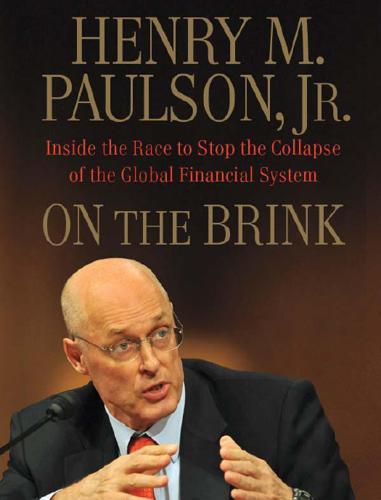
On the Brink: Inside the Race to Stop the Collapse of the Global Financial System
by
Henry M. Paulson
Published 15 Sep 2010
ACRONYMS USED IN THE TEXT ABCP: asset-backed commercial paper AIG: American International Group AMLF: Asset-Backed Commercial Paper Money Market Fund Liquidity Facility ARM: adjustable-rate mortgage ASF: American Securitization Forum BofA: Bank of America CDO: collateralized debt obligation CDS: credit default swap(s) CIC: China Investment Corporation CPP: capital purchase program ECB: European Central Bank ESF: Exchange Stabilization Fund FDIC: Federal Deposit Insurance Corporation FHA: Federal Housing Administration FHFA: Federal Housing Finance Agency FSA: Financial Services Authority FSB: Financial Stability Board GAO: Government Accountability Office GDP: gross domestic product GSE: government-sponsored enterprise (Fannie Mae, Freddie Mac) HERA: Housing and Economic Recovery Act HUD: U.S. Department of Housing and Urban Development IASB: International Accounting Standards Board IMF: International Monetary Fund KDB: Korea Development Bank LIBOR: London Interbank Offered Rate LIBOR-OIS: London Interbank Offered Rate–overnight indexed swap LTCM: Long-Term Capital Management MAC: material adverse change MBS: mortgage-backed securities MLEC: Master Liquidity Enhancement Conduit NAV: net asset value NEC: National Economic Council OCC: Office of the Comptroller of the Currency OFHEO: Office of Federal Housing Enterprise Oversight OTC: over the counter PDCF: Primary Dealer Credit Facility PWG: President’s Working Group on Financial Markets S&P 500: Standard & Poor’s 500 Index SARS: severe acute respiratory syndrome SEC: Securities and Exchange Commission SED: Strategic Economic Dialogue SIV: structured investment vehicle TAF: Term Auction Facility TALF: Term Asset-Backed Securities Loan Facility TARP: Troubled Assets Relief Program TIAA-CREF: Teachers Insurance and Annuity Association of America and College Retirement Equities Fund TLGP: Temporary Liquidity Guarantee Program TSLF: Term Securities Lending Facility WaMu: Washington Mutual ACKNOWLEDGMENTS Writing On the Brink required me not only to live through the crisis the first time, but also to live through it again.
…
What made it special was our complete candor—laying all the cards on the table, determining where we had differences, and talking very directly about them. I kept Ben abreast of what I saw happening, passing along to him any market color I picked up from my conversations with senior bankers in the U.S. and around the world, including difficulties we’d begun to see in July with funding based on the London Interbank Offered Rate (LIBOR). By law, the Federal Reserve operates independently of the Treasury Department. Though we took care to observe this separation, Ben, Tim Geithner, and I developed a spirit of teamwork that allowed us to talk continually throughout the oncoming crisis without compromising the Fed’s independence.
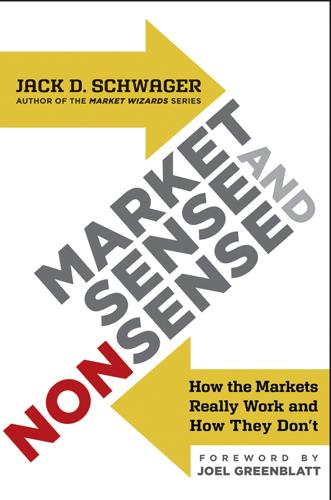
Market Sense and Nonsense
by
Jack D. Schwager
Published 5 Oct 2012
As is the case of equity hedge funds, the net exposure held by credit arbitrage managers can vary widely. Although some managers run a true arbitrage strategy, approximately balancing long and short positions, most credit-based hedge funds will routinely maintain significant net long exposure. A common approach is for credit arbitrage managers to borrow money at the London interbank offered rate (LIBOR) plus and buy corporate bonds or other debt instruments with the proceeds, earning the interest rate differential on the borrowed assets. As long as credit spreads move sideways or narrow, this approach will be very profitable with minimal downside volatility. The risk, however, is that if credit spreads widen significantly, the combination of leverage and the assumption of credit risk (through net long positions) can lead to substantial losses.
…
Treasury bills types of Hedge funds investment about advantages of hidden risk managed futures perception vs. reality rationale for single fund risk Hedge selling Hedgers Hedging Hidden risk Hidden risk evaluation qualitative assessment quantitative measures High-water mark Housing bubble (mid-2000s) Hseigh, David Hulbert Financial Digest Human emotions Idiosyncratic risk Illiquid portfolio Illiquid trades Illiquidity risk Incentive fees Index funds Indicators contrarian credit quality of differentiation of diversification of future performance futures market as interest rates merger arbitrage past as past returns return levels risk volatility Inflation Information availability efficient use of Initial public offerings (IPO) Insider trading Institutional investors Interest rates Internet bubble In-the-money options Inverse correlated fund Inverse relationship Investment analysis Investment decisions Investment durations Investment insights correlation diversification hedge fund of funds hedge funds leverage managed accounts past performance portfolio allocations portfolio considerations portfolio rebalancing pro-forma statistics track records volatility Investment principle Investment size, maximum Investment strategies Investment timing Investor behavior Investor fees Investor requirements IPO price Irrational behavior Irrational choices Jones, Alfred Winslow Junk bonds Kahneman, Daniel Knowledge use Kudlow, Larry Lack, Simon Lagged shifts in supply Leverage about danger from investor performance and and risk Leverage risk Leveraged EFTs Leveraged/rebalanced funds Liar loans Life, Liberty and Property (Jones) Limit orders Linear relationships Liquidation selling Liquidations Liquidity of futures Liquidity crunch Liquidity risk Lockups London interbank offered rate (LIBOR) London Metal Exchange Long bias position Long only hedge funds Long-Term Capital Management (LTCM) Long-term investment Look-back period Loomis, Carol J. Lowenstein, Roger Luck Mad Money Madoff scandal Managed accounts advantages of vs. funds in hedge funds individual vs. indirect management objections to Managed futures Management fees Manager performance Managers hedge funds vs.
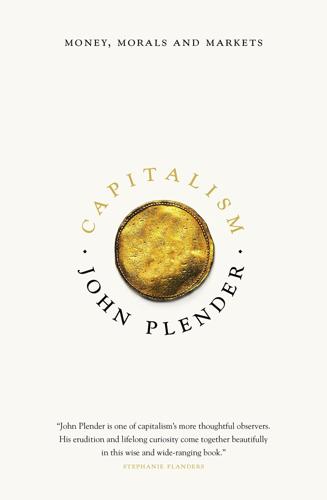
Capitalism: Money, Morals and Markets
by
John Plender
Published 27 Jul 2015
The biggest banks in the US and Europe appear to have suffered an extraordinary collapse of ethical standards in the light not only of widespread mis-selling but of the numerous criminal charges brought against them for rigging the interbank lending rates used in global financial markets such as the London Interbank Offered Rate; rigging the foreign exchange market; criminal violations of the US sanctions regime against Iran; criminal drug money laundering; and facilitating tax evasion. The economist J. K. Galbraith had an interesting theory on morality in financial markets: At any given time there exists an inventory of undiscovered embezzlement in – or more precisely not in – the country’s businesses and banks.
…
H. 1 Laws (Plato) 1, 2 Lay, Kenneth 1 Lazard Brothers 1 Le Rêve (Picasso) 1 Leeson, Nick 1 Lehman Brothers 1, 2, 3, 4, 5, 6 Lenin 1, 2 Leonardo da Vinci 1 Letters on the Aesthetic Education of Mankind (Friedrich Schiller) 1 Lettres Philosophiques (Voltaire) 1 Lewis, John Spedan 1 Lewis, Michael 1, 2 Lewis, Sinclair 1 Liar’s Poker (Michael Lewis) 1 liberal internationalism 1, 2, 3 limited liability 1, 2, 3, 4 Little Dorrit (Dickens) 1, 2 Livermore, Jesse 1 Lloyd George, David 1 ‘Locksley Hall’ (Tennyson) 1 London Interbank Offered Rate 1 Long-Term Capital Management (hedge fund) 1 Louis XIV of France 1, 2 Lowenstein, Roger 1 Lucas, Robert 1 Lunar Society 1 McDonald’s theory of conflict 1 McDonough, William 1 Machiavelli 1, 2 Mackay, Charles 1, 2, 3, 4 McKenna, Reginald 1, 2 McKinley, William 1 Madame Nui’s toad 1 Maddison, Angus 1 madness of crowds 1 Madouros, Vasileios 1 Major Barbara (George Bernard Shaw) 1 Making of the English Working Class (E.

Debtor Nation: The History of America in Red Ink (Politics and Society in Modern America)
by
Louis Hyman
Published 3 Jan 2011
The credit card– backed security required the skills and assets of both commercial banks and investment banks, in this case Bank One and Salomon Brothers. Not to be outdone, by January of 1987 MBNA securitized its first pool of credit card receivables through the investment bank Morgan Guaranty.147 Unlike Bank One’s security, which paid a fixed rate, MBNA’s security paid a floating rate pegged to the London Interbank Offered Rate—a standard internationally recognized interest rate. Such a feature eliminated the interest rate risk in such a security, something that could threaten the value of a fixed rate security like a traditional mortgage. But the riskiness of unsecured debt, compared to the secured debt of mortgages, made the card bonds look for ways to decrease the risk of investments.
…
First USA, for instance, securitized two-thirds of its debt, according to its CFO Peter Bartholow. In 1994, as First USA’s portfolio doubled to $11 billion, its securitized debt rose from $2.6 billion to $7.2 billion.161 With tranches, First USA’s rival Advanta could offer a tranche of its security as a AAA bond and pay only 0.18 percent more than London Interbank Offered Rate (LIBOR). Advanta would have to pay a much higher rate to its last tranche, and use credit default insurance, but for the other tranches the rate was very low. Instead of not being able to sell any of its debt as a BBB bond, it could sell nearly all of its debt with an AAA rating. Compressing the bulk of the risk to the last tranche and then using insurance to offset that risk, companies with few assets could sell AAA bonds.
…
Chemical Bank (1992), 359n251 Hilton Hotel, Carte Blanche card, 170 Hire-Purchase in a Free Society (Harris, Naylor, and Seldon), 295n12 History of Consumer Credit, The: Doctrines and Practices (Gelpi), 295n12 Hodge, Paul, 115 home equity loans, 220–23, 234–37, 252, 275–78 Home Owners’ Loan Corporation (HOLC), 46, 49–50, 68, 71, 302n24, 306n71; criticism of from business, 50; lack of funding for, 50 INDEX hooks, bell, 347n139 Hoover, 300n106 Hopkins, Harry, 66 Horowitz, Daniel, 293n6, 294n9 Household Finance Company, 13, 237, 266, 276, 278; Children’s Spending instruction book, 281–82 Housing and Urban Development Act (1968), 221, 225, 231, 232, 283, 350n14; Section 235 program, 226–27, 334n42 Howard, Betty, 192, 201 Hubbard, Dehart, 141 Hudson County National Bank, 76 hybrid credit, 99, 113–18 Hyman, Louis, 350n5 Ickes, Harold, 50, 51, 52, 59, 62, 71, 71–72 inflation, 100–101, 119, 221 installment coupon books, 123–24 installment credit, 3, 4, 6, 10, 11, 12, 100, 100–101, 107–8, 113–14, 317n5; in the 1920s, 20–31; and class identity, 36–42; and collection fees, 29–30; comparison of to personal loans, 75–76; consumers’ abandonment of, 150; decrease in importance of by the early 1960s, 166–67; demise of, 167; and down payments, 29–30; at the end of the 1920s, 42–44; financial infrastructure of, 21; and gender relations, 36–42; and pricing schemes, 319n37; and Regulation W, 115–18; risk of for borrowers, 35–36; in urban ghettos, 177, 178, 179; in Western Europe, 8; without resale, 31–36 installment financing theory, in the 1920s and 1930s, 308n115 “Installment Selling and the Consumer: A Brief for Regulation” (Nugent and Henderson), 100 Interbank Card Association, 240 interest rates: D’Amato’s push for an interest rate cap, 259–62; the end of rate caps, 244–47; floating interest rates, 236, 272, 278, 279; individual interest rates, 218; interest rate deregulation, 246–47; of loan sharks, 14; London Interbank Offered Rate, 255 Irresistible Empire: America’s Advance through Twentieth-Century Europe (De Grazia), 295n12 INDEX Isenberg, Alison, 295n11 It’s in the Cards: Consumer Credit and the American Experience (L. Klein), 293n6 Jackson, Philip, 226 Jacob, John, 187–90 Jacobs, Meg, 295n11 Jacobson, Matthew, 302n180 Javits, Jacob, 182 J.
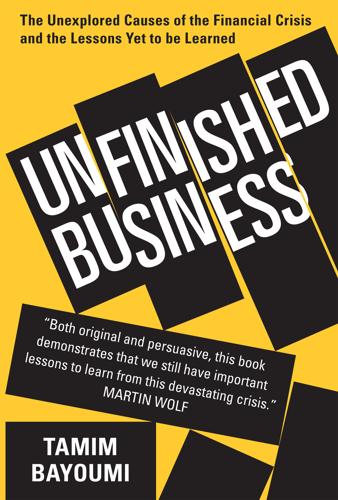
Unfinished Business
by
Tamim Bayoumi
Given a paucity of domestic investment opportunities, these petrodollars were mainly deposited at the major US banks at a time when the interaction of rising inflation and limits on deposit and lending rates were constraining domestic lending. Consequently, the petrodollars were mainly recycled as international loans that were protected from changes in exchange rates since they were made in dollars and protected from fluctuations in US interest rates as the rate was changed twice a year using the six-month London Interbank Offering Rate (LIBOR). Most of the money went to developing countries, particularly in Latin America, a part of the world that was growing rapidly and whose economic prospects appeared bright. Concerns were expressed by some about the rapid increase in foreign lending by the major US banks. For example, in 1977 the Chair of the Federal Reserve, Arthur Burns, said that “commercial and investment bankers need to monitor their foreign lending with great care” and the US regulators issued warning letters and started monitoring overseas borrowing more closely.16 But this was a minority view and most policymakers were unworried, including the administration of President Ford.
…
(‘Lawrence of Arabia’), (i) Lehman Brothers (US investment bank) assets, (i) bankruptcy and collapse, (i), (ii), (iii), (iv), (v), (vi), (vii), (viii), (ix), (x), (xi), (xii), (xiii), (xiv), (xv) competes with other investment banks, (i) and European bank competition, (i) lightly capitalized, (i), (ii) non-participation in rescue of LTCM, (i) as regulated bank, (i) rescue, (i) Leigh-Pemberton, Robert, (i), (ii), (iii) leverage, (i), (ii), (iii), (iv), (v), (vi) Lewis, Michael: The Big Short, (i) light touch regulation, (i), (ii), (iii), (iv), (v) lira (Italian currency) Bundesbank ceases to support, (i), (ii) ejected from ERM and rejoins, (i) see also Italy Lisbon accords (2000), (i) loan-to-value ratios, (i) London ‘big bang’ (October 1986), (i) as financial center, (i) London Interbank Offering Rate (LIBOR), (i) Long Depression (1870s), (i) Long-Term Capital Management (LTCM; hedge fund), (i), (ii) Louvre Accord (1987), (i), (ii) Lucas, Robert E., (i) Luxembourg in European Coal and Steel Community, (i) and monetary union, (i) Maastricht Treaty on Economic Union (1992), (i), (ii), (iii), (iv), (v), (vi), (vii), (viii), (ix), (x), (xi), (xii), (xiii) macroeconomics and ‘Abenomics’, (i) and attitude to free markets, (i), (ii) and business cycle fluctuations, (i) and DSGE models, (i) and effect of single currency, (i) and ‘homo economicus’, (i), (ii) internal balance, (i) origin after Great Depression, (i) orthodoxy and policy challenges, (i), (ii), (iii) and policy cooperation/integration, (i), (ii) and private sector, (i) and role of central banks, (i) unsettled environment, (i) and wariness of major structural reforms, (i) Maine (US state): and interstate banking, (i) Malaysia: Asia financial crisis (i), (ii), (iii), (iv) Manufactures Hanover (US bank), (i) markets (financial) and competition, (i) differ from country to country, (i) and macroeconomic theory, (i), (ii) unpredictability, (i) see also efficient market hypothesis Merrill Lynch (US investment bank) and European competition, (i) lightly capitalized, (i), (ii) as LTCM creditor, (i) merges, (i) as regulated bank, (i) size, (i) Merriweather, John, (i) Merton, Robert, (i) Mexico: debts, (i) micro-prudential regulation and supervision, (i), (ii) misery index, (i), (ii) Mitterrand, François, (i), (ii), (iii), (iv), (v), (vi), (vii), (viii) Models Task Force, (i) ‘Monetarists’ (Euro area): differ from ‘Economists’, (i), (ii), (iii), (iv), (v), (vi) monetary policy, (i), (ii), (iii), (iv), (v) see also currency unions monetary union see European Monetary Union; single currency Monnet, Jean, (i) monopolies, (i) Morgan Grenfell (UK investment bank), (i), (ii) Morgan, John Pierpont, (i) Morgan Stanley (US investment bank) applies for bank holding company status, (i) assets, (i) becomes regulated bank, (i) and European competition, (i) lightly capitalized, (i) as LTCM creditor, (i) as shadow bank, (i) size, (i) mortgages back assets and securities, (i), (ii), (iii), (iv), (v) bundling, (i) creditworthiness and securitization, (i), (ii), (iii), (iv), (v) European investment in US, (i) market collapse, (i) residential, (i) sale of, (i), (ii) subprime, (i), (ii), (iii), (iv) in US, (i), (ii), (iii) Moynihan, Daniel, (i) Mullins, David, (i) Multilateral Development Banks (MDBs), (i) Mutual Assessment Process (MAP), (i) mutual funds, (i), (ii) mutual recognition (European Union), (i) Napoleon I (Bonaparte), Emperor of France, (i) NationsBank (US bank), (i) Natixis (French bank), (i), (ii) net asset value (NAV), (i) Net Capital Rule (US), (i), (ii) net stable funding ratio (NSFR), (i) Netherlands aims for European integration, (i) bank assets, (i) banking expansion, (i), (ii), (iii) banking system (2002), (i), (ii) close economic ties with Germany, (i) and ERM crisis, (i) in European Coal and Steel Community, (i) exports to Germany, (i) and financial crisis, (i) guilder revalued, (i) and investment banking, (i) and monetary union, (i), (ii) trade boost, (i) New Deal (US, 1930s), (i) New England (US): house prices, (i), (ii) New York city: as financial center, (i) New York (US state): interstate banking, (i) Nixon, Richard M., (i), (ii) North Atlantic crisis and Basel rules, (i) causes, (i) and currency unions, (i) and debt flows, (i) and economic models, (i) effects and consequences, (i), (ii), (iii), (iv) ends European banking boom, (i) European monetary union effect on, (i) and fall in confidence in experts, (i) financial boom and bust, (i), (ii) misery index, (i) origins (August 2007), (i), (ii), (iii) output losses, (i), (ii) responses to, (i), (ii), (iii), (iv) responsibility for, (i) and speculative ventures, (i) unpreparedness, (i), (ii), (iii) as watershed event, (i) Norway invited to join European Economic Community, (i) in Scandinavian monetary union, (i) Obama, Barack, (i) Office of the Comptroller of the Currency (OCC; US), (i), (ii), (iii) oil prices, (i), (ii) Organisation for Economic Cooperation and Development (OECD), (i) output losses, (i), (ii) volatility, (i) Outright Monetary Transaction (OMT, Euro area), (i), (ii), (iii) Padoa-Schioppa, Tommaso, (i), (ii) Parvest Dynamic ABS, (i) petrodollars, (i), (ii) Philippines, (i) physics: parallel with economic models, (i) Plaza Agreement (1985), (i), (ii), (iii) Pöhl, Karl Otto, (i), (ii), (iii) Pompidou, Georges, (i) Portugal borrowing interest rate, (i) commercial loans, (i) connected firms in, (i) in currency union periphery, (i) in Euro area, (i) European aid to, (i) excessive borrowing, (i) in Exchange Rate Mechanism, (i) expansion in bank assets, (i) financial crisis in, (i), (ii), (iii) high interest rates, (i) product market improvements, (i) reduces fiscal deficit, (i) ten-year bonds, (i) pound sterling (UK currency) Bundesbank ceases to support, (i), (ii) devalued, (i) diminishing role, (i) leaves ERM, (i) prisoners’ dilemma, (i) public sector borrowers, (i) quantitative easing, (i) quantum mechanics, parallels to economics, (i), (ii) Quantitative Impact Studies (QISs), (i) Rajan, Raghuram, (i) random walk theory, (i) rational expectations, (i) Reagan, Ronald, (i), (ii), (iii), (iv) Regulation Q see United States of America Reigal Neal Interstate Branching Efficiency Act (US, 1997), (i) renmimbi (Chinese currency): depreciation against dollar (1994), (i) repurchase agreements (repos) broker-dealers exploit, (i) collateral, (i), (ii), (iii), (iv) expansion, (i) and foreign borrowing, (i) freeze, (i) fund housing bubble, (i) liquidity, (i) market shrinks in US, (i) as source of investment bank funding, (i) Ricardian equivalence, (i) Ricardian offset, (i) risk models, (i), (ii), (iii), (iv), (v), (vi), (vii), (viii), (ix), (x), (xi), (xii), (xiii), (xiv), (xv) risk-weighted assets, (i), (ii), (iii) Rochard, Michel, (i) Rome, Treaty of (1957), (i), (ii), (iii), (iv), (v), (vi) Roosevelt, Franklin D., (i) Roubini, Nouriel, (i) Royal Bank of Scotland (RBS; UK bank), (i) Russia exchange rate collapse (1998), (i) joins WTO, (i) safe haven bankruptcy protection (US), (i) Sanio, Jochen, (i) Santander (Spanish bank) assets expanded, (i) capitalization, (i) international scope, (i) as mega-bank, (i) takeovers, (i) Sants, Hector, (i) Savings and Loans (US), (i), (ii) Scandinavia: monetary union, (i) Schmidt, Helmut, (i), (ii), (iii) Schoales, Myron, (i) Securities and Exchange Commission (SEC; US) and mortgage-backed securities, (i) registers hedge funds, (i) and regulation, (i), (ii), (iii), (iv) Release 47683 widens repurchase agreement collateral, (i) and repo market, (i), (ii), (iii), (iv) securitization and mortgages, (i), (ii), (iii), (iv), (v), (vi) private label, (i) in US, (i), (ii), (iii), (iv), (v), (vi) Security Pacific Corporation (US bank), (i) shadow banks see United States of America share prices: fluctuations and predictions, (i), (ii) Shiller, Robert, (i), (ii), (iii) Silva-Herzog, Jesus, (i) silver: in US money supply, (i) single currency benefits, (i) effect on trade, (i) and macroeconomic shocks, (i) see also Euro area Single European Act (1986), (i), (ii), (iii), (iv), (v) Smith, Adam, (i), (ii) Smithsonian Agreement, (i), (ii) snake currency arrangement (Europe), (i), (ii) Société Générale (French bank): expansion, (i), (ii), (iii) South Korea, (i), (ii), (iii), (iv) Spain borrowing interest rate, (i) caja savings banks, (i) commercial loans, (i) in currency union periphery, (i) ejected from Exchange Rate Mechanism, (i) excessive borrowing, (i) in Exchange Rate Mechanism, (i) expansion in bank assets, (i) and ESM funding to restructure banking system, (i) financial crisis in, (i), (ii), (iii) high interest rates, (i) housing, (i), (ii) included in Euro area, (i) local governments in, (i) reduces fiscal deficit, (i) successful effect of reforms, (i) ten-year bonds, (i) Stability and Growth Pact (SGP, Euro area), (i), (ii), (iii), (iv), (v) Strasbourg summit (of European leaders, 1990), (i), (ii) Strauss-Kahn, Dominique, (i) stressed value-at-risk models (SVARs), (i) Suez (French bank), (i) supply and demand, law of, (i) Sweden in Basel Committee, (i) and currency fluctuations, (i) in Scandinavian monetary union, (i) Switzerland in financial crisis, (i) trade with EMU members, (i) taxes cuts, (i), (ii), (iii), (iv) favor debt over equity, (i) kept low, (i) little effect on private spending, (i) TCW (US bank), (i) Texas: house prices fall, (i) Thailand, (i), (ii), (iii), (iv) Thatcher, Margaret, (i), (ii), (iii), (iv), (v), (vi) trade: affected by single currency, (i) trade balance, (i) Travelers Group (US financial institution), (i) Trichet, Jean-Claude, (i) Trump, Donald elected President, (i) and fiscal stimulus, (i) looser view on bank regulation, (i) proposes tax cuts, (i) UBS (Swiss bank), (i) UniCredit (Italian bank), (i), (ii), (iii) United Kingdom (Britain) bank assets reduced since 2008, (i) banking expansion, (i), (ii) banking system, (i) bond markets, (i) central bank independence, (i) common capital standard agreed with US, (i) core Euro banks expand into, (i) and currency fluctuations, (i) favors larger bank capital buffers, (i) favours EU-wide bank regulator, (i) financial crisis (1866), (i) foreign banks in, (i) foreign investments in, (i) high inflation, (i), (ii) invited to join European Economic Community, (i) joins Exchange Rate Mechanism, (i) large outflows, (i) leaves European Union, (i) leaves Exchange Rate Mechanism, (i), (ii) ‘light touch’ regulation, (i), (ii), (iii), (iv), (v) in North Atlantic financial crisis (2008), (i) opts out of Maastricht Treaty, (i) owns US assets, (i), (ii) product market, (i) rebate from EEC budget, (i) resists monetary union, (i), (ii) scale of banking, (i) separated commercial and investment (merchant) banks, (i) trade with EMU members, (i) see also pound sterling United States of America accepts Basel 3 framework for large banks, (i) accounting practices, (i) adopts new leverage ratio, (i) aggregate spending, (i) anchor regions and peripheries in currency union, (i) and Asian crisis, (i) assets held by European banks, (i), (ii) bank assets reduced since 2008, (i) bank deposits migrate, (i) bank failures and prompt corrective action, (i) bank mergers, (i) bank size compared with Europe, (i) bankers’ morality, (i) banking expansion, (i) banking regulation, (i), (ii), (iii), (iv), (v), (vi), (vii) and Basel 2 accord, (i) in Basel Committee, (i) bond markets, (i) bond yields fall, (i) business cycles, (i) champions internal risk models, (i) common capital standard agreed with UK, (i) consumer price index, (i) core Euro banks expand into, (i) as crisis country, (i) currency as international standard, (i) currency union in, (i), (ii), (iii) debt outflows, (i) deregulation, (i), (ii) devaluation, (i) effect of break-up of Bretton Woods on, (i) effect of post-crisis changes, (i), (ii) Euro area lends to, (i), (ii) European universal banks in, (i), (ii) favors larger bank capital buffers, (i) federal support for banks, (i) federal tax system, (i) financial boom, (i), (ii) financial reform in, (i), (ii) financial system (2002), (i), (ii) floating exchange rates, (i) Flow of Funds data, (i), (ii) fractured banking system, (i) and gold market, (i) high tech boom collapses, (i) house prices, (i), (ii), (iii), (iv), (v), (vi), (vii), (viii), (ix), (x), (xi), (xii), (xiii), (xiv), (xv) imposes surcharge on foreign imports, (i) improved monetary policy, (i) inflation fluctuates, (i), (ii), (iii), (iv), (v), (vi) integrated banking system, (i) interest rates limited, (i), (ii), (iii) investment bank expansion, (i), (ii) investment bank regulation, (i), (ii), (iii) labor market flexibility, (i) and Latin American debt crisis, (i), (ii) misery index, (i) modest recovery from crisis, (i) national (interstate) banks, (i), (ii), (iii), (iv) national price movements, (i) and oil prices, (i) output volatility, (i) policy coordination fades, (i) post 2002 financial boom, (i) product market, (i) recessions (1985–2005), (i) regulation of shadow banks, (i) and repo market, (i) response to crisis, (i) responsibility for macroprudential policies, (i) and risk measures, (i), (ii) securitization, (i), (ii) separates commercial and investment banking, (i), (ii), (iii) shadow banks develop, (i), (ii), (iii), (iv), (v), (vi), (vii), (viii), (ix), (x) and small bank regulation, (i) trade balance, (i), (ii) trade with EMU members, (i) unprepared for financial crisis, (i) United States Federal Reserve Bank belief in market discipline of investment banks, (i), (ii), (iii), (iv), (v) and business cycle, (i) conducts stress tests, (i) cooperation of monetary and fiscal policy, (i) eases rates, (i), (ii) easy financing conditions, (i) emergency funding, (i), (ii) faith in investors’ judgment, (i) helps stabilize markets, (i) and house price boom, (i) and inflation rates, (i) monetary policy, (i) as proposed model for European Central Bank, (i) provides safety net, (i), (ii) regulates mortgage lending standards, (i) and regulation of investment banks, (i), (ii) Regulation Q, (i) regulatory function and practice, (i), (ii), (iii), (iv) response to crisis, (i) and risk models, (i), (ii), (iii) and tax cuts, (i) urges reform of Basel (i), (ii) warns about loans to Latin America, (i) value-at-risk models (VARs), (i) Venezuela, (i) Versailles Treaty (1919), (i) Vietnam War, (i) Volcker, Paul, (i), (ii) rule, (i) Wachovia Corporation (US bank), (i) Wall Street: reform, (i) waterfall investment structures, (i) welfare payments, (i) Wells Fargo (US bank), (i), (ii) Werner Commission Report (Europe) (1970), (i), (ii), (iii) West Germany economic growth, (i) in European Coal and Steel Community, (i) see also Germany White, Bill, (i) White, Harry Dexter, (i) won (S.
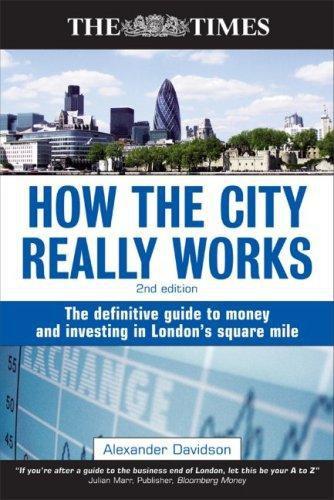
How the City Really Works: The Definitive Guide to Money and Investing in London's Square Mile
by
Alexander Davidson
Published 1 Apr 2008
A rolling cash bet on Vodafone has a spread of a quarter of a point at the time of writing, which is the same as on its shares. Spreads, even as narrow as this, are one way in which spread betting firms make their money. A second way is through overnight lending charges to traders on rolling cash bets, which are based on 100 per cent of the underlying money. The daily charge is typically LIBOR (London Interbank Offered Rate – at which banks can borrow from other banks) plus perhaps 2 or 3 per cent, which is divided by 365, representing days of the year. It is a small daily sum but, on an aggregate basis from all customers, it makes a profit for the spread betting firm. If you take a short position, it is the firm that pays interest on overnight positions.
…
Index 419 fraud 204 9/11 terrorist attacks 31, 218, 242, 243, 254, 257 Abbey National 22 ABN AMRO 103 accounting and governance 232–38 scandals 232 Accounting Standards Board (ASB) 236 administration 17 Allianz 207 Alternative Investment Market (AIM) 44–45, 131, 183, 238 Amaranth Advisors 170 analysts 172–78 fundamental 172–74 others 177–78 Spitzer impact 174–75 technical 175–77 anti-fraud agencies Assets Recovery Agency 211–13 City of London Police 209 Financial Services Authority 208 Financial Crime and Intelligence Division 208 Insurance Fraud Bureau 209 Insurance Fraud Investigators Group 209 International Association of Insurance Fraud Agencies 207, 210, 218 National Criminal Intelligence Service 210 Serious Fraud Office 213–15 Serious Organised Crime Agency 210–11 asset finance 24–25 Association of Investment Companies 167 backwardation 101 bad debt, collection of 26–28 Banco Santander Central Hispano 22 Bank for International Settlements (BIS) 17, 27, 85, 98, 114 bank guarantee 23 Bank of Credit and Commerce International (BCCI) 10, 214 Bank of England 6, 10–17 Court of the 11 credit risk warning 98 framework for sterling money markets 81 Governor 11, 13, 14 history 10, 15–16 Inflation Report 14 inflation targeting 12–13 interest rates and 12 international liaison 17 lender of last resort 15–17 Market Abuse Directive (MAD) 16 monetary policy and 12–15 Monetary Policy Committee (MPC) 13–14 Open-market operations 15, 82 repo rate 12, 15 role 11–12 RTGS (Real Time Gross Settlement) 143 statutory immunity 11 supervisory role 11 Bank of England Act 1988 11, 12 Bank of England Quarterly Model (BEQM) 14 Banking Act 1933 see Glass-Steagall Act banks commercial 5 investment 5 Barclays Bank 20 Barings 11, 15, 68, 186, 299 Barlow Clowes case 214 Barron’s 99 base rate see repo rate Basel Committee for Banking Supervision (BCBS) 27–28 ____________________________________________________ INDEX 303 Basel I 27 Basel II 27–28, 56 Bear Stearns 95, 97 BearingPoint 97 bill of exchange 26 Bingham, Lord Justice 10–11 Blue Arrow trial 214 BNP Paribas 145, 150 bond issues see credit products book runners 51, 92 Borsa Italiana 8, 139 bps 90 British Bankers’ Association 20, 96, 97 building societies 22–23 demutualisation 22 Building Societies Association 22 Capital Asset Pricing Model (CAPM) see discounted cash flow analysis capital gains tax 73, 75, 163, 168 capital raising markets 42–46 mergers and acquisitions (M&A) 56–58 see also flotation, bond issues Capital Requirements Directive 28, 94 central securities depository (CSD) 145 international (ICSD) 145 Central Warrants Trading Service 73 Chancellor of the Exchequer 12, 13, 229 Chicago Mercantile Exchange 65 Citigroup 136, 145, 150 City of London 4–9 Big Bang 7 definition 4 employment in 8–9 financial markets 5 geography 4–5 history 6–7 services offered 4 world leader 5–6 clearing 140, 141–42 Clearing House Automated Payment System (CHAPS) 143 Clearstream Banking Luxembourg 92, 145 commercial banking 5, 18–28 bad loans and capital adequacy 26–28 banking cards 21 building societies 22–23 credit collection 25–26 finance raising 23–25 history 18–19 overdrafts 23 role today 19–21 commodities market 99–109 exchange-traded commodities 101 fluctuations 100 futures 100 hard commodities energy 102 non-ferrous metals 102–04 precious metal 104–06 soft commodities cocoa 107 coffee 106 sugar 107 Companies Act 2006 204, 223, 236 conflict of interests 7 consolidation 138–39 Consumer Price Index (CPI) 13 contango 101 Continuous Linked Settlement (CLS) 119 corporate governance 223–38 best practice 231 Cadbury Code 224 Combined Code 43, 225 compliance 230 definition 223 Directors’ Remuneration Report Regulations 226 EU developments 230 European auditing rules 234–35 Greenbury Committee 224–25 Higgs and Smith reports 227 International Financial Reporting Standards (IFRS) 237–38 Listing Rules 228–29 Model Code 229 Myners Report 229 OECD Principles 226 operating and financial review (OFR) 235– 36 revised Combined Code 227–28 Sarbanes–Oxley Act 233–34 Turnbull Report 225 credit cards 21 zero-per-cent cards 21 credit collection 25–26 factoring and invoice discounting 26 trade finance 25–26 credit derivatives 96–97 back office issues 97 credit default swap (CDS) 96–97 credit products asset-backed securities 94 bonds 90–91 collateralised debt obligations 94–95 collateralised loan obligation 95 covered bonds 93 equity convertibles 93 international debt securities 92–93 304 INDEX ____________________________________________________ junk bonds 91 zero-coupon bonds 93 credit rating agencies 91 Credit Suisse 5, 136, 193 CREST system 141, 142–44 dark liquidity pools 138 Debt Management Office 82, 86 Department of Trade and Industry (DTI) 235, 251, 282 derivatives 60–77 asset classes 60 bilateral settlement 66 cash and 60–61 central counterparty clearing 65–66 contracts for difference 76–77, 129 covered warrants 72–73 futures 71–72 hedging and speculation 67 on-exchange vs OTC derivatives 63–65 options 69–71 Black-Scholes model 70 call option 70 equity option 70–71 index options 71 put option 70 problems and fraud 67–68 retail investors and 69–77 spread betting 73–75 transactions forward (future) 61–62 option 62 spot 61 swap 62–63 useful websites 75 Deutsche Bank 136 Deutsche Börse 64, 138 discounted cash flow analysis (DCF) 39 dividend 29 domestic financial services complaint and compensation 279–80 financial advisors 277–78 Insurance Mediation Directive 278–79 investments with life insurance 275–76 life insurance term 275 whole-of-life 274–75 NEWICOB 279 property and mortgages 273–74 protection products 275 savings products 276–77 Dow theory 175 easyJet 67 EDX London 66 Egg 20, 21 Elliott Wave Theory 176 Enron 67, 114, 186, 232, 233 enterprise investment schemes 167–68 Equiduct 133–34, 137 Equitable Life 282 equities 29–35 market indices 32–33 market influencers 40–41 nominee accounts 31 shares 29–32 stockbrokers 33–34 valuation 35–41 equity transparency 64 Eurex 64, 65 Euro Overnight Index Average (EURONIA) 85 euro, the 17, 115 Eurobond 6, 92 Euroclear Bank 92, 146, 148–49 Euronext.liffe 5, 60, 65, 71 European Central Bank (ECB) 16, 17, 84, 148 European Central Counterparty (EuroCCP) 136 European Code of Conduct 146–47, 150 European Exchange Rate Mechanism 114 European Harmonised Index of Consumer Prices 13 European Union Capital Requirements Directive 199 Market Abuse Directive (MAD) 16, 196 Market in Financial Instruments Directive (MiFID) 64, 197–99 Money Laundering Directive 219 Prospectus Directive 196–97 Transparency Directive 197 exchange controls 6 expectation theory 172 Exxon Valdez 250 factoring see credit collection Factors and Discounters Association 26 Fair & Clear Group 145–46 Federal Deposit Insurance Corporation 17 Federation of European Securities Exchanges 137 Fighting Fraud Together 200–01 finance, raising 23–25 asset 24–25 committed 23 project finance 24 recourse loan 24 syndicated loan 23–24 uncommitted 23 Financial Action Task Force on Money Laundering (FATF) 217–18 financial communications 179–89 ____________________________________________________ INDEX 305 advertising 189 corporate information flow 185 primary information providers (PIPs) 185 investor relations 183–84 journalists 185–89 public relations 179–183 black PR’ 182–83 tipsters 187–89 City Slickers case 188–89 Financial Ombudsman Service (FOS) 165, 279–80 financial ratios 36–39 dividend cover 37 earnings per share (EPS) 36 EBITDA 38 enterprise multiple 38 gearing 38 net asset value (NAV) 38 price/earnings (P/E) 37 price-to-sales ratio 37 return on capital employed (ROCE) 38 see also discounted cash flow analysis Financial Reporting Council (FRC) 224, 228, 234, 236 Financial Services Act 1986 191–92 Financial Services Action Plan 8, 195 Financial Services and Markets Act 2001 192 Financial Services and Markets Tribunal 94 Financial Services Authority (FSA) 5, 8, 31, 44, 67, 94, 97, 103, 171, 189, 192–99 competition review 132 insurance industry 240 money laundering and 219 objectives 192 regulatory role 192–95 powers 193 principles-based 194–95 Financial Services Compensation Scheme (FSCS) 17, 165, 280 Financial Services Modernisation Act 19 financial services regulation 190–99 see also Financial Services Authority Financial Times 9, 298 First Direct 20 flipping 53 flotation beauty parade 51 book build 52 early secondary market trading 53 grey market 52, 74 initial public offering (IPO) 47–53 pre-marketing 51–52 pricing 52–53 specialist types of share issue accelerated book build 54 bought deal 54 deeply discounted rights issue 55 introduction 55 placing 55 placing and open offer 55 rights issues 54–55 underwriting 52 foreign exchange 109–120 brokers 113 dealers 113 default risk 119 electronic trading 117 exchange rate 115 ICAP Knowledge Centre 120 investors 113–14 transaction types derivatives 116–17 spot market 115–16 Foreign Exchange Joint Standing Committee 112 forward rate agreement 85 fraud 200–15 advanced fee frauds 204–05 boiler rooms 201–04 Regulation S 202 future regulation 215 identity theft 205–06 insurance fraud 206–08 see also anti-fraud agencies Fraud Act 2006 200 FTSE 100 32, 36, 58, 122, 189, 227, 233 FTSE 250 32, 122 FTSE All-Share Index 32, 122 FTSE Group 131 FTSE SmallCap Index 32 FTSE Sterling Corporate Bond Index 33 Futures and Options Association 131 Generally Accepted Accounting Principles (GAAP) 237, 257 gilts 33, 86–88 Giovanni Group 146 Glass-Steagall Act 7, 19 Global Bond Market Forum 64 Goldman Sachs 136 government bonds see gilts Guinness case 214 Halifax Bank 20 hedge funds 8, 77, 97, 156–57 derivatives-based arbitrage 156 fixed-income arbitrage 157 Hemscott 35 HM Revenue and Customs 55, 211 HSBC 20, 103 Hurricane Hugo 250 306 INDEX ____________________________________________________ Hurricane Katrina 2, 67, 242 ICE Futures 5, 66, 102 Individual Capital Adequacy Standards (ICAS) 244 inflation 12–14 cost-push 12 definition 12 demand-pull 12 quarterly Inflation Report 14 initial public offering (IPO) 47–53 institutional investors 155–58 fund managers 155–56 hedge fund managers 156–57 insurance companies 157 pension funds 158 insurance industry London and 240 market 239–40 protection and indemnity associations 241 reform 245 regulation 243 contingent commissions 243 contract certainty 243 ICAS and Solvency II 244–45 types 240–41 underwriting process 241–42 see also Lloyd’s of London, reinsurance Intercontinental Exchange 5 interest equalisation tax 6 interest rate products debt securities 82–83, 92–93 bill of exchange 83 certificate of deposit 83 debt instrument 83 euro bill 82 floating rate note 83 local authority bill 83 T-bills 82 derivatives 85 forward rate agreements (FRAs) 85–86 government bonds (gilts) 86–89 money markets 81–82 repos 84 International Financial Reporting Standards (IFRS) 58, 86, 173, 237–38 International Financial Services London (IFSL) 5, 64, 86, 92, 112 International Monetary Fund 17 International Securities Exchange 138 International Swap Dealers Association 63 International Swaps and Derivatives Association 63 International Underwriting Association (IUA) 240 investment banking 5, 47–59 mergers and acquisitions (M&A) 56–58 see also capital raising investment companies 164–69 real estate 169 split capital 166–67 venture capital 167–68 investment funds 159–64 charges 163 investment strategy 164 fund of funds scheme 164 manager-of-managers scheme 164 open-ended investment companies (OEICs) 159 selection criteria 163 total expense ratio (TER) 164 unit trusts 159 Investment Management Association 156 Investment Management Regulatory Organisation 11 Johnson Matthey Bankers Limited 15–16 Joint Money Laundering Steering Group 221 KAS Bank 145 LCH.Clearnet Limited 66, 140 letter of credit (LOC) 23, 25–26 liability-driven investment 158 Listing Rules 43, 167, 173, 225, 228–29 Lloyd’s of London 8, 246–59 capital backing 249 chain of security 252–255 Central Fund 253 Corporation of Lloyd’s 248–49, 253 Equitas Reinsurance Ltd 251, 252, 255–56 Franchise Performance Directorate 256 future 258–59 Hardship Committee 251 history 246–47, 250–52 international licenses 258 Lioncover 252, 256 Member’s Agent Pooling Arrangement (MAPA) 249, 251 Names 248, one-year accounting 257 regulation 257 solvency ratio 255 syndicate capacity 249–50 syndicates 27 loans 23–24 recourse loan 24 syndicated loan 23–24 London Interbank Offered Rate (LIBOR) 74, 76 ____________________________________________________ INDEX 307 London Stock Exchange (LSE) 7, 8, 22, 29, 32, 64 Alternative Investment Market (AIM) 32 Main Market 42–43, 55 statistics 41 trading facilities 122–27 market makers 125–27 SETSmm 122, 123, 124 SETSqx 124 Stock Exchange Electronic Trading Service (SETS) 122–25 TradElect 124–25 users 127–29 Louvre Accord 114 Markets in Financial Instruments Directive (MiFID) 64, 121, 124, 125, 130, 144, 197–99, 277 best execution policy 130–31 Maxwell, Robert 186, 214, 282 mergers and acquisitions 56–58 current speculation 57–58 disclosure and regulation 58–59 Panel on Takeovers and Mergers 57 ‘white knight’ 57 ‘white squire’ 57 Merrill Lynch 136, 174, 186, 254 money laundering 216–22 Egmont Group 218 hawala system 217 know your client (KYC) 217, 218 size of the problem 222 three stages of laundering 216 Morgan Stanley 5, 136 multilateral trading facilities Chi-X 134–35, 141 Project Turquoise 136, 141 Munich Re 207 Nasdaq 124, 138 National Strategy for Financial Capability 269 National Westminster Bank 20 Nationwide Building Society 221 net operating cash flow (NOCF) see discounted cash flow analysis New York Federal Reserve Bank (Fed) 16 Nomads 45 normal market share (NMS) 132–33 Northern Rock 16 Nymex Europe 102 NYSE Euronext 124, 138, 145 options see derivatives Oxera 52 Parmalat 67, 232 pensions alternatively secured pension 290 annuities 288–89 occupational pension final salary scheme 285–86 money purchase scheme 286 personal account 287 personal pension self-invested personal pension 288 stakeholder pension 288 state pension 283 unsecured pension 289–90 Pensions Act 2007 283 phishing 200 Piper Alpha oil disaster 250 PLUS Markets Group 32, 45–46 as alternative to LSE 45–46, 131–33 deal with OMX 132 relationship to Ofex 46 pooled investments exchange-traded funds (ETF) 169 hedge funds 169–71 see also investment companies, investment funds post-trade services 140–50 clearing 140, 141–42 safekeeping and custody 143–44 registrar services 144 settlement 140, 142–43 real-time process 142 Proceeds of Crime Act 2003 (POCA) 211, 219, 220–21 Professional Securities Market 43–44 Prudential 20 purchasing power parity 118–19 reinsurance 260–68 cat bonds 264–65 dispute resolution 268 doctrines 263 financial reinsurance 263–64 incurred but not reported (IBNR) claims insurance securitisation 265 non-proportional 261 offshore requirements 267 proportional 261 Reinsurance Directive 266–67 retrocession 262 types of contract facultative 262 treaty 262 retail banking 20 retail investors 151–155 Retail Prices Index (RPI) 13, 87 264 308 INDEX ____________________________________________________ Retail Service Provider (RSP) network Reuters 35 Royal Bank of Scotland 20, 79, 221 73 Sarbanes–Oxley Act 233–34 securities 5, 29 Securities and Futures Authority 11 self-regulatory organisations (SROs) 192 Serious Crime Bill 213 settlement 11, 31, 140, 142–43 shareholder, rights of 29 shares investment in 29–32 nominee accounts 31 valuation 35–39 ratios 36–39 see also flotation short selling 31–32, 73, 100, 157 Society for Worldwide Interbank Financial Telecommunications (SWIFT) 119 Solvency II 244–245 Soros, George 114, 115 Specialist Fund Market 44 ‘square mile’ 4 stamp duty 72, 75, 166 Sterling Overnight Index Average (SONIA) 85 Stock Exchange Automated Quotation System (SEAQ) 7, 121, 126 Stock Exchange Electronic Trading Service (SETS) see Lloyd’s of London stock market 29–33 stockbrokers 33–34 advisory 33 discretionary 33–34 execution-only 34 stocks see shares sub-prime mortgage crisis 16, 89, 94, 274 superequivalence 43 suspicious activity reports (SARs) 212, 219–22 swaps market 7 interest rates 56 swaptions 68 systematic internalisers (SI) 137–38 Target2-Securities 147–48, 150 The Times 35, 53, 291 share price tables 36–37, 40 tip sheets 33 trading platforms, electronic 80, 97, 113, 117 tranche trading 123 Treasury Select Committee 14 trend theory 175–76 UBS Warburg 103, 136 UK Listing Authority 44 Undertakings for Collective Investments in Transferable Securities (UCITS) 156 United Capital Asset Management 95 value at risk (VAR) virtual banks 20 virt-x 140 67–68 weighted-average cost of capital (WACC) see discounted cash flow analysis wholesale banking 20 wholesale markets 78–80 banks 78–79 interdealer brokers 79–80 investors 79 Woolwich Bank 20 WorldCom 67, 232 Index of Advertisers Aberdeen Asset Management PLC xiii–xv Birkbeck University of London xl–xlii BPP xliv–xlvi Brewin Dolphin Investment Banking 48–50 Cass Business School xxi–xxiv Cater Allen Private Bank 180–81 CB Richard Ellis Ltd 270–71 CDP xlviii–l Charles Schwab UK Ltd lvi–lviii City Jet Ltd x–xii The City of London inside front cover EBS Dealing Resource International 110–11 Edelman xx ESCP-EAP European School of Management vi ICAS (The Inst. of Chartered Accountants of Scotland) xxx JP Morgan Asset Management 160–62 London Business School xvi–xviii London City Airport vii–viii Morgan Lewis xxix Securities & Investments Institute ii The Share Centre 30, 152–54 Smithfield Bar and Grill lii–liv TD Waterhouse xxxii–xxxiv University of East London xxxvi–xxxviii

In FED We Trust: Ben Bernanke's War on the Great Panic
by
David Wessel
Published 3 Aug 2009
The purpose — unlike nearly everything the Fed had done for decades — was not to lower the overall level of interest rates in the economy. That’s what changes in the federal funds rate were supposed to do. The purpose was instead to reduce an important gap once of concern only to bond geeks: the spread between Fed-influenced rates and the rates banks were charging one another for loans, the London Interbank Offered Rate (LIBOR). This spread usually was a few hundredths of a percentage point. By early December, though, it had widened to around a full percentage point — a huge move, though not nearly as wide as it would get later. Basically, the gap revealed that banks were so wary of one another and so worried about their own balance sheets that they were hoarding cash instead of lending it out.
…
res=9807E1DD1F3AE633A25752C0A9629C946296D6CF CHAPTER 3: AGE OF DELUSION 50 only the third time: Press release, Board of Governors of the Federal Reserve System, February 3, 2006. http://www.federalreserve.gov/newsevents/press/other/ 20060203b.htm 50 “Alan Greenspan is perhaps” The White House, “President Attends Swearing-In Ceremony for Federal Reserve Chairman Ben Bernanke,” February 6, 2006. http://georgewbush-whitehouse.archives.gov/news/releases/2006/02/ 20060206.html 51 Bernanke’s Dashboard: From publicly available sources. Price of oil is spot price for West Texas Intermediate Crude. Unemployment is latest available on date shown. Financial stress indicator is spread between London Interbank Offered Rate (LIBOR) and overnight indexed swaps. 51 During the 2000: Joshua Cooper Ramo, “After Greenspan: The Taylor Rule?” Time, February 26, 2001. http://www.time.com/time/magazine/article/ 0,9171,999303,00.html 51 Richard Fisher: Personal communication, Richard Fisher. 52 “Jim Baker didn’t” Bob Woodward, Maestro (New York: Simon & Schuster, 2000), 19. 52 “How did my Jewish uncle” Robert B.
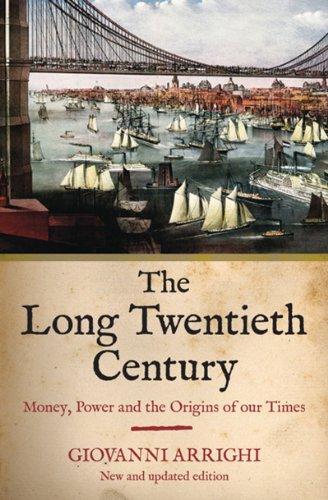
The Long Twentieth Century: Money, Power, and the Origins of Our Times
by
Giovanni Arrighi
Published 15 Mar 2010
See chartered companies, joint-stock keiretsu, 357 Kennedy, Paul, 37, 58 Kennedy administration, 352-53 Keynes, John Maynard, 191-92 Keynesianism, 2, 3, 6, 318, 365, 373 Kindleberger, Charles, 164 Kishimoto, Yoriko, 15-16, 374 Kondratieff cycles, 7 Korea, 70, 71, 346, 352; See also South Korea Korean War, 69, 306, 351 Kotkin, Joel, 15-16, 374 Krasner, Stephen, 18, 21, 73 Krippner, Greta, 372 labor, 210, 263-65, 357-58, 360, 363 land,263-64 Landes, David, 262, 275, 292 Lando, Michele di, 103, 104 Lane, Frederic, 39, 86-87 Lash, Scott, 2 LDP (Liberal Democratic Party), 350-51 leadership, 30 League of Nations, 283 Lenin, Vladimir, 70 Levitt, Kari, 316-17 Liberal Democratic Party (LDP), 350-51 liberalism, 72 LIBOR (London Interbank Offering Rate), 334 Libya, 327 Liguria, 112-13, 118 [im di buona moneta, 1 15 Lombardy, 92 Lomnitz, Larissa, 340 London,55,73,147,163,173,281,293 London Interbank Offering Rate (LIBOR), 334 long centuries, 219-22, 220f Lopez, Robert, 38 Lorenzo de’ Medici, 106 Louis XIV (king), 49 Lyons, 131, 132-33, 134, 152 Macassar, 159 Mackinder, Halford, 294 Malaysia, 348-49 Mann, Michael, 169 manufacturing, 183 maone, 143, 150, 191 Marglin, Stephen, 306-7 marketplaces, 83, 131 Marshall, Alfred, 90, 260, 261, 292 Marshall Plan, 305, 316 Marx, Karl: on Britain and India, 271; Capital, 13-14, 373, 374; on capitalist production, 226, 236-37, 377; Communist Manifesto, 123; formulas of capital, 5, 6, 9; on India, 271; on national debts, 373-74; production and, 26, 227-28, 258-59; recycling money thesis, 243-44; on surplus capital, 373; trade and production and, 227-28 Mary I (queen), 189 material expansions: phases of, 6, 13, 166, 175, 260, 307, 315; starting and closing points of, 169, 176, 221, 226; systemic cycles of accumulation and, 231-32; of world economy, 226, 227, 230-31, 324, 350 Mattingly, Garrett, 107, 130 Maudslay, Henry, 267 Maurice of Nassau, Prince of Orange, 47 Mayer, Arno, 80 McCormick, Thomas, 306 MCM’ (formula of capital), 5, G, 8, 24, 34, 235-36 McMichael, Philip, 24 Meade, Edward S., 295 Medici family, 105-10, 127-28; See also House of Medici medieval system of rule, 32, 38, 42 Mensch, Gerhard, 9, 220 mercantile expansions, 1 13, 232f, 235-38; See also trade expansions mercantilism, 50-51, 72, 144-46 merchants, 152 metal industries, 214 metallic standard, 266 412 THE LONG TWENTIETH CENTURY metamorphosis model, 9, 10f, 242f Middle East, 333 Milan: bourgeoisies in, 186; capitalism in, 1 12; city states sub-systems in, 38; industrialization and, 183-84; Lombardy takeover, 92; as marketplace, 131; metal trades, 117; production in, 185-86; trading systems of, 89 Miskimin, Harry, 100, 102 MM’ (abridged formula of capital), 9 mobile capital: interstate competition for, 12-13, 19, 177, 178, 328, 341, 372-73; US and, 326; Weber on, 277; West and, 334 Modelski, George, 28 modern industry, 258-61 modern interstate system, 33, 37-48, 75, 76 modern system of rule, 32-33, 81, 82 Molucca islands, 158 moneta dz’ cambio, 115, 131 money, 263-64; See also world money money markets, offshore, 323, 324 Moore, Barrington, 99 Morgenthau, Henry, 287, 318 MTM’ formula, 34, 55, 204 Mughal empire, 50, 255-56 Miiller, Ronald, 82 NAFTA (North American Free Trade Agreement), 75, 366 Napoleonic Wars, 147, 164, 180 National Biscuit Company, 301 national debts, 21 1-12, 213, 215, 373-74 nations, capitalist, 131-34, 186-87 nation-states, 79, 233 Navigation Act (1651), 197, 209 Navigation Act (1660), 209 Nazi Germany, 66, 283, 346 Nef, John, 193, 197, 214 Negri, Antonio, 374-75 Netherlands and Dutch: accumulation strategies, 140, 141-45; capital accumulations, 149; capital in, 227; capitalism, 135, 137, 138, 140, 160, 213, 340; capitalist class in, 254; capitalist oligarchy, 45-48; chartered companies and, 143-44, 155, 245, 250-54; cloth industry, 200-202, 214; commercial supremacy, 141, 204-10; conspicuous consumption, 139; corporate businesses, 205; East Indies and, 156; England and, 21,138—39, 209, 211, 213; English national debt and, 21 1-12, 215; finance capitalism, 111; financial expansions, 146, 178; hegemony, 53, 64, 71, 74, 75-76; high finance and, 163-64; Indian Ocean and, 158-60; labor shortage of, 210; mercantilism, 145-46; military techniques, 47; money surpluses and, 137-38; naval supremacy, 208-9; occupation of, 135; protection costs and, 149, 156, 376, 377; regime of accumulation, 154-55, 160, 161-62, 179, 181-82, 183, 194, 223, 224-25, 252; sources of wealth, 135; surplus capital, 138-39, 162, 163, 211-12; systemic cycles of accumulation, 6-7, 130-48, 156, 178; war of independence, 135; world-trading systems, 145-46; See also speczfic cities New Deal, 283, 285, 287, 339 New York financial community, 280-81, 302-4 Nitze, Paul, 305-6 nobili vecc/12', 6, 127, 128, 171-73, 176 non-territorial networks, 83-84 non-West, 20, 21-23, 50, 54, 65, 70 North America, 343, 350, 357, 380 North American Free Trade Agreement (NAFTA), 75, 366 Obama, Barack, 383, 384-85 O’Connor, James, 353 OEEC (Organization for European Economic Cooperation), 305 Oertel, Matthew, 127 Offe, Claus, 2 oil and oil products, 315, 319, 321-22, 323, 333 opium, 257 Opium Wars, 382 Orangist counter-revolution, 147, 179 Organization for European Economic Cooperation (OEEC), 305 Ottoman empire, 157 overaccumulation crisis, 34], 343, 354-55, 365 overproduction crisis, 365 Ozawa, Terutomo, 359, 360 Palat, Ravi, 160 Panama, 327 Paris Peace Accords, 306 Patriots’ Revolution, 179 Peace of Lodi (1454), 40, 92, 97, 130 Peace ofTurin (1381), 92, 117, 146 Peace of Westphalia (1648), 44, 135 Peel’s Bank Act (1844), 265 Perez, Carlota, 9 periwig period (Holland), 178-79 petrodollars, 322, 324, 333 Phelps Brown, E.
…
The devastating effects of US restrictive monetary policies, high real interest rates, and deregulation on Third World states quickly brought them to their knees. The tightening of US monetary policies drastically curtailed the demand for Third World supplies. As a result, between 1980 and 1988 the real prices of the South’s commodity exports declined by some 40 per cent and oil prices by 50 per cent (United Nations 1990). And as the London Interbank Offering Rate (LIBOR) for Eurodollars shot up from less than 1 1 per cent in mid-1977 to over 20 per cent in early 1981, payments to service debts soared. Latin American service payments, for example, increased from less than a third of its exports in 1977 to almost two-thirds in 1982. The ensuing generalized state of elefaeto bankruptcy completed the reversal of the fortunes of Third World states in world financial markets (Frieden 1987: 142-3).
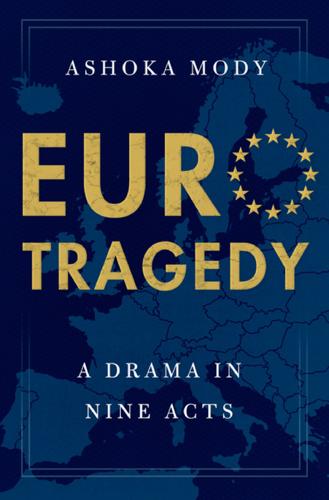
EuroTragedy: A Drama in Nine Acts
by
Ashoka Mody
Published 7 May 2018
acknowledgments xv L IST O F ABBR EV IATIONS ABCP AfD AIB AIG ARRA BBC BDI BIS BNP BOE BOJ BRRD CAP CDU CSU D-mark EBA EC ECB ECJ ECSC ECU EDC EEC Asset-backed commercial paper Alternative für Deutschland Allied Irish Bank American International Group American Recovery and Reinvestment Act British Broadcasting Corporation Bundesverband der Deutschen Industrie (Federation of German Industries) Bank for International Settlements BNP Paribas Bank of England Bank of Japan Bank Recovery and Resolution Directive Common Agricultural Policy Christian Democratic Union Christian Social Union Deutschmark European Banking Authority European Community (see also EEC) European Central Bank European Court of Justice European Coal and Steel Community European Currency Unit European Defense Community European Economic Community EFSF EFSM ELA EMS EMU EONIA ERM ESM ESRI EU EURIBOR FDIC FDP FOMC GDP GFSR IKB IMF KfW LIBOR LREM LTCM LTROs MEP MPS NATO NPL OECD OIS OMTs PASOK PISA QE R&D S&P SEA SGP SMP SPD xviii l i s t European Financial Stability Facility European Financial Stability Mechanism Emergency Liquidity Arrangement European Monetary System European Monetary Union Euro Overnight Index Average Exchange Rate Mechanism European Stability Mechanism Economic and Social Research Institute European Union European Interbank Offered Rate Federal Deposit Insurance Corporation Free Democratic Party Federal Open Market Committee Gross Domestic Product Global Financial Stability Report IKB Deutsche Industriebank AG International Monetary Fund Kreditanstalt für Wiederaufbau London Interbank Offered Rate La République En Marche Long-Term Capital Management Longer-Term Refinancing Operations Member of the European Parliament Monte dei Paschi di Siena North Atlantic Treaty Organization Non-Performing Loan Organisation for Economic Co-operation and Development Overnight Index Swap Outright Monetary Transactions Panhellenic Socialist Movement Programme for International Student Assessment Quantitative easing Research and development Standard and Poor’s Single European Act Stability and Growth Pact Securities Markets Programme Social Democratic Party of abbreviations SRB SRM SSM TAF TARP UKIP VIX WAMU WEO Single Resolution Board Single Resolution Mechanism Single Supervisory Mechanism Term Auction Facility Troubled Asset Relief Program UK Independence Party Measure of expected volatility in the US stock market Washington Mutual “World Economic Outlook” list of abbreviations xix Introduction Europe Ends Up Someplace Else T he euro—the single currency shared by nineteen European nations— is unique in human history.
…
BNP Paribas causes a jump in interbank stress. (Term premium on three-month interbank lending) Notes: One hundred basis points equal 1 percentage point. A higher premium indicates a perception of higher default risk. The term premium for US dollars is the difference between the three-month London Interbank Offered Rate (LIBOR) and the Overnight Indexed Swap (OIS). The difference between the three-month Euro Interbank Offered Rate (EURIBOR) and the Euro Overnight Index Average (EONIA) measures the term premium when borrowing in euros. Source: Bloomberg 196 e u r o t r a g e d y €94.8 billion, on average, almost €2 billion each.15 Banks needed cash to repay their lenders who were unwilling to roll over their loans.
…
For the troubled history of Landesbanken, see Fischer, Hainz, Rocholl, and Steffen 2011; Economist 2015. http://www.bnpparibas.com/en/news/press-release/bnp-paribas-investment- partners-temporaly-suspends-calculation-net-asset-value-fo. See also Bank for International Settlements 2008b, 95. Armantier, Krieger, and McAndrews 2008, 2. Bernanke 2015, 139–140. The premium is measured as the LIBOR-OIS spread. LIBOR (the London Interbank Offered Rate) indicates the rate that a large bank pays to borrow from another large bank. The OIS (Overnight Indexed Swap) contract entitles the borrowing bank to receive payments at close to the overnight federal funds rate, the policy rate set by the Fed. Because an OIS is a hedging contract, with no actual lending, it carries no default risk.
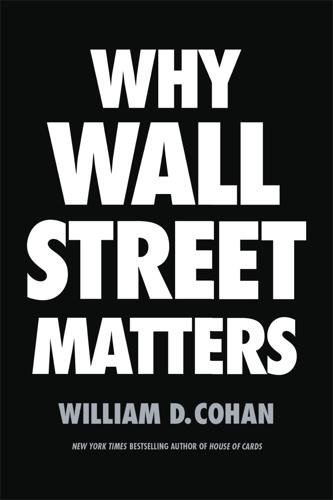
Why Wall Street Matters
by
William D. Cohan
Published 27 Feb 2017
Or that as a result of regulatory requirements, the bond market is now shockingly illiquid, costing millions of Americans with 401(k)s and pensions money every time they, or their fiduciaries, try to buy or sell a bond? Or that new regulations in the money-market industry have more than tripled the cost of the three-month London Interbank Offered Rate, or LIBOR, the short-term money rate that banks charge each other and on which most loans are based? Have you tried to get a loan or a mortgage lately? It’s not very easy, even for Ben Bernanke, the architect of the Fed’s “zero-interest-rate policy” that has kept interest rates as low as they have ever been in our nation’s history.
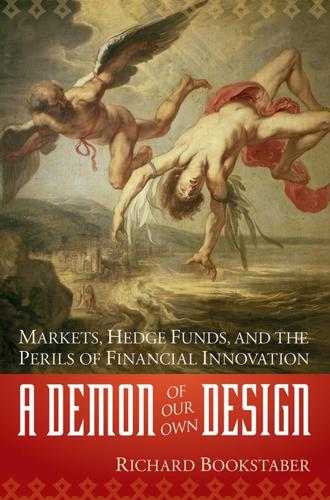
A Demon of Our Own Design: Markets, Hedge Funds, and the Perils of Financial Innovation
by
Richard Bookstaber
Published 5 Apr 2007
One reason is the proliferation of ever more creative mortgage structures, structures that appear to be reasonably designed just because the interest rates have cooperated. A second reason is that the long period with rates at a relatively constant level means there is a concentration of gamma exposure. The nonlinearities that will accompany a rise in rates will hit a substantial proportion of the existing mortgage supply. 3. LIBOR, the London Interbank Offered Rate, is the interest rate that the banks charge each other for short-term loans and serves as the benchmark for determining the rate of short-term loans to corporations. 263 ccc_demon_261-270_notes.qxd 2/13/07 1:47 PM Page 264 NOTES CHAPTER 6 Long-Term Capital Management Rides the Leverage Cycle to Hell 1.
…
Senate hearings, 129–130 Epstein, Sheldon, 46–47, 49 index-amortizing swap, 116 Equity trading profitability, 71–75 proprietary reliance, 73–74 European Monetary System currency crisis (1992), 3 Event risk, 248–249 Factor exposures, 202 Fair value basis, 29 Federal Deposit Insurance Corporation (FDIC), 113 Federal Reserve policy shifts, 85 rate hike, impact, 53 Feduniak, Bob, 42, 52 Feuerstein, Donald, 196 Financial instability, aspects, 3–4 Financial markets, 224–225 Financial risk, 256–257 Fisher, Andy, 59, 80 Fixed income focus, 251–252 Fixed income research (FIR), 8–9, 43–44 Flood, Gene, 190 Franklin, Mark, 97 Free-floating anxiety, 235 Frictionless markets, 209 FrontPoint Partners, 204, 205 FTSE Index, 117 Fundamental data, 166 Furu, example, 233–235 Futures market, 17–19 Futures shock (1635), 175–177 Galbraith, John Kenneth, 16 Gamma, problems, 24–25 General Electric (GE), 41–42 Generally accepted accounting principles (GAAP), 135 Geographic regions, classification, 246 Global Crossing, restatements/liability, 135 Godel, Kurt, 222–224, 227–228 Gold, Jeremy, 8–9 Goldman Sachs acquisition, 75 public offering, delay, 109 Goldstein, Ramy, 116–118 Gracie family, 258–259 Gracie, Gastao, 258 Greenhill, Bob, 73 Greenmail, taxation, 13–14 Gross Domestic Product (GDP), 3–4 Growth bias, 202 Grubman, Jack, 128–130, 134 MCI/BT involvement, 69–71 nursery school admissions, 131–132 Gutfreund, John, 62–63, 105, 195–197 resignation, 199 Haghani, Victor, 102–104, 110, 112 Hall, Andy, 63–67 Hawkins, Greg, 51 Hedgefundedness, 243–244 Hedge funds, 165, 207, 214–215, 243 classification, problem, 245 classification, 245–246 control, 252–253 defining, 245 economic service, 219 existence, question, 244 regulation, 247–250 Heisenberg, Werner, 223–228 Hilibrand, Larry, 79, 110, 113 Human error, 149 272 bindex.qxd 7/13/07 2:44 PM Page 273 INDEX Kaplan, Joel, 44–45 Kaplanis, Costas, 63, 79 Kidder, Peabody, 39–42 Knowledge, limits, 221–230 Krasker, Bill, 86 Liquidity basics, 213–220 complexity, relationship, 145 demand, 26, 191 hedge fund classification, 246 history, 217–218 impact, 212–213 needs, 183 providers, 213–215 role, 215–220 squeeze, prospects, 105 suppliers, 22, 192–193 supply, price elasticity, 94–95 transparency, 226 Liquidity crisis cycle, 93–94 prevention, 94–95 providing, hedge funds (impact), 214–215 Long-range forecasting, 228 London Exchange, Rothschild visit, 90 London Interbank Offered Rate (LIBOR) government rates, parity, 57 higher-yielding LIBOR bond, 57 LIBOR-denominated debt, 56 Long-dated call options, 57 Long-Distance Discount Service (LDDS), acquisitions, 70 Long/short equity hedge funds, 200–205 Long-Term Capital Management (LTCM) capital reserves, assumption, 106–108 collapse, 93 decision point, 110 disaster, 57, 60, 92–93, 100, 145 hedge fund debacle/crisis, 1–3 leverage cycle, 97 liquidity risk, 107–108 losses, 108–111 management, initiation, 195–200 market price positions, feedback, 112 market risks, modeling/monitoring, 111–112 problems, public knowledge, 104–105 repurchase agreement, problem, 104 risk arbitrage position, 107 risk burden, 108 Long-term rates, short-term rates (interaction), 47 Loops, usage/impact, 45 Loosely coupled system, 157 Lorenz, Edward, 227–229 deterministic systems, 229–230 Langsam, Joe, 232, 236–237 Laplace, Pierre-Simon, 223, 225 Lead-lag strategy, 193–194 Leeson, Nick (impact), 38–39 Leibowitz, Marty, 8, 51, 53 Leland, Hayne, 10 Leverage, 244 amount, reduction, 260 crisis, occurrence, 111–113 regulations, imposition, 248 Levin, Carl, 130 Lewis, Michael, 52 Liquidation ability, 93 Mack, John, 28, 29, 35, 37 trader emulation, 35 Macro data, usage, 166–167 Macro strategies, 202 Maeda, Mitsuyo, 258 Margin-induced sale, 94 Market aberrations, opportunities, 122 breakdown, reaction, 146 crises, worsening (aspects), 3–4 cycle, basis, 169 decline, respite, 23–24 exponential growth, 17 Illiquidity, cost, 217–218 Index-amortizing swap, 46–48 Information flow, process, 210 implications, derivation, 170–171 overload, 220–230 Information-based trading, 166 Information Technology (IT), support function, 185–186 Initial public offerings (IPOs), 72 creation, 173–174 issuance, amount, 178–179 Innovation, positive effects, 255–256 INSEAD, 66 Intangibles, 137–138 Interactive complexity, 154–157 Interest only (IO), 55 Interest rate, 84–85, 87 International Monetary Fund (IMF) package, 103 Internet bubble, 179–181 businesses, virtual nature, 172 stocks, run-up (1998), 178 Interrelated markets, complexity (by-product), 143 Intraday price movement, 183 Inventory service, 71 Investment buyers, scare, 22 coverage, 249–250 investor behavior, 203–204 strategy, 247 type, classification, 246 Investors, irrational behavior, 203–204 Irrational markets, impact, 180–181 Iverson, Keith, 48 Iverson, Ken Japan, liquidity, 39 Japanese swap spread strategy/profit, 100 Jenkinson, Robert Banks, 89–90 Jett, Joe, 39–41 Jiu Jitsu Academy, 258 Jones, Paul Tudor, 165 Junk bonds, 71 273 bindex.qxd 7/13/07 2:44 PM Page 274 INDEX Market (Continued) failures, safeguards, 239–240 illiquidity, portfolio insurance by-product, 14 innovation, 11–12 makers, problem, 191–192 regulation, 146–154 risk, paradox, 1 volatility, 5, 25 vulnerability, 224–225 Market bubbles, 168–174 Market-to-book ratio, 138 Marx, Karl, 250 Marxist backward market, exploitation, 250 Material adverse change clause, 65 Maughan, Deryck, 59, 73–77 MCI Communications British Telecom (BT), merger/trade, 63–64, 67, 128 conclusion, 74 EPS, decline, 70 renegotiation, willingness, 67–68 stock, decline, 64 Mean-reversion analysis, 190 Mechanical failure, 149 Mercury Asset Management, 196 Mergers and acquisitions (M&A) advice/underwriting, 33 Meriwether, John, 52, 100, 197 resignation, 199 Merrill Lynch, 42 Merton, Robert, 9, 207 Metallgesellschaft Refining and Marketing (MGRM), oil price risk (offloading), 37–38 Mexican Brady bond/Eurobond spread, 107 Mexican peso crisis (1994), 3 Miller, Heidi, 78–80, 140 Modigliani, Franco, 208–209 Money flows, 167 Morgan Stanley APL, usage, 44–45 Dean Witter, merger, 75 IT department, 43 portfolio insurance, 10–12 risk arbitrage department, 15 risk manager, 42 Morgan Stanley Asset Management (MSAM), 11 Morgan Stanley Investment Management (MSIM), 205 Mortgage-backed securities (MBSs), 54–56, 213 Mortgage market, 35, 54–55, 102 Mortgages, opportunities, 35 Mozer, Paul, 195–198 Munger, Charlie, 62, 99, 101, 197–198 Myojin, Sugar, 59, 63, 78–79 Natural catastrophe, 257 New York Stock Exchange (NYSE) specialists, impact, 20–21 stock sale, 13 Noncash exchanges, 40 Norman Conquest, 215 Norris, Floyd (editorial), 91–92 O’Brien, John, 10 One-off events, 249 Opportunistic strategies birth/death cycle, 252 history, 251 Optimal behavior, mathematical framework, 237–240 Options, stripping, 117 Option theory, 24 Orange County, bankruptcy, 38 Organizational dysfunction, 134–136 Pacioli, Luca, 136–137 Pairwise stock trades, 187 Palmedo, Peter, 17, 28–29 Paloma Partners Management Company, 42 Pandit, Vikram, 12 Parets, Andy, 63–69 Parkhurst, Charlie, 85 Partnership model, 37 Perfect market paradigm, 209–210 imperfections, 210–212 liquidity, degree, 212–213 Phibro, Salomon acquisition, 66 Physical processes, modeling, 229 Platt, Bob, 7–8 Portfolio insurance, 10–15 market crash, 22 Portfolio managers, loss (risk), 204–205 Position disclosure, problems, 225 transparency, increase (financial market regulator advocacy), 225 Preference shares, illiquidity, 115 Price convergence, 121–122 Primal risk, 235–237 knowledge, limits, 230–232 Primogeniture, 215–220 implications, 216–217 objective, impact, 216 Principal only (PO), 54–55 Principia Mathematica (Russell), 221–223 Procter & Gamble, losses, 38 Program trading, absence, 24–25 Protest bids, 195–196 Quants, 8–9, 82–84 Quantum Fund, 180–181 Quattrone, Frank, 72 Rational man approach, 231 Real assets, valuation, 137–138 Real-world risk, 237–238 Reed, John, 127 Relative strength index (RSI), 190 Relative value trades, 101–102 Rhoades, Loeb, 125 RISC workstations, 191 Risk control, 220 knowledge, absence, 231–232 management, 36 nature, variation, 249 reduction, 185 progress/refinement, impact, 4 tactical usage, 200 274 bindex.qxd 7/13/07 2:44 PM Page 275 INDEX Risk arbitrage, 15–16, 65, 71 Risk Architecture, 126 Risk-controlled relative value trading, 102–103 Risk-management structure, 238 Robertson, Julian, 165, 179–182 Rosenbluth, Jeff, 59, 83 Rosenfeld, Eric, 51, 79, 86 Rothschild, Nathan, 88–89 trading strategy, 90–93 Waterloo, relationship, 89–90 Rubinstein, Mark, 10 Russell, Bertrand, 221–223 Russia default, 103–104 Russian short-term bonds, 103 Salomon Brothers arbitrage units, 73–74, 80–82 closure, 88–89 tracking error, problems, 86–89 competition, 60–61 fixed income trading floor, 82 Japanese unit, 56–62 July Fourth massacre, 86–89 mortgage position, loss, 55–56 organization, trader involvement, 73 risk arbitrage group, mortgage position, 80–81 Travelers purchase, 77 Salomon North, 81, 100, 199 Salomon Smith Barney convergence trades, 120–124 proprietary trading, reduction, 92 risk management committee, 98–101 risk measuring/monitoring, 126 Travelers, interaction, 125 U.S. fixed income arbitrage group, 91–93 U.S.
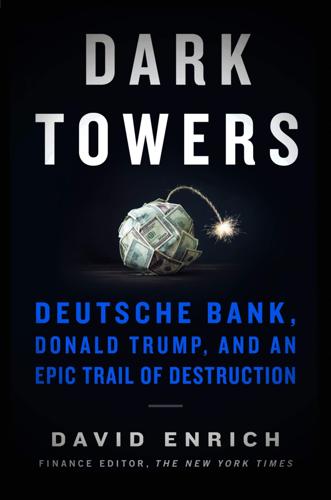
Dark Towers: Deutsche Bank, Donald Trump, and an Epic Trail of Destruction
by
David Enrich
Published 18 Feb 2020
Internal safeguards, such as a tough compliance squad or rigorous know-your-customer rules, were strangely absent. Just as Mark Ferron had suspected, Christian Bittar, the star trader and one of Anshu’s anointed, had been cheating. The success or failure of many of his trades hinged on tiny movements in something known as Libor (an acronym for the London interbank offered rate). Each day the world’s biggest banks estimated how much it would cost them to borrow money from other banks. Their estimates were averaged together, and the result was Libor. Libor served as the basis for trillions of dollars of interest-rate derivatives, which were the primary instruments that Bittar was using to make his market bets.
…
., 343–44 Labor unions, 78, 234, 264–65 Lagarde, Christine, 179, 299 LaGuardia Airport, 278 “Last Day of Our Acquaintance, The” (song), 90, 229 Las Vegas, 32, 282–83 Latvian money laundering, 110–11, 118, 332 Lehman Brothers, 4, 63, 66 Lemon, Don, 278 Levin, Carl, 153–54, 238–39 Levinson, Charles, 256–57 Lewis, Michael, 138n Libor (London Interbank Offered Rate), 151–52 Broeksmit and, 288–94 criminal investigations, 195–96, 261–62 criminal settlement, 261–62 Gambino and, 251 Menke’s letter, 263–64 Lincoln, Abraham, 14 Lippmann, Greg, 138–40, 138n Little Dix Bay Resort, 207–208 Loans to Donald Trump. See Trump, Donald, loans Loat, Martin, 58–59, 62, 101, 102, 207 Lojevsky, Igor, 197 London Ambulance Service, 222 London Wall, 86 Los Alamos National Laboratory, 126 Los Angeles Times, 41 Lotus Notes, 188 Lufthansa, 23 McFadden, Tammy, 309–13, 342, 358 Machu Picchu, 345 Maggiore, Lake, 81 Majd, Saman, 124, 204 Make America Great Again (MAGA), 269 Manafort, Paul, 343 Mannesmann, 120 Manufacturers Hanover, 74 Mar-a-Lago, 115, 118, 175 Marks, Tom, 32 Meltzer, Larry, 279–81, 282, 300 Menke, Frauke, 263–65 Mercer, Rebekah, 325 Mercer, Robert, 152–53, 238, 325 Merkel, Angela, 120–21, 163, 179, 306 Merrill Lynch Broeksmit at, 33–41, 48–49, 123, 126–27 derivatives business, 29–30, 32–33, 34–35, 38–39, 40–41 Misra at, 126–27 Mitchell at, 28–30, 33–40, 44–45 O’Neal at, 49, 86 Orange County fiasco, 40–41, 49, 295 Trump loan default, 113–14 Microsoft Excel, 160–61, 188, 326 Miles, Liz, 31–32 Mirror trades, 198–99, 232, 344, 357, 358 Misra, Rajeev background of, 126 at Merrill Lynch, 126–27 Misra, Rajeev, at Deutsche Bank, 127–28 financial crisis and, 134–35 Jain’s resignation, 266 resignation, 135 risk-taking, 127–28, 127n, 131, 138 Mission: Impossible (movie), 88 Mitchell, Dara, 78, 308, 309 Mitchell, Edson, 27–30 airplane crash of, 88–90, 122 background of, 27–28 Estelle and, 60–62, 83, 84–85, 88 at Merrill Lynch, 28–30, 33–40, 44–45 personality of, 36–37 Mitchell, Edson, at Deutsche Bank, 51–62, 79–86, 267 Bankers Trust acquisition, 63–67, 68 Christmas parties, 87–88 Dresdner Bank deal, 82–83 hiring, 8, 44–46 management style, 55–57, 125, 157 recruitment efforts, 46–50, 54–56, 72–73 Mitchell, Ellen, 60, 189–90 Mitchell, Scott, 60, 135, 188–90 Mitchell, Suzan, 28, 29, 50, 55, 59–60 Mitchell, William, 287–89 Mnuchin, Steven, 70–71, 72, 308, 309, 320, 334, 343 Moby (musician), 355 Monte dei Paschi di Siena.

The Ascent of Money: A Financial History of the World
by
Niall Ferguson
Published 13 Nov 2007
But the small print of subprime contracts implied major gains for the lender. One particularly egregious subprime loan in Detroit carried an interest rate of 9.75 per cent for the first two years, but after that a margin of 9.125 percentage points over the benchmark short-term rate at which banks lend each other money: conventionally the London interbank offered rate (Libor). Even before the subprime crisis struck, that already stood above 5 per cent, implying a huge upward leap in interest payments in the third year of the loan. Subprime lending hit Detroit like an avalanche of Monopoly money. The city was bombarded with radio, television, direct-mail advertisements and armies of agents and brokers, all offering what sounded like attractive deals.
…
be Technically, according to the US Securities and Exchange Commission, a short sale is ‘any sale of a security which the seller does not own or any sale which is consummated by the delivery of a security borrowed by, or for the account of, the seller’. bf A swap is a kind of derivative: a contractual arrangement in which one party agrees to pay another a fixed interest rate, in exchange for a floating rate (usually the London interbank offered rate, or Libor), applied to a notional amount. bg For example, the spread over US Treasuries of the JP Morgan emerging market bond index rose from 3.3 per cent in October 1997, to 6.6 per cent in July 1998, to 17.05 per cent on 10 September 1998. bh It is surely no coincidence that it was reports of losses at hedge funds run by Bear Stearns and by Goldman Sachs that signalled the onset of the credit crunch in the summer of 2007.
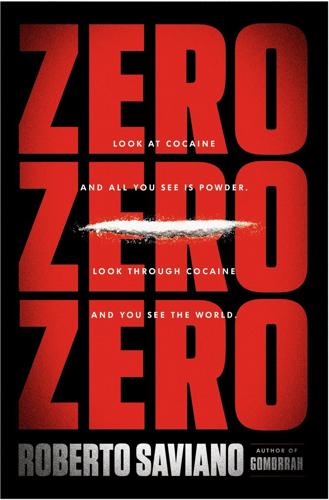
ZeroZeroZero
by
Roberto Saviano
Published 4 Apr 2013
And yet in July 2012 the Royal Bank of Scotland suddenly broke the contract they had entered into with him. No explanation. Had they learned of Martin’s accusations against Wachovia? And just a few days later the LIBOR scandal broke, revealing that some leading banks, including the Royal Bank of Scotland, had for years been manipulating the London Interbank Offered Rate, the European reference rate for interbank loans. Martin refused to give up; he sued them. He lost. The British judge agreed with the bank that an employer-employee relationship had not yet been established, and therefore Woods had no right to demand redress to an employment tribunal.
…
., 61, 96–97 Las Dos Erres, Guatemala, 84 La Spezia, Italy, 302 Las Ventanas (the Windows), 94 Latin America, 15, 34, 37, 52, 74, 80–91, 133–35, 157, 160, 187, 210, 230–32, 254, 283–84, 295, 306, 309, 322, 377–78 see also specific countries Laura (cocaine addict), 117 Lavormarmi, 175, 177 Lazcano Lazcano, Heriberto (El Lazca), 97–98 Lebanese Canadian Bank, 254–55 Lehman Brothers, 247–48 Léopold Sédar Senghor airport, 320–21 Levinson, Robert, 267 Libera, 204, 208–9 Liberia, 321 Lidl Italia supermarkets, 197 lidocaine, 119 Lima, Peru, 331 Limbadi quarries, 172 Linnet (yacht), 299–300 Lisbon, 317–25 Little Odessa, 262, 268, 274, 279, 289 “Little One” (Mara member), 352 Livorno, Italy, 198, 291, 327, 331, 346–47 llipta coke, 112–13 Loaiza Ceballos, Henry (The Scorpion), 130 loan sharks, 173, 181–85, 201 Locatelli, Pasquale Claudio (Mario; Diabolik), 211–13, 215, 216–27, 236–37, 238, 305 Locri, Italy, 170–71 Lombardy, Italy, 179, 193, 212, 216 London Interbank Offered Rate (LIBOR) scandal, 249 LOPAV S.p.A., 237 López, Griselda, 53 Los Aboytes, 62 Los Angeles, 145, 350, 352 Los Cadetes de Linares, 49 Los Halcones (the Falcons), 94 Los Leopardos (the Leopards), 94 Los Mañosos (the Clever Ones), 94 Los Mochis, Mexico, 102 Los Negros, 42–43 Los Niños Zetas, 96–97 Los Pepes (Persequidos por Pablo Escobar) (People Persecuted by Pablo Escobar), 140, 142 Los Zetas, 43, 48, 50, 64, 65–66, 69, 92–103, 185, 186, 252, 304, 368–70 Lo Zio (Uncle) (drug trafficker), 205 Lucà, Nicola, 193 Lucenti, Luigi (‘o Cinese; the Chinese), 340 Luciano, Charles (Lucky), 259 Macchia della Quartarella woods, 346 Macrì, Antonio (U Zi; Uncle), 214 Madoff, Bernard (Bernie), 246–47 Madrid, 222, 236, 237, 238, 239, 306, 308 Maersk Sealand, 179, 292 Maesano brothers, 330 Magnex 2000, 272 Málaga, Spain, 234 Malherbe de León, Óscar, 59 Mali, 318–19, 321 Mamadu (drug mule), 315–25 Manaus, Brazil, 180 Mancuso, Diego, 175 Mancuso, Vincenzo, 172 Mancuso family, 172–80, 183, 199 Mancuso Dereix, Gianluigi, 137, 143, 164 Mancuso D’Angiolella, Salvatore (don Salvador), 136, 137 Mancuso Gómez, Salvatore (El Mono; The Monkey), 133, 134, 136–40, 152, 153–54, 157, 160, 162–66, 172, 174–75, 187, 189, 200 Manzanillo, Mexico, 364–65 Mapello, Italy, 237 Mapu Lautaro, 350 Mara 13 (Mara Salvatrucha), 351 Mara 18, 351, 353, 355 Marando, Pasquale, 183, 184, 191, 215, 229 Marando, Rosario, 230 maras (El Salvadoran gangs), 304, 348–56 Mara Salvatrucha, 351–52 marble quarries, 172, 177–78, 180 marijuana, 20–24, 34, 38, 51, 65, 113, 194, 198, 282–83 Mariposa (yacht), 299–300 Mariposa cocaine, 118 Marmo Imeffe, 177, 179–80 Maronna ‘ra Muntagna (Madonna of the Mountain), 176 Marseilles, 215, 216 Más que nada (sailboat), 300 Massa Lombarda, Italy, 197 Massolino, Guido, 299 Master Endeavour (ship), 318 Matamoros, (Mexico) 30, 57, 59, 60, 91–92, 97, 100 Mata Zetas (Cártel de Jalisco Nueva Generación), 66–68 Matteotti, Giacomo, 346 Mauritania, 322 Mazara del Vallo, Italy, 230 Medellín cartel, 20–21, 33, 127–28, 131, 138, 139, 144, 145, 147, 149–50, 158, 160, 176, 189, 223, 256, 295, 311, 357–62 Mejía, Carlos Alberto (Pipe), 222–23 Mejía, Daniel (Danielito), 160, 161–62, 248 Melara, José Alejandro, 353 Melato, Alessandro, 297 Melato, Andrea, 297–98 Melato, Antonio, 298 “Memory of Silence,” 84 methamphetamines, 51, 63, 65 Mexico: armed forces of, 23–24, 44–45, 49, 60, 62, 69–70, 92 bribery and corruption in, 27, 31, 41, 44–45, 100 cartels of, 210, 243–46, 252–53, 255, 292–93, 302–7, 364–70; see also specific cartels cocaine trafficking in, 37–39, 126, 243–46 292–293, 306–7 Colombian operations in, 127–28, 129, 131, 152, 157, 158, 186 currency exchanges in, 243–46 drug enforcement in, 19–32, 64–65, 68, 69–71, 158 government of, 45, 49, 50–55, 64–65, 69–71, 92, 95, 99, 257 Italian operations in, 186, 190–91 legal system of, 70, 257 money laundering in, 252–57 narco-state of, 69–71, 131, 132 opium production of, 16–20 peasants in, 16–20, 23, 40, 58, 75–76 police force of, 25, 27, 31, 42, 48, 50, 59, 100, 293 U.S. border with, 20–22, 39–40, 44, 53, 57, 60, 61, 69–70, 102, 289–90, 328 U.S. relations with, 28, 31, 41, 58, 158, 366 see also specific cities and states Meza López, Santiago (El Pozolero), 367 M5 construction company, 196 MI-8 Soviet helicopters, 281–82 Miami, 148–51, 157–60, 224–25, 245, 273, 279, 360–61, 362 Miceli, Salvatore, 214, 220, 229, 230, 232, 233, 234 Michajlov, Sergej (Michas), 263, 268, 276–77 Michajlova, Ljudmila, 265–77 Michoacán, Mexico, 28, 62, 63, 64–66, 70 Michoacán Family, 61–66, 68, 95, 152 Middle East, 254–55 Mike (sniffer dog), 344 Milan, 179, 203, 205, 213, 215, 230, 298, 335–36 Milan–Malpensa Airport, 179 Millennium cartel, 67 Milošević, Slobodan, 257 Mirage II (ship), 231–32, 292 Miss Colombia pageant, 134–35, 150 “mobbing,” 244 Moby-Dick (Melville), 289 Mogilevic, Semën Judkovic (Brainy Don; Don Seva; Pàpa), 251, 259–78, 284–87 Molè family, 335 “Money Laundering: Latest Developments and Regulations” (Edwards), 250–52 monopolies, 127, 217, 291 Montalto, Tonino, 229 Montería, Colombia, 136–37, 139, 143, 165, 174 Monti, Maria ( undercover agent), 224–26 Montoya, Diego (the Cyclist), 295, 364 Morabito, Saverio, 213, 216 Morelia, Mexico, 63, 65 Moreno (Mara member), 352 Moreno González, Nazario (El Chayo; El Más Loco), 61–62 morphine, 18–19 Moscow, 260, 261, 262–63, 266, 267–68, 271, 276, 285 “mother ships,” 291–92, 299 motorboats, 296–97, 299 Movement for Peace with Justice and Dignity, 71 MP5 submachine guns, 93 Muerte a Secuestradores (Death to Kidnappers) (MAS), 139, 140, 142 murders, 40–41, 45–47, 56, 58, 59–60, 65–66, 78–90, 91, 95–100 Mussolini, Benito, 346 Muzak (ship), 231 Naftogaz Ukrainy, 285–86 Namibia, 234 Naples, 231, 237, 281, 291, 301, 328, 329, 337–47 narco-banners, 95 narcobloqueo (narco roadblock), 292–93 narco dollars, 205–6, 222–23 Narcotics Traffickers Rehabilitation Program, 159 NASDAQ, 132 National Crime Squad, British, 243 National Criminal Intelligence Service, British, 277 National Institute to Combat Drugs, Mexican, 45 Na Waie, Batista Tagme, 316 Nepomuceno Guerra, Juan, 59 Netherlands, 234–36, 291, 308, 312, 332 neurotransmitters, 35–36, 120 New York, N.Y., 5–15, 129, 185, 186, 262, 268, 273–74, 276, 359–60 New York Stock Exchange, 73 New Zealand, 195 Nicotera, Italy, 172, 199 Nieuwe Revu, 235 Nigeria, 322, 323, 334 Nigoline di Corte Franca, Italy, 219 No. 48 (‘O muorto che parla; dead man talking), 338 No. 62 (‘o muort’ acciso; death by murder), 338 Nollino, Andrea, 339, 340 norepinephrine, 36 Norte del Valle cartel, 131, 135, 152, 159, 160, 295, 302, 364 Northern Ireland, 154–55 Nuevo Laredo, Mexico, 42, 43, 98, 99–100, 328 obšcak (criminal fund), 265 Ochoa Restrepo, Fabio, 139, 158 Oct Challenger (ship), 298–99 Odyssey, The (Homer), 298 Office of Foreign Assets Control blacklist, 185–86 Office of the Attorney General, U.S., 38–39 Oficina de Envigado (Office of Envigado), 161–62, 165 Olive Tree Party, 170 omertà code, 340 Onorata Società (Honored Society), 170, 171, 175, 176, 187, 195 Onwumere, Peter Christopher, 323 Operación Leyenda (Operation Legend), 31–33 Operation Crimine-Infinito, 168, 193 Operation Dark Waters, 306 Operation Decollo (Take-Off), 178–81, 189, 192–94, 196, 197, 198, 199, 200 Operation Decollo bis, 192 Operation Decollo Money, 192–93, 198 Operation Decollo ter, 192, 197, 199 Operation Dinero, 222–26 Operation Magna Charta, 298 Operation Meta, 330 Operation Millennium, 158 Operation Overloading, 202 Operation Reckoning, 185–86, 191 Operation Sword, 277–78 Operazione Solare, 185–86, 191 opium, 16–21, 25, 28, 31, 34, 38–40, 62, 282–83 Opnor (ship), 321 Orange Revolution, 285 Orechovskaja group, 263 Oseguera Ramos, Nemesio (El Mencho), 67 Oslo Accords, 154–55 Osorio Chong, Miguel Ángel, 54, 70 Ospedaletto, Italy, 302 Overdose (sailboat), 300 Paderno Dugnano, Italy, 168, 193 Padua, Italy, 329 Palace of the Thousand and One Nights, 45 Palermo, Caterina, 220 Palermo, Giuseppe, 235 Palermo maxi-trial, 169 Palestine, 143 Palo Borracho, 329 Palo della Banda dell’Ortica, 212 Palombini Bar, 225 Panama, 150, 231, 319 Pannunzi, Alessandro, 218, 229, 230, 238 Pannunzi, Roberto (Bebè), 211, 213–22, 226, 227–36, 238–40, 305 Pannunzi, Simona, 218 Papp, Katalin, 269 Paraguay, 334 Paramaribo, Suriname, 335 paranoia, 36, 123, 374 Paris, France, 119, 314 Paris, Natalia, 133–36, 137, 140, 143–49, 151, 157–60 Parma, Italy, 238 Parrita (paramilitary), 138–39 Partido Revolucionario Institucional (PRI) (Institutional Revolutionary Party), 100 Paso Fino horses, 223 Pastrana, Andrés, 154–57, 158 PATRIOT Act (2001), 242, 254 Patrullas de Autodefensa Civil, 84 Pay de Limón (sniffer dog), 345 Pearl cocaine, 117–18 Pelle, Antonio (‘Ntoni Gambazza) , 202 Peña Nieto, Enrique, 54, 68, 70 Peru, 232 phencyclidine, 113 Picasso, Pablo, 223 Pictet Cie, 255–57 piedra muñeca marble, 177, 180 Ping ideogram, 304 Pinochet, Augusto, 350 Piraeus, Greece, 233 Piromalli, Francesco and Giuseppe (Roly-poly brothers), 230–31 Piromalli family, 172, 305 Pistoleros, 360 Pistone, Joe, 80 Pizza Connection, 255 Pizzata, Bruno, 202–3, 205 Plan Colombia, 155–57 plastic surgery, 45–46 plata o plomo (money or lead), 127, 130 Platì, Italy, 193, 194, 215, 216, 217, 218, 229, 230 Pocho (sniffer dog), 343–44 Poh Lin (ship), 332 Policía Federal Ministerial (PFM), Mexican, 101 Polsi, San Luca, Italy, 168, 186–87, 194 Ponte San Pietro, Italy, 237 Ponzi schemes, 273–74 Poptún training camp, 86–87 Porky’s strip club, 279–80 Portugal, 297, 317–25, 333 Posada, Rosa María, 154 Posadas Ocampo, Juan Jesús, 40–41 potassium carbonate, 75 Poveda, Christian, 348–56 Prague, 275–76, 277 Presidential Security Service, Russian, 269 Prestieri, Maurizio, 226–27 Progreso, Mexico, 98, 329 Project Coronado, 64–65 prostitution, 94, 135, 269–70 Puente Grande prison, 41 Puma, Commander (AFI commander), 101 Pupone (Big Baby) (real estate agent), 202 Putin, Vladimir, 285–86 racehorses, 223, 252–53 Ragal (sniffer dog), 345 Rambo (paramilitary), 188 Ramírez Treviño, Mario Armando (El Pelón; X20), 61 Ramiro (drug dealer), 184, 190 Reagan, Ronald, 29 Red Ribbon Week, 33–34 Resortito (clown), 95–96 Reta, Rosalío, 96–97 Revelation, Book of, 375 Rex (mule dog), 346 Reyes, Fernando, 47 Reynosa, Mexico, 60, 101 RHM Trust Bank, 222–23 Riina, Salvatore (Totò), 259 Rijeka, Croatia, 180 Rimini, Italy, 251 Rodríguez Orejuela brothers, 129, 142 Roizis, Griša (the Cannibal), 279–81 Romanò, Attilio, 339 Romano, Lino, 339, 340 Rome, 202, 215, 225, 227, 230, 232, 239–40, 300, 331 Romero Vázquez, Jesús Antonio, 100 Rosarno, Italy, 193, 202–3, 298 RosUkrEnergo, 285–87 Rotterdam, 291, 308, 332 Royal Air Maroc, 323–24 Royal Bank of Scotland, 249–50, 252 Rubens, Peter Paul, 223 Ruello, Nello, 204 Russia: arms trafficking in, 272, 273, 282, 283 arrests and imprisonment in, 260, 263, 275–76, 284–85 banking in, 270–71, 274 cocaine trafficking in, 279–82, 283, 287 drug addiction in, 282–83 economy of, 265–67, 270–71, 285–87 gas exports of, 285–87 mafia of, 251–52, 258–87, 289, 294 money laundering in, 251, 260, 268–69, 273, 276–78, 281, 283–84 prisons of, 260, 262, 265 prostitution in, 269–70 protection rackets in, 263–66 violence in, 263–68, 273, 285 see also Soviet Union sailing vessels, 296–300 St.
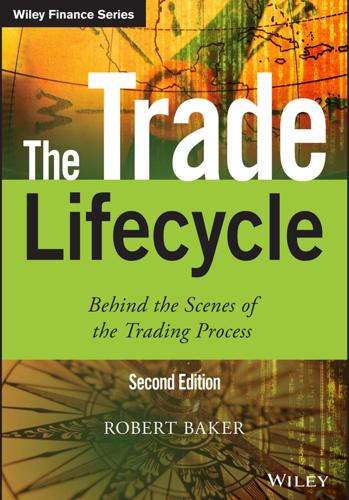
The Trade Lifecycle: Behind the Scenes of the Trading Process (The Wiley Finance Series)
by
Robert P. Baker
Published 4 Oct 2015
All interest rates derive from the base rate. This is the rate the central bank will charge for secured overnight lending. Banks will lend to each other at a slightly higher interest rate than this base rate. The average interest rates at which banks are currently lending is known as LIBOR (London Interbank Offer Rate). Banks will charge a yet higher rate to commercial organisations and others. This rate will depend on the credit worthiness of the organisation and how much profit the bank is trying to make. Let’s now examine the interest rate asset class. The asset class of interest rate products Here we describe typical products which are commonly grouped into the asset class of interest rates.
…
There are two such markets – the inter-bank market and the bond market for a very secure government bond. The inter-bank market is where large banks lend to each other with the assumption of repayment. Similarly, US Treasury bonds are considered fully guaranteed by the security of the United States government. An inter-bank market such as LIBOR (London interbank offer rate) has three types of market instrument. Money market duration. These are short-term loans from overnight to nine or 12 months in Futures These are standard contracts for forward exchanges of money, where the rates are fixed today. They range from about three months to two years. Swaps These are quoted for longer periods extending up to 30 years or beyond.
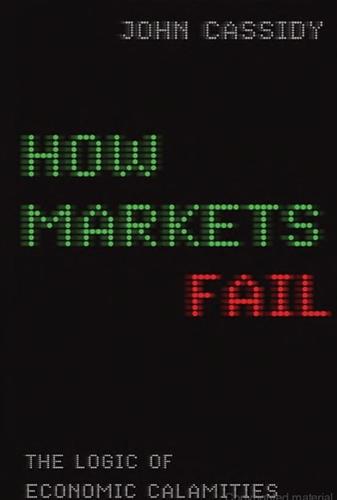
How Markets Fail: The Logic of Economic Calamities
by
John Cassidy
Published 10 Nov 2009
Many borrowers who had taken out 2/28 subprime loans in 2005 and 2006 hadn’t built up enough equity to cover the fees associated with a refinancing, and they were facing an extremely costly reset in their monthly payments. The turmoil in the credit markets was adding to this problem. With a 2/28 loan, typically the interest rate after two years is tied to the London interbank offered rate (LIBOR), which, since the summer of 2007, had climbed sharply. Rather than looking at a rise of $200 or $300 in their monthly payments, borrowers were facing hikes of $500, $600, or even more. By February 2008, roughly one in four subprime lenders was at least one month behind on his payment, according to the financial information firm Equifax.
…
Kuwait Kyoto Protocol Labor Statistics, Bureau of Labour Party, British Laffer, Arthur Lagrange, Joseph-Louis Lahart, Justin Laibson, David laissez-faire of Friedman general equilibrium theory and Greenspan and of Hayek middle ground between collectivism and of Mill Landlord’s Game, The Lange, Oskar Lausanne, University of “Law and Economics” school Lay, Kenneth Learned Hand, Billings Leeson, Nick Lehman Brothers collapse of compensation of CEO of subprime mortgage securities issued by Lehn, Kenneth Lenin, Vladimir Leontief, Wassily Lerner, Abba Levittown (New York) Lewis, Kenneth Liberal Party, British Liebniz, Gottfried Loan Performance Locke, John Loewenstein, George Lombard Street (Bagehot) London interbank offered rate (LIBO) London School of Economics (LSE) Long Beach Mortgage Company Long-Term Capital Management (LCTM) Lucas, Robert Lucent Technologies Luftwaffe Macaulay, Thomas Babington Mack, John J. Mackay, Charles Macroeconomic Advisers macroeconomics Macroeconomics (Miles and Scott) Mad Money (television program) Madoff, Bernie Magie, Lizzie Mail on Sunday, The Malkiel, Burton Mandelbrot, Benoit Manhattan Project Mankiw, Greg Mantel, Rolf Manual of Political Economy (Pareto) “Market for Lemons, The” (Akerlof) Market Signaling (Spence) Markowitz, Harry mark-to-market accounting Mark Twain Bank Marshall, Alfred Martin, William McChesney Marx, Karl Marxism Massachusetts Institute of Technology (MIT) Masters, Blythe Mathematical Colloquium Mathematical Physics (Edgeworth) Maximum Utility, Theorem of May, George S.
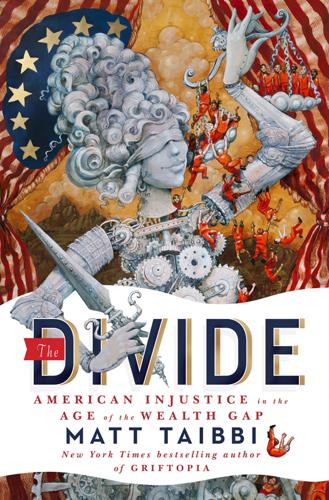
The Divide: American Injustice in the Age of the Wealth Gap
by
Matt Taibbi
Published 8 Apr 2014
Involving thousands of transactions, hundreds of individuals, and somewhere between nine and sixteen of the world’s biggest banks, the LIBOR affair at the heart of the UBS settlement was, numerically speaking, probably the biggest financial scandal ever. At the time, it was both the biggest antitrust case and the biggest price-fixing case ever to surface (some serious competitors have since reared their heads). By working together to rig global interest rates through their manipulation of the London Interbank Offered Rate—a projection of the rate at which banks charge one another to borrow and lend money—banks like UBS, Barclays, the Royal Bank of Scotland, and perhaps as many as six other companies (according to British regulators) impacted the price of hundreds of trillions of dollars of financial products, everything from mortgages to credit cards to municipal bonds to swaps and even currencies.
…
But in more than a few cases, you can draw a straight line from a cop being laid off or a union worker having his or her pension slashed back to the week of 2008 when a handful of Lehman executives took a payoff to mark down their own inventory. A few years after that deal, investigators in four different countries—the United States, Canada, Great Britain, and Japan—began investigating a series of banks, including Barclays, for manipulating the London Interbank Offered Rate, also known as LIBOR. As the benchmark rate that measures how much banks charge to lend to one another, LIBOR is the basis for almost every adjustable-rate investment vehicle on earth. Investigators later found emails from Barclays traders who discussed manipulating LIBOR so that they could make more money on a trade.
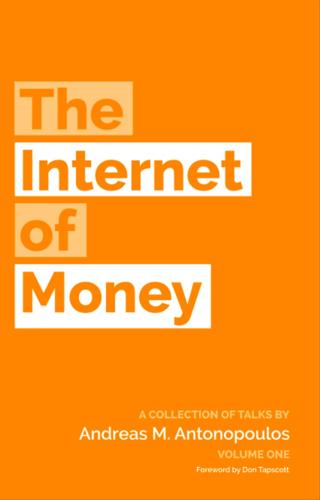
The Internet of Money
by
Andreas M. Antonopoulos
Published 28 Aug 2016
In fact, you can trade S&P 500. You’re not buying a single company; what you’re buying into is the aggregation of all of the different things that are in the stock market as an expression of the total value of the market. You can then use that meta-instrument in order to price transactions. For example, the London Interbank Offered Rate is used as a meta-interest rate to contractually tie things to a global set of interest rates. You don’t need to say, "I will buy this at whatever the Bundesbank says." You say, "I’ll buy this at LIBOR plus 2," and then you have a stable point of reference for transactions. I expect we’re going to see much of the same with currency.
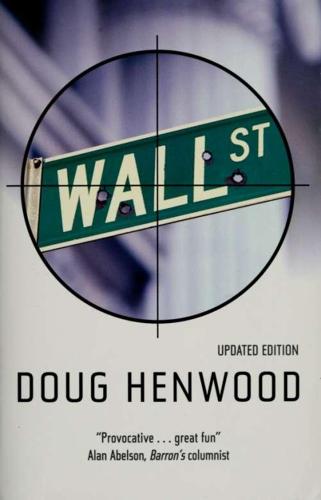
Wall Street: How It Works And for Whom
by
Doug Henwood
Published 30 Aug 1998
Currency swaps take care of this by stipulating that a default by one party means the end of the agreement; this limits risk only to the difference between the two interest streams, not the full face value of principal and interest. And here's an example of an interest rate swap (Abken 1991). Say a bank issues a one-month certificate of deposit, and then invests the proceeds in a two-year note whose interest payments are tied to the London Interbank Offered Rate (LIBOR, the rate banks charge each other in the London-based Euromarkets). The CD will mature well before the note, and the rate the bank might have to pay the CD holder may not move in lockstep with LIBOR. Should the two interest rates march to their own drummers, the bank could find itself losing money on the two-sided transaction.
…
See capital structure leveraged buyouts, 181-182, 264 capital structure, 298 costs to nature, 274 importance of public pension funds, 271 365 WALL STREET Jensen and Meckling's dismissal in 1976, 268 Jensen's later enthusiasm for, 270-271 job loss in RJR deal, 274 productivity gains from closures, 299 the record, 283-285 separation of cash and carcass, 272 and stock valuations, 284 Levinson, Jerome, 294-295 Lewis, Michael, 180 Lexecon Inc., 182 liberals incorrect position on Fed, 123 upscale, 311 Lintner, John, 162 Liscio, John, 102, 104 Litan, Robert, 88 Livingston, James, 93-94 localism often not progressive, 302-303 London Interbank Offered Rate (LIBOR), 35 London Stock Exchange, 13 Long, William, 283-284 loose-money ideology, 301 Malkiel. Burton, 105 Malthus, Thomas Robert, 209 Malthusianism, green, 245 Managerial school, 251 managerialism, 258; see also corporations, governance managers hired by workers, 239; see also corporations, governance; money managers Mandeville, Bernard, 208-210 Manhattan, income distribution, 79 Manne, Henry, 277, 278 manufacturing, FIRE "output" surpasses, 76 margin, 30 market(s) apologists, 179-183 clearing vs. nonciearing, 138 information asymmetry and, 172 costlessness/expense of, 138, 139 failures, 138 freedom of (Marx), 231 incomplete, 179 manipulation of, 53, 105 religious belief in, 150 self-regulating, and governance issue, 247 Markowitz, Harry, 179 Marx, Kari, 13, 135, 187, 229-241 anticipation of governance literature, 246 on credit as boundary-smasher, 235 as fundamental, 244 corporate form as presaging worker control (Marx), 239-240 critique of Ricardo's self-realization, 213-214 as endogenist, 220-221 gold in a crisis, 221 on government debt, 24 on interest rates, 244 on interest-bearing capital, 22 and Keynes, 212-214 on money and crisis, 232-236 as object of greed, 236 and power, 231-232, 320 no abolition of interest alone, 237 primitive accumulation, 252 revenue vs. capital, 245 on unproductive labor, 209 wrong on bailouts, 235 Marxian views of finance, 244 Marxism as Benthamism (Keynes), 212 mathematics required for economics, 139 Matthei, Charles, 314 Maxxam, 274 Mayer, Martin, 89 McDonough, William, 40 mean reversion, 178 Means, Gardiner C, 246, 252-256. 257-258 media, financial.
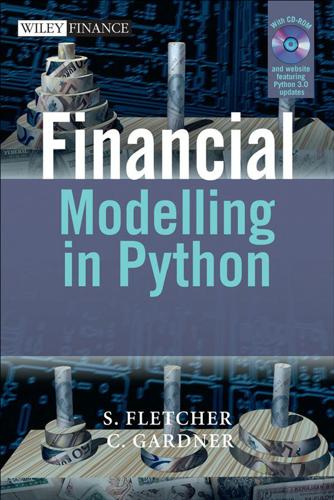
Financial Modelling in Python
by
Shayne Fletcher
and
Christopher Gardner
Published 3 Aug 2009
The libor rate constructor takes in the properties common to all observables plus the projection start and end date together with the projection basis. The projection period, define by the difference between the projection end date and start date, determines the period over which the LIBOR rate is to apply. As an example, for GBP LIBOR the projection period is six months. Furthermore, there is usually a 2 London Interbank Offer Rate – a daily reference rate on which banks in the London money market offer to lend each other unsecured funds. Data Model 71 lag between the date on which the rate is set and the beginning of the projection period. Once again, as an example, for GBP LIBOR the lag is two business days. from ppf.date time import year fraction from fixing import * from observable import * class libor rate(observable): def init (self , attributes , flow id , reset id , reset date , reset currency , proj start date , proj end date , proj basis , fix , spread=None): observable. init (self , attributes , flow id , reset id , reset currency , reset date , proj end date , fix , spread) self. proj start date = proj start date self. proj end date = proj end date self. proj basis = proj basis def proj start date(self): return self. proj start date def proj end date(self): return self. proj end date def proj basis(self): return self. proj basis def year fraction(self): return year fraction(self. proj start date , self. proj end date , self. proj basis) def str (self): s = "%d, " % self.flow id() s += "%d, " % self.reset id() s += "%s, " % self.reset currency() s += "[%s, %s], " % (self. proj start date, self. proj end date) s += "%s, " % day count basis strings[self. proj basis] fix = self.fix() if fix.is fixed(): s += "%f, " % fix.value() spread = self.spread() 72 Financial Modelling in Python if spread <> None: s += "%f, " % spread return s For completeness the libor rate class provides a method forward for determining the value of the LIBOR rate at a particular point in time. class libor rate(observable): def forward(self, t, curve): fix = self.fix() if fix.is fixed(): return fix.value() start = self. proj start date until = self. proj end date Ts, Te = (int(start - t)/365.0, int(until - t)/365.0) Ps, Pe = (curve(Ts), curve(Te)) dcf = year fraction(start, until, self. proj basis) forward = (Ps/Pe-1.0)/dcf return forward In practice, it is frequently necessary to generate collections of LIBOR observables.
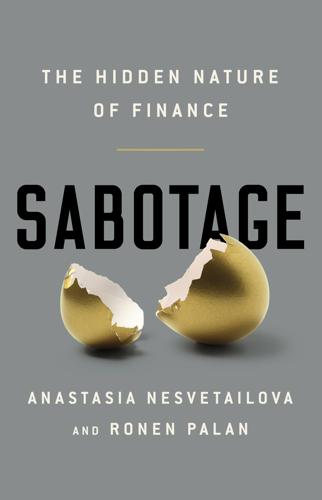
Sabotage: The Financial System's Nasty Business
by
Anastasia Nesvetailova
and
Ronen Palan
Published 28 Jan 2020
In an ICO, a quantity of cryptocurrency is sold in the form of ‘tokens’ (‘coins’) to speculators or investors in exchange for legal tender or other cryptocurrencies. The tokens sold are promoted as future functional units of currency if or when the ICO’s funding goal is met and the project launches. LIBOR: London interbank offered rate. A benchmark rate at which major global banks lend to one another in the international interbank market for short-term loans. ‘London Whale’: The nickname of a trader, Bruno Iksil, who lost at least $6.2bn for J. P. Morgan Chase & Co. in 2012. MBS: Mortgage-backed securities. A financial instrument similar to a bond.
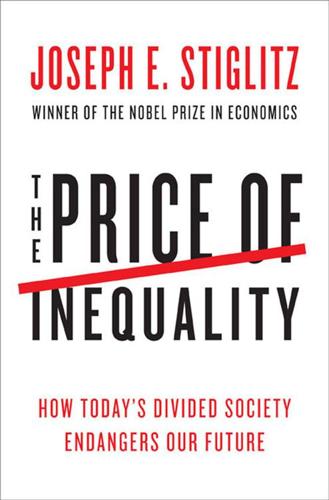
The Price of Inequality: How Today's Divided Society Endangers Our Future
by
Joseph E. Stiglitz
Published 10 Jun 2012
When competition is so limited, prices are likely to be far in excess of competitive levels.41 That’s why the sector enjoys profits estimated to be more than $115 billion a year, much of which is passed along to its top officials and other bankers—helping create one of the major sources of inequality at the top.42 In some products, such as over-the-counter credit default swaps (CDSes), four or five very large banks totally dominate, and such market concentration always gives rise to the worry that they collude, albeit tacitly. (But sometimes the collusion is not even tacit—it is explicit. The banks set a critical rate, called the London Interbank Offered Rate, or Libor. Mortgages and many financial products are linked to Libor. It appears that the banks worked to rig the rate, enabling them to make still more money from others who were unaware of these shenanigans.) Of course, even when laws that prohibit monopolistic practices are on the books, these have to be enforced.
…
., 187–206 alternative frameworks for, 188, 202 banks’ deception in, 198, 199, 200, 201, 373 burden of proof in, 199–200 contracts in, 197 corporate advantages in, 66, 132, 189–90, 191, 203, 272, 327, 374 costs in, 100, 189–90, 202 distributive consequences of, 190, 193, 271, 317, 370 economic bias in, 44 Federal Reserve accountability in, 252 financial crisis prosecution in, xv–xvi, 70, 119, 199, 372, 373 financial sector’s favoring in, 191–202, 203, 204–6 information asymmetries in, 271, 368 political influence in, 44, 190–91, 200 property rights in, 190, 194, 197, 198, 199 purpose of, 100, 188–91 reform of, 273 rent seeking in, 42, 43, 203, 273 and social responsibility, 121 unfairness in, 42, 43, 100, 189–90, 191–202, 203, 206, 368, 373, 375 Lehman Brothers, 253, 313, 390 Leme, Paulo, 353 Lenin, Vladimir, 354 Lessig, Lawrence, xxiv LG, 203 Lincoln, Abraham, 137 List, John, 347 lobbying, 48, 95, 101, 185, 196, 319, 324, 325, 338 Lockheed Martin, 210 London Interbank Offered Rate (Libor), 47 Longitude (Sobel), 109 Lula da Silva, Luiz Inácio, 5, 139, 353 Luxembourg, 183, 286 manufacturing: compensation shifts in, 65, 328 job losses in, 54, 56, 57, 232–33, 285, 321 societal impact of, 156 marginal productivity theory, 30, 33, 77, 267 marketing, 150–51, 160, 162, 357, 359 Marlboro Man, 151, 354 marriage, economic insecurity and, 15, 303 Marshall, Alfred, 102 Marx, Karl, 30, 292 Massachusetts, 200–201 McCarty, Nolan, xxiv McDonald’s, 381 media, 128–29, 134, 135, 136, 160, 163, 252, 272, 286, 335, 348, 349, 358 Medicaid, 14, 228, 277, 378 Medicare, 17, 48, 97, 147, 163, 176, 210, 228–29, 265, 320, 355, 364, 378, 380 Mexico, 16, 42, 64, 138, 176, 365 MF Global Holdings, 313 microcredit, 196–97 Microsoft, 42, 44, 45–46, 74, 203, 317, 318, 319 middle class, 54, 117, 137 assistance to, 29, 274 economic insecurity of, xvii, 12–14, 23, 26, 103, 265–66 globalization’s effect on, 63, 64 Great Recession’s effect on, 10 hollowing out of, 2, 9, 25, 38, 84, 133, 300 income of, 3, 4, 7, 8, 9, 14, 25, 54, 56, 57, 63, 72, 240, 297, 298, 300, 385 recovery of, 29, 225 tax deductions for, 222–24, 379 unfair policies toward, xv, xxii wealth sources of, 3, 8, 13–14, 91, 167 Middle East, 40 see also Arab Spring Mill, John Stuart, 368 monetarism, 257, 258–59 monetary policy, 85, 86, 88, 133, 177, 208, 234, 239–40, 248, 250, 251, 252, 254, 257–58, 259, 261, 262, 263–64, 380, 382, 385, 389, 392 distributive consequences of, 243–45, 264, 279 idea-shaping in, 256–63 monopolies 31, 32, 35, 39–47, 95, 97, 140, 213, 270–71, 274, 316, 318 moral hazard, 171, 229, 256, 362, 363 Mortgage Electronic Registry System (MERS), 198, 201, 374 mortgage fraud, 198, 201, 372, 373 mortgage restructuring, 169–72, 201–2, 284–85, 362, 363 mortgages, tax deductions for, 222, 223, 379 mortgage securities, 205 Mosaic, 318 motivation, 102, 103, 111–12 Motorola, 203 Mozilo, Angelo, 333 Mueller, Edward, 42 Mullainathan, Sendhil, 103 municipal bonds, 212, 378 National Academy of Sciences, 26 National Center for Supercomputing Applications, 318 National Commission on the Causes of the Financial and Economic Crisis in the United States, 357, 358 National Economic Council, 180 Netherlands, 19, 22 Netscape, 45–46, 318 New Deal, xiii, 88, 231 Newfoundland, 138 New York Times, 11, 119, 205 Nokia, 203 North American Free Trade Agreement, 141 Norway, 22, 23, 183, 220 NTP, Inc., 203 Obama, Barack, x, 352 deficit reduction by, 207 and ethanol subsidy, 51 Federal Reserve nominees of, 319 financial crisis response of, xv, 168, 169, 361 health care program of, 14, 163, 276 tax position of, 395 Obama administration, xiv, 67, 170, 171, 200, 250, 284, 362, 396 Occupy Wall Street, ix–xiv, xix–xxi, 102, 116, 118, 127, 134, 345 “Of the 1%, for the 1%, by the 1%” (Stiglitz), xi Olin Foundation, 44, 359 1 percent: definition of, xxii economic framework’s favoring of, xx, xxii, 31, 34, 62, 67, 91, 117, 131, 142, 173, 174, 189, 191, 204, 239, 244, 245–46, 264, 348, 354 economic security of, 18, 19, 25 globalization’s benefits to, 62, 64, 142 idea-shaping by, 129, 134, 137, 146–86, 211, 236, 256, 287 income of, 2, 4, 8, 25, 52, 72, 85, 215, 267, 294, 295, 297, 298, 299, 300, 315, 332, 335 legal framework’s favoring of, 188, 191, 202, 206, 273 media’s control by, 129, 134, 286 political power of, xix, 32, 67, 83, 86, 89, 101, 118, 119, 120–21, 129, 131–33, 134, 137, 138, 146, 191, 267, 285, 348, 351 public perception of, 20–21, 146, 154, 159, 358 reform aimed at, 29, 268–74 rent seeking by, 32, 38, 41–43, 77 saving by, 85, 88, 223, 275 small government preference of, 93 social contract violation by, xvi–xvii social contributions of, 27, 41, 77–78, 96, 266 social norms’ shaping by, 53 taxation of, 5, 38, 42–43, 62, 71–73, 74, 76, 77, 84, 86, 87–88, 114, 115, 116, 138, 142, 159, 167, 208, 209, 211, 212, 214–15, 218, 221, 223, 224, 225, 226, 256, 274, 275, 294, 312, 335, 344, 360, 383, 394 value change in, 288 wealth of, 2, 3, 8, 25, 32, 38, 56, 72, 73, 80, 84, 166–67, 295 see also corporations; financial sector Organization for Economic Cooperation and Development (OECD), 16, 185 Orshansky, Mollie, 305 Ostrom, Elinor, 322 overdrafts, 194, 370 Pager, Devah, 69 Papua New Guinea, 184 patents, 43, 202, 203, 316, 374, 375 see also intellectual property pension funds, 227–28 Personal Responsibility and Work Opportunity Reconciliation Act, 17 Pew Foundation, 20 pharmaceutical industry: government munificence toward, 40, 48, 97, 210, 211, 224, 228, 272, 276 research in, 97 see also health industry Pierson, Paul, xxiv Piketty, Thomas, xxiii, 114 Pinochet, Augusto, 258 polarization, 8–9 Polarized America (McCarty, Poole, and Rosenthal), xxiv police lineups, 149 police states, 125 politics, U.S.: cognitive capture in, 161–62 corporate influence in, 34, 37, 41, 47, 48, 50, 51, 61, 62, 95, 99, 101, 111, 131–32, 135, 136–37, 200, 202, 285, 286, 319, 324, 325, 338, 350 distributive consequences of, 31, 52, 58, 239, 277, 278, 322 economy’s linkage with, xi, xix–xx, xxiv, 34, 38–39, 47, 52–53, 59, 65, 66, 89, 118, 131, 135, 138, 151, 173, 266, 287, 288–89, 348 idea-shaping in, 129, 137, 148, 149, 151–52, 153–55, 159–62, 163, 166–72, 175, 180, 185, 186, 285 legal consequences of, 190–91 media’s role in, 129, 134, 135, 136, 160, 163, 286 reform of, 135–36, 267, 285–86 regulatory capture in, 47–48, 248, 249–50, 253, 264 societal factors in, 64 unfairness in, x, xi, xii, xviii–xx, 31–32, 39, 41, 83, 101, 114–15, 118, 119, 120–21, 127, 129, 131–33, 134, 135, 136–37, 138, 144, 146, 191, 196, 200, 202, 267, 285, 286, 319, 324, 325, 338, 348, 350, 351 voting in, 119–21, 129–31, 133, 134, 135, 137, 286, 288, 325, 345, 349, 350, 351, 355 see also democracy, U.S.; government, U.S.

Manias, Panics and Crashes: A History of Financial Crises, Sixth Edition
by
Kindleberger, Charles P.
and
Robert Z., Aliber
Published 9 Aug 2011
Speculation in currencies has resulted in substantial profits for the large international banks although a few banks and industrial firms have incurred large losses.8 Consider the growth in the external debt of Mexico, Brazil, Argentina, and the other developing countries in the 1970s; bank loans to these countries increased by 30 percent a year and the external debt of these countries increased by 20 percent a year. The bank loans generally had a maturity of eight years and interest rates were floating and set with a specified markup over London Interbank Offer Rate (LIBOR). The interest rates averaged 8 percent although they trended upward during the decade. Since the cash that the borrowers received from new loans was substantially larger than the interest payments on their outstanding loans, they incurred no burden or hardship in making their debt service payments on a timely basis.
…
(Sr) 89 Kenyon, Cox & Co. 44 Keynes, John Maynard (Lord Keynes) 227 Keynesians 30, 229 on Great Depression 72–3 Kindelberger, C.P. 13 King, W.T.C. 86 Kipper- und Wipperzeit mania, 1619–22 17, 54, 157–8 Kitchin inventory cycle 21 van Klavaren, Jacob 161–2 Knickerbocker Trust Company 87 Knight, Robert 173 Koechlin, Nicholas 186 Kopper, Michael 155 Korea see South Korea Kozlowski, Dennis 157, 163 Kreuger, Ivar 170, 173 Kuhn, Loeb & Co. 80, 216 Kuwaiti Souk al-Manakh 57 Kuznets cycle 21 Laffitte, Jacques 48, 168, 186, 199, 207 de Lamartine, Alphonse 79 Lamont, Thomas, W. 223 land see real estate Lasker, Eduard 79–80, 167 Latin America 17, 42, 44, 45, 113, 120, 270n33 see also individual countries Lautenbach, Wilhelm 295n52 Law, John 51, 53, 55, 86, 110–11, 164–5, 272n73 Lay, Kenneth 155 Lazard Frères 64 LeBon, Gustave 37 LeClerc bank, Geneva 173 League of Nations 70–1, 212, 223, 225 Lebeck, Jonathan 169 Leeson, Nick 13, 146–7 Leeuw, David 111 Lehman Brothers 24, 25, 37, 74, 85–8, 132, 155, 192, 200, 223, 257–72, 287, 297 lender of last resort amounts loaned 208–9 Bagehot on 196–7, 205, 208, 221 Bretton Woods system and 228–34 choice of 198–205 crisis management by 19–20, 180–1, 195–210 domestic 195–210, 212, 214–15, 240, 254 function 13, 19–20, 28–9, 195–210, 211–38, 253–5 in Great Depression 13, 208, 209 IMF as 13, 20, 180–1, 212–13, 216, 229–34, 255 international 13, 19–20, 211–38, 240, 253–5 liquidity provision 28–9, 254 monetarists on 209 monetary stability and 20 origin of concept 196–8 World War I, effects of 13, 222–8 rules for 214, 215 timing of loans 209–10 Levine, Dennis 174 Lévy-Leboyer, Maurice 186 liability management 56–7, 188–90 ‘liars’ loans’ 260 Lidderdale, William 182, 188–9, 220 lifeboat operations 23 Lindau, Paul 168 liquidation 28 liquidity 33, 195–6 Liverpool, Lord (Roberts Banks Jenkinson) 88, 199–200 loans 55, 114, 174 Bretton Woods system 246ff Dawes Plan, 1924 45, 55, 168, 242 to developing countries 35, 50, see also individual countries international 164, 168 Silberzug, 1857 237 Thiers rente 55 Young Plan, 1930 244 see also credit; debt; lender of last resort London as financial center 239–40 see also Great Britain London Interbank Offer Rate (LIBOR) 35 Long-Term Capital Management (US) 6, 74, 94, 95, 150, 184, 208, 223, 227, 278–9 Louisiana Purchase, 1803 161 Louvre Agreement, 1987 256 Love, Robert 216 Madoff, Bernie 20, 117–18 Maison Hottinguer bank 162, 214, 218 Maklerbanken (Germany) 63 Malaysia, 1990s asset price bubble 1, 3, 6, 20, 22, 107, 126, 171, 177, 179, 189, 190, 229, 254 Malthus, Thomas Robert 51 management see crisis management; liability management manias (speculative excess) causes of 12–13, 17, 18, 19, 39–61 credit expansion and 12, 13, 14, 28, 44–5, 62–83 as cyclical 13, 26, 31 definition 15, 30, 39 development of 44–6 displacements and 48, 53–6, 57 Kipper- und Wipperzeit, 1619–22 17, 54, 157–8 monetarist view of 17 monetary expansion and 18 national differences in 59–61 objects of speculation 57–9 policy issues on 15–18 pseudo-manias 17 psychology of 42–4 as rational/irrational 39–61 swindles perpetrated during 20–1, 46–7 in technology stocks 1, 7, 15, 17, 20, 181, 183 see also bubbles; crises Marcus, Bernard K. 44 mark (Germany) 2, 41, 78, 241, 248, 250, 275, 279, 283, 284, 290, 291, 292 market prices irrationality in 42–61 rationality in 39–42 Marshall, Alfred 27, 42, 78, 217, 246, 310n21, 326n16 Martin’s Bank 207 Massachusetts Financial Services 137 Matthews, R.C.O. 226 Mayer, Martin 150 McCartney, R.
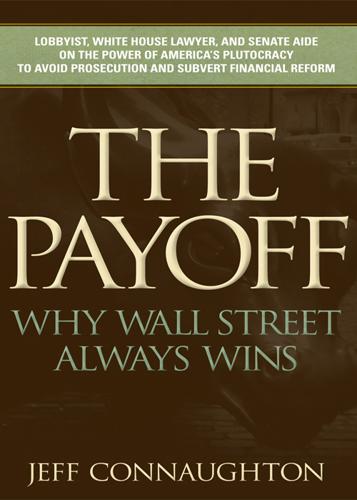
The Payoff
by
Jeff Connaughton
The American economy cannot succeed unless we restore and maintain financial stability. Two years later, the largest European banks—the standard for why the United States needs its own megabanks to compete globally, senators opposed to Brown-Kaufman had said—are still in crisis, causing continued financial instability. And the London Interbank Offering Rate (LIBOR)–fixing scandal has shown how rotten big-bank culture had become. In time, Ted’s words have gained even more force. That summer of 2010, though, public outrage was focused more on Washington than Wall Street. In October 1994, while I served in the Clinton White House, I don’t remember anyone predicting a Republican blowout.
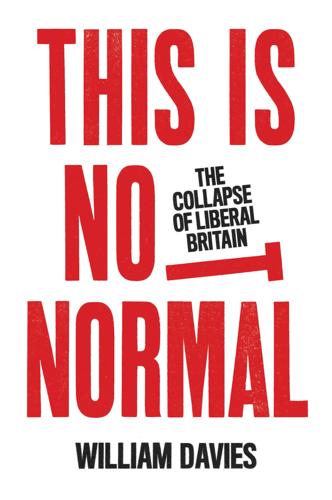
This Is Not Normal: The Collapse of Liberal Britain
by
William Davies
Published 28 Sep 2020
By the end of 2011, the News of the World had been closed down, the Leveson inquiry was underway, and the entire Murdoch empire was shaking. The biggest scandal of 2012 was a different beast altogether, involving unknown men manipulating a number that very few people had even heard of. The number in question, the London interbank offered rate, or Libor, is meant to represent the rate at which banks are willing to loan to each other. What was surreal, in an age of complex derivatives and high-frequency trading algorithms, was that this number was calculated on the basis of estimates declared by each bank on a daily basis, and accepted purely on trust.

Adaptive Markets: Financial Evolution at the Speed of Thought
by
Andrew W. Lo
Published 3 Apr 2017
In recent years, the financial system has been preyed on by all sorts of fraudulent behavior, whether blatantly as in the case of the Madoff scandal; deliberate misrepresentation, as in Bankers Trust’s actions against Procter & Gamble (and cases currently under litigation related to the financial crisis); or the unbelievable manipulation of the London Interbank Offered Rate, possibly the largest financial scam in the history of markets. But what happens if we “trust, but verify?” Consider a scenario that should sound rather familiar. An institution takes in money from trusting investors and claims to use it to make investments. It allows investors to withdraw their money at will, but in reality, it uses new investor money to satisfy their withdrawals.
…
., 366, 367, 370 Levins, Richard, 171, 172 Lévy, Paul, 19 Lewis, James, 159 Lewontin, Richard, 171, 172 Li, William, 372 Liber de Ludo Aleae (Cardano), 17 Lieberman, Matthew D., 85–87 life-cycle funds, 398 life expectancy, 258 Lintner, John, 263 Linux, 372 liquidity spirals, 289–291, 297 literacy, 165, 416 Litterman, Bob, 295 Lo, Julia, 127 Lockheed Corporation, 13, 14, 15 Lockner, Bob, 311 Lodish, Harvey, 418–420 London Interbank Offered Rate (LIBOR), 344 longevity risk, 408 Long-Term Capital Management (LTCM), 230, 241–244, 292, 294, 316, 321, 376 Loomis, Carol, 233 loss aversion, 58, 61–62, 65, 69 Lotta-Volterra equations, 279 Lou Gehrig’s disease (amyotrophic lateral sclerosis), 409 Lucas, Debbie, 361 Lucas, Robert, 36, 37, 42, 181 “Lucas critique,” 37 Lucifer Effect, 347–348 “Lucy” (australopithecine ancestor), 150, 152 Lynch, Peter, 6 macaque, 110, 121–122 Macchiaroli, Michael, 308 Mackay, Charles, 5 MacKinlay, Craig, 47–51, 71–72, 74, 167, 244, 280, 285 macroeconomics, 36–37, 212, 313 madness of mobs, 5, 9, 11, 109, 232, 261, 420 Madoff, Bernard, 4–5, 332–335, 344, 349–351, 354, 387, 393 Maestro (Woodward), 7 magnetic resonance imaging (MRI), 77–78, 86, 88–89, 90, 101, 102, 186, 337, 338 magnetoencephalography (MEG), 78 maladaptation, 188–189 Malkiel, Burton, 5–6 Maloney, Michael T., 14, 24, 38 Malthus, Thomas, 8–9, 45, 215 manufacturing sector, 330, 331 “March Madness,” 64–65 Marcus, Jeff, 383 Maréchal, Michel André, 352–353 margin calls, 242, 290, 326 margin requirements, 256, 369.

The Making of Global Capitalism
by
Leo Panitch
and
Sam Gindin
Published 8 Oct 2012
This interbank market had become increasingly central to the operation of the global payments system, and with seven out of every ten transactions taking place in US dollars, it was the most important focus of the Fed’s monetary policy; a select few Wall Street banks, operating as “market makers,” were especially central in reallocating the liquidity provided by the Fed.34 Since the benchmark for the trading of wholesale funds was the London Interbank Offer Rate (LIBOR)—effectively the internationally “traded version” of the Fed’s interest rate—the increasing spread between the Federal funds rate and LIBOR (as banks feared that their loans to other banks might not be repaid) represented a near-freezing of the payment networks between the world’s largest financial institutions, and endangered the capacity of the Federal Reserve to manage the global financial system.
…
., 396n39 Huntington, Samuel, 163 Hussein, Sadam, 218 Hyman, Louis, 386n27 Hymer, Stephen, 113, 287, 429n51 IBM, 115, 139, 176, 202, 225, 289, 296 Ignatieff, Michael, 341, n.3 imperialism, 5–7, 12, 20–1, 37–41, 48, 67–8, 87. 195–6, 224, 342–3nn12–15, ‘by invitation’, 90, 232, 294 Import Substitution Industrialization (ISI), 32, 104–5, 195, 212–4, 217, 239 Income Tax Act (1913), 45 India, 36, 212–3, 217, 276–8, 287, 291, 293, 299, 326, 334 Indonesia, 105, 133, 256–7, 260–1, 281, 291, 293, 296, 328 inequality, 12, 52, 140, 216, 269, 277, 299, 306, 321, 338–9, 375n44, 434n105 inflation, 14, 87, 138, 152, 158–9, 163, 165–7, 170–1, 192, 204, 235, 244, 247, 304, 326, 329, 383n58, 387n33 informal empire, 1, 5–8, 11, 19. 25–6, 37–41, 47–8, 70, 90–1, 104, 107, 195–6, 226, 332, 342–3n.12, 348n.4 Ingham, Geoffrey, 53 intellectual property rights, 39, 225, 227, 229 Inter–American Bank, 72 interbank market, 153, 179, 206, 215, 249, 254, 311–4, 325–8, 334 Clearing House Interbank Payments System (CHIPS), 153 London Interbank Offered Rate (LIBOR), 312 Interest Equalization Tax (IET, 1963 ), 125 inter-imperial rivalry, 2, 5, 13–14, 43, 79, 134, 218 International Association of Securities Commissions, 235 International Monetary Fund (IMF), 9, 17, 72, 122, 145–6, 155–9, 197, 209, 214–8, 223, 235, 238–9, 248–52, 255–65, 277–81, 285, 302–4, 328, 335–6, 367n43, 367n52, 424n95, 435n8 and Asian Crisis, 255–61, 269, 277–80 and Britain, 157–9 conditionality, 91, 157–9, 220, 240–1, 243–4, 279, 371n12 establishment of, 78–80 and Latin America, 214–6 and Mexico, 253–4 protests against, 241, 271 surveillance, 155 and Turkey, 217, 434n7 US dominates, 155, 235, 271,428n37 voting power in, 76 See also Bretton Woods; structural adjustment International Center for the Settlement of Investment Disputes (ICSID), 117, 379n16, 414n42 Interstate Commerce Commission, 32–4 International Trade Organization (ITO), 73, 93–4, 226, 229, 372n15, 379n16 International Union for Protection of Industrial Property (1883), 37 Iraq, 218, 252, 332, 341n3 Iran, 12, 51, 167, 218 Italy, 70, 96, 97, 123, 142, 155, 200, 203, 276, 332, 338 See also, Europe; G7; Marshall Plan Jacobsson, Per, 97–8, 374n39 Jaffe, Amy Myers, 103 James, Harold, 416n72 Japan, 2, 10, 13–4, 17, 19, 33, 37, 40, 47, 54, 70, 91, 94, 106–7, 115, 123, 126, 131, 134, 141, 145–7, 154–5, 164–71, 179, 189–91, 195, 202–13, 224–6, 237, 249, 253–62, 276, 280–1, 288, 294–5 , 304, 321, 325–7, 377n79, 421n36 admitted to OECD, 406n44 Dodge Report, 377n80 financial liberalization, 206 integrated production, 115–6 lender of last resort, 256 See also, Bank of Japan; G7; Plaza Accord Jefferys, Steve, 379n10 Jefferson, Thomas, 26 Johnson, Chalmers, 346n32 Johnson, Lyndon B., 15, 127–9, 138 Jones, Geoffery G., 345n26 Justice, Department of (US), 86, 122 Kahler, Miles, 415–6n59, 418n1 Kalecki, Michael, 79 Kapstein, Ethan, 391n85, 391n91, 407n63, 410n101 Katz, Richard, 408n79 Kautsky, Karl, 25, 47, 343n13 Kennan, George, 95, 355n1 Kennedy, Edward, 166 Kennedy, John F.
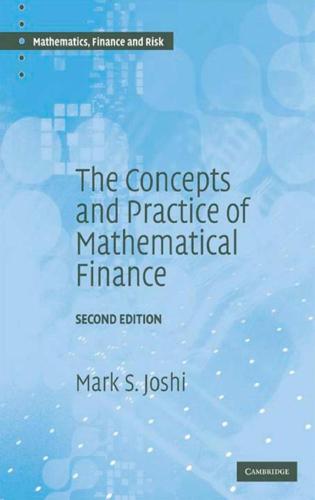
The Concepts and Practice of Mathematical Finance
by
Mark S. Joshi
Published 24 Dec 2003
Thus the implied yields from the repo curve are higher and the discount factors correspondingly lower than for gilts. 13.4.4 The LIBOR curve The third main curve is the LIBOR curve and this is the most important one. (Remember that with this is the rate at which banks can freely borrow and lend 316 Interest rate derivatives to each other and that LIBOR is an abbreviation for London Interbank Offering Rate.) The short end of the LIBOR curve is constructed from the market rates for borrowing. However, LIBOR rates are not available for long-term borrowing - one cannot go to the LIBOR market and ask for a five-year loan. The longer-dated discounts are therefore inferred from the prices of other instruments, in particular from the prices of the most liquid of instruments, swaps.
…
Knock-out option A derivative that pays off only if some reference level is not passed. Kurtosis The fourth moment of a random variable minus its mean divided by the variance squared: E ((X - E(X))4) Var(X)2 LIBID London Interbank Bid Rate. The rate at which the bank can deposit shortterm money in the interbank market. See also LIBOR. LIBOR London Interbank Offer Rate. The rate at which the bank can borrow short-term money in the interbank market. See also LIBID. Long A long position is a positive holding of an asset. Opposite to a short position. Market model A model for interest rates in which the movement of some market-observable rates are modelled directly.
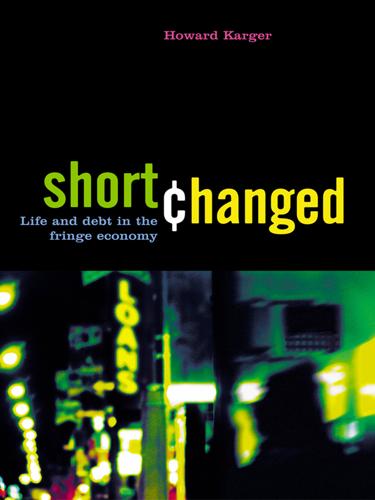
Shortchanged: Life and Debt in the Fringe Economy
by
Howard Karger
Published 9 Sep 2005
CHAPTER 4: THE CREDIT CARD INDUSTRY 1 Robert Manning, Credit Card Nation (New York: Basic Books, 2000). 2 Randy Martin, The Financialization of Daily Life (Philadelphia: Temple University Press, 2002). 3 Lloyd Klein, It’s in the Cards (Westport, CT: Praeger Publishers, 1999). 4 CNN, “Late Payments at 5-Year High, Past-Due Credit Card Debt Highest Since ‘97,” April 29, 2002.223 5 Manning, Credit Card Nation; the Motley Fool, “Industry Secrets, Scary Debt Stats,” 2003, www.motleyfool.com CNN Money, “Credit Card Noose Still Tight,” March 14, 2003, http://money.cnn.com/2003/03/13/pf/banking/creditcard_survey/ NFO WorldGroup, “Younger Consumers Paying the Piper for Excessive Credit Card Spending,” November 21, 2002; and Cardweb.com, “Foggy 2003,” www.cardweb.com/cardtrak/pastissues/jan03.html. 6 Coalition for Responsible Credit Practices, The Crisis of Growing Consumer Debt. 7 Source: Fair Isaac Corporation, 2004. 8 Source: Fair Isaac Corporation, 2004. 9 Consumerinfo.com, “Credit Scoring Made Simple,” 2003, www.consumerinfo.com/credit-scoring-simple.asp. 10 Merchant Bankcard Network, 2003. 11 U.S. Court of Appeals, Second Circuit, United States v. Visa U.S.A., Inc., Visa International Corp., and MasterCard International, Inc., Washington, DC, September 17, 2003. 12 Manning, Credit Card Nation. 13 The London Interbank Offered Rate Index (LIBOR) is an average of the interest rates that major international banks charge each other to borrow U.S. dollars in the London money market. 14 Patrick McGeehan, “The Plastic Trap: Soaring Interest Compounds Credit Card Pain for Millions,” The New York Times, November 21, 2004. 15 Consumer Action, Annual Credit Card Survey, San Francisco, CA, March 2003. 16 Ibid. 17 Ibid. 18 Consumers for Responsible Credit Solutions, “A New Report Issued by Consumers for Responsible Credit Solutions Carries Strong Warnings for Consumers Seeking Credit Counseling Services,” July 12, 2004, www.responsiblecredit.com/releases/071204.php. 19 McGeehan, “The Plastic Trap.” 20 Consumer Action, Annual Credit Card Survey, 2003. 21 Kathleen Day and Caroline Mayer, “Credit Card Penalties, Fees Bury Debtors,” The Washington Post, March 6, 2005. 22 Quoted in ibid. 23 Ibid. 24 Candace Heckman, “Lawmakers Mull Ban on Credit Card ‘Convenience Checks,’” Seattle Post-Intelligencer Reporter, February 12, 2003. 25 Quoted in Bonnie Rubin, “College Students Charge Right into Valley of Debt,” Chicago Tribune, August 16, 1998. 26 U.S.

How to Speak Money: What the Money People Say--And What It Really Means
by
John Lanchester
Published 5 Oct 2014
Will a German court, supervising a German contract between a German company and a Greek counterparty, a contract unambiguously stating that payment is in euro, accept payment in new drachma? This is one of the problems with the creation of a currency area that has no exit mechanism, i.e., the euro zone, and it has the potential to be a biggie. Libor The London Interbank Offer Rate is or was the single most important number in international financial markets, used as a reference point throughout the global financial system. Libor is the range of interbank lending rates, set after consultation between the British Bankers Association and more than three hundred participating banks.

The Enablers: How the West Supports Kleptocrats and Corruption - Endangering Our Democracy
by
Frank Vogl
Published 14 Jul 2021
NASDAQ reported on April 2, 2018: “HSBC Holdings plc (HSBC) has agreed to settle an antitrust case that accuses it of plotting with some other banks and manipulating the LIBOR benchmark interest rate. The bank is required to pay about $100 million despite denying any wrongdoings. While the preliminary settlement documents were filed in the U.S. District Court in Manhattan, court approval for the same is still awaited . . . LIBOR or the London Interbank Offered Rate, an important benchmark set by the British Bankers’ Association, is used by the financial institutions across the globe to set the interest rates for lending purposes on several transactions.” 19. The Daily Mail, UK, headline: “The Fidgety Banker’s Fingers Danced a Nervy Little Hornpipe,” Quentin Letts, Yesterday in Parliament, February 25, 2015. 20.
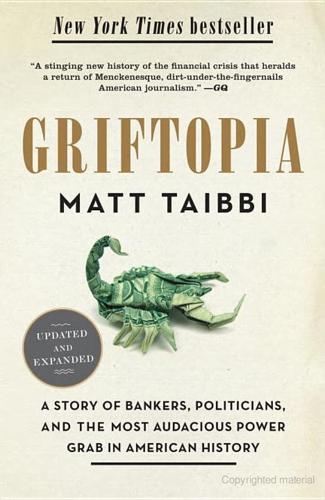
Griftopia: Bubble Machines, Vampire Squids, and the Long Con That Is Breaking America
by
Matt Taibbi
Published 15 Feb 2010
At around the same time Andy was doing his billion-dollar deal, another trader at a relatively small European bank—let’s call him Miklos—stumbled on to what he thought, at first, was the find of a lifetime. “So I’m buying bonds,” he says. “They’re triple-A, supersenior tranche bonds. And they’re paying, like, LIBOR plus fifty.” Jargon break: LIBOR, or the London Interbank Offered Rate, is a common reference tool used by bankers to determine the price of borrowing. LIBOR refers to the interest rate banks in London charge one another to borrow unsecured debt. The “plus” in the expression “LIBOR plus,” meanwhile, refers to the amount over and above LIBOR that bankers charge one another for transactions, with the number after “plus” referring to hundredths of a percentage point.
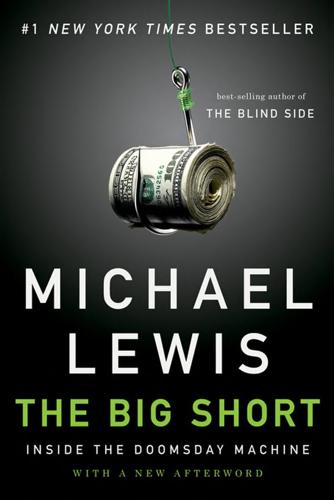
The Big Short: Inside the Doomsday Machine
by
Michael Lewis
Published 1 Nov 2009
As a rule of thumb, in the event of default, the lender collected roughly 50 cents on the dollar. And so roughly 16 percent of the borrowers in a mortgage pool needed to default for the pool to experience losses of 8 percent. * The story of how and why they did this has been painstakingly told by Financial Times journalist Gillian Tett, in her book Fool's Gold. * London Interbank Offered Rate--the interest rate at which banks will lend money to each other. Once thought more or less riskless, it is now, more or less, not. * Dear Reader: If you have followed the story this far, you deserve not only a gold star but an answer to a complicated question: If Mike Burry was the only one buying credit default swaps on subprime mortgage bonds, and he bought a billion dollars' worth of them, who took the other $19 billion or so on the short side of the trade with AIG?
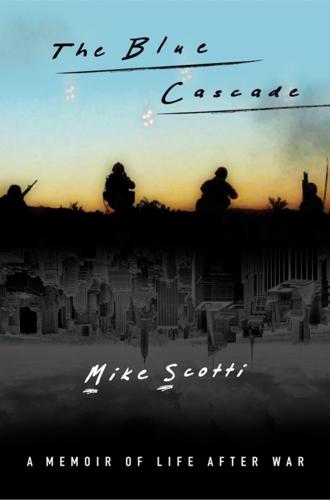
The Blue Cascade: A Memoir of Life After War
by
Mike Scotti
Published 14 May 2012
Max out the other credit card. Call the bank. Make it last. Don’t stop. Off the rails. Please—take it. Everything I have left. I don’t care anymore. I don’t care about signing bonuses or networking or generally accepted accounting principles. About half-Windsor tie knots, proper Excel formatting, or the London interbank offered rate. Then a tap-tap-tap on my shoulder. “Sir, are you friends with that gentleman over there?” “Yes.” “I’m sorry, sir, but he is going to have to leave.” I didn’t bother to ask why. I just accepted it. Back on the road to Memphis in the early morning light. “What time is your flight, dude?”

When the Money Runs Out: The End of Western Affluence
by
Stephen D. King
Published 17 Jun 2013
Should a lack of trust prevent recovery from materializing, the cyclical argument would no longer hold. In 2012, that certainly appeared to be a valid interpretation. Five years after subprime entered the public consciousness, Bob Diamond, the high-profile chief executive of Barclays Bank plc, was forced to resign, thanks to an interest rate-rigging scandal affecting the London interbank offered rate (Libor) – the interest rate paid daily by banks for funds from other banks – which, during the financial crisis, became a key barometer of the health or otherwise of individual banks. Fiddling with Libor denied relevant information to investors about the solvency or otherwise of financial institutions, thus increasing the likelihood of inappropriate financial decisions.
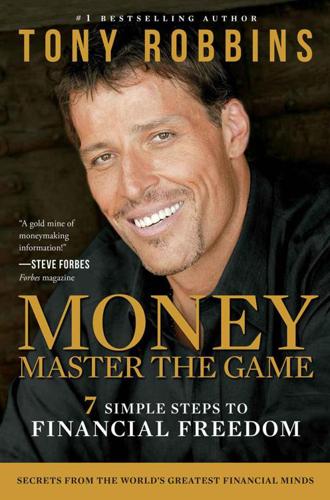
MONEY Master the Game: 7 Simple Steps to Financial Freedom
by
Tony Robbins
Published 18 Nov 2014
In the last couple years alone, we have seen rogue traders cause billions in losses for banks; large firms such as MF Global misappropriate client funds and ultimately declare bankruptcy; insider trading convictions from one of the world’s largest hedge funds; and bank traders criminally prosecuted for rigging LIBOR (London Interbank Offered Rates), the world’s most widely used benchmark for short-term interest rates. THE CHEF DOESN’T EAT HIS OWN COOKING We are continually sold and influenced by those who “do as I say, not as I do.” In a sobering 2009 study released by Morningstar, in tracking over 4,300 actively managed mutual funds, it was found that 49% of the managers owned no shares in the fund they manage.
…
(DOL), 146–47, 152 LaChappelle, Easton, 557–59 Lake Wobegon Effect, 334 Lao-Tzu, 26, 29 Las Vegas Sands Corp., 62 Lauer, Matt, 270, 349–50, 485 Lawrence, T. E., 203 leadership, 501 Leape, Jim, 556 learned helplessness, 180 Lee, Bruce, 42 Lehman Brothers, 378 Lewis, JT, 591–93 Lewis, Michael, 7 LIBOR (London Interbank Offered Rates), 123, 516 lies we tell ourselves, 183–99, 249 and breakthroughs, 184–99 and fear of failure, 183–84 and fear of unknown, 185 life: as adventure, 291 artificial, 566 balance in, 258, 577 decisions in, 244, 246 as information technology, 566 quality of, 37, 292, 538, 576, 577, 580–82, 583 race of, 233 you as creator of, 226, 229, 246 your stage in, 331–32 lifecycle funds, 157 life expectancy, 31–32, 409, 538 life insurance: borrowing from, 446–47 death benefit proceeds from, 447 PPLI, 443–48 in Security/Peace of Mind Bucket, 309 lifestyle, 209–10, 218 changing, 287–92, 612 and Dream Bucket, 341 moving to another place, 288–91 437 Lifetime Income plan, 46, 170–71, 308, 406–18, 613–14 annuities, 416–18, 419–41 income insurance, 415–16 John’s case, 412–14 Susan’s case, 414–16 Lincoln, Abraham, 19 liquidity, 302, 331 Livermore, Jesse, 525 living trust, 448–49 LL Cool J, 15 Lombardi, Vince, 51 longevity insurance, 426–27 “lost decade,” 107, 357, 366, 396 lottery: in retirement, 412 spending money on, 37, 334 love and connection, 77 luck, 228–29, 343, 412 Lynch, Peter, 354, 400 Magellan fund, 400 Maker Revolution, 559–61 Malkiel, Burton, 49–52, 59, 96–97, 326, 354, 356–58 on compounding, 50–52 on diversification, 325 on dollar-cost averaging, 355, 358, 365, 366 and index funds, 49, 97 on rebalancing, 359, 361 on tax-loss harvesting, 362 Mallory, George, 406, 409 Marcus Aurelius, 381 marketing, 85, 97, 102 market timing, 97, 296 Markowitz, Harry, 297, 379, 472 Marley, Bob, 232 mastery: execution as, 65 levels of, 42 Mayweather, Floyd “Money” Jr., 53–54, 210 McCarty, Oseola, 60–61, 62, 63 McDonald’s, 373–74 McGonigal, Kelly, 190–99 meaning, 575, 580–82 Meat Loaf, 52 Medicare/Medicaid, 149 Mellon, Andrew, 315 Merckle, Adolf, 66, 71–72, 73 Metallica, 314 MF Global, 123 Microsoft, 377 millionaires vs. billionaires, 208–10 minimum wage, 263 mob mentality, 348–49 momentum trading, 325 money: as abstract concept, 3–4 compounding, 35–36, 49–52, 58, 60, 62–65, 256, 364 control of, 14 critical mass of, 33, 58, 89, 90, 408 doubling, 283, 284 emergency/protection fund, 216–17, 302 and emotion, 209, 210 and financial freedom, 5–6 and happiness, 588–91 loss of, 336 love of, as root of evil, 195 to make money, 192 mastery of, 6, 71 nest egg, 58, 257 and power, 3 as reflection of creativity, 193 for retirement, 32, 210–11 spending plan, 253–56 as tool, 3 trading time for, 54 what you earn vs. what you keep, 273 where to put, see asset allocation worry about, 190–91 Moneyball, 65 Moneychimp, 119 money machine, 184, 192, 230, 254 savings as, 55–70 money market deposit accounts, 303 money market funds, 303 money masters: advice from, 455–57 author’s interviews with, 453–55 money pass, 333 Money Power Principles, 57, 230 1.
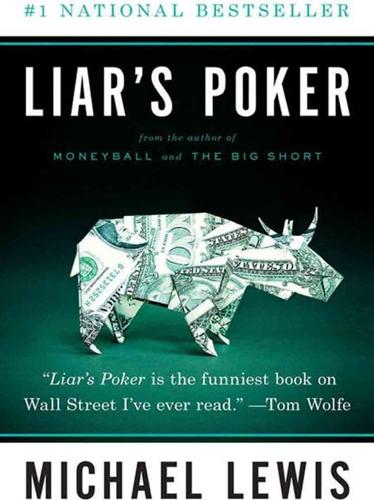
Liar's Poker
by
Michael Lewis
Published 1 Jan 1989
He picked out someone sitting on the edge of his seat in the middle of the room and asked, "What is your name?" "Ron Rosenberg," said the trainee. "Well, Ron," said Sangfroid, "what is LIBOR today?" LIBOR? LIBOR? A dozen back-row people whispered to the person next to them, "What the fuck is LIBOR?" LIBOR is an acronym for London interbank offered rate; it is the interest rate in London at which one bank lends to another; and it is available at 8:00 A.M. London time, or 3:00 A.M. New York time That gave the trainee four whole hours to find out the LIBOR rate before class began at 7:00 A.M. Along with every other fact in the bond markets, Sangfroid expected us to have LIBOR on the tips of our tongues.
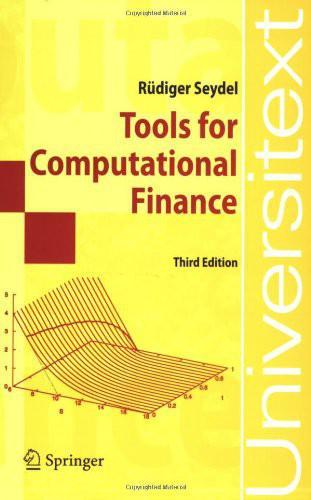
Tools for Computational Finance
by
Rüdiger Seydel
Published 2 Jan 2002
A2 Financial Derivatives Derivatives are instruments to assist and regulate agreements on transactions of the future. Derivatives can be traded on specialized exchanges. Futures and forwards are agreements between two parties to buy or sell an asset at a certain time in the future for a certain delivery price. Both parties make a binding commitment, there is nothing to choose at a later time. 1 London Interbank Offered Rate A comprehensive glossary of financial terms is provided by www.bloomberg.com/analysis 2 A2 Financial Derivatives 241 For forwards no premiums are required and no money changes hands until maturity. A basic difference between futures and forwards is that futures contracts are traded on exchanges and are more formalized, whereas forwards are traded in the over-the-counter market (OTC).
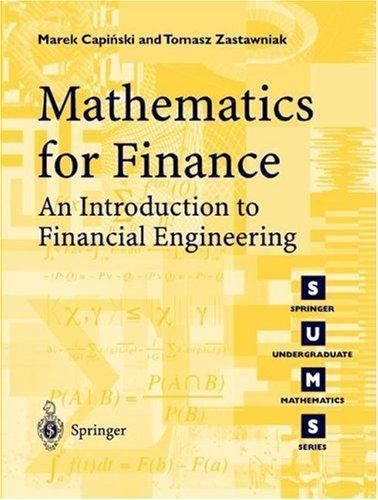
Mathematics for Finance: An Introduction to Financial Engineering
by
Marek Capinski
and
Tomasz Zastawniak
Published 6 Jul 2003
Insert into the above expression the bond prices as determined by the yields, B(0, N ) = e−τ N y(0,N ) and B(0, M ) = e−τ M y(0,M ) , to get f (0, M, N ) = N y(0, N ) − M y(0, M ) . N −M (10.5) Exercise 10.18 Suppose that the following spot rates are provided by central London banks (LIBOR, the London Interbank Offer Rate, is the rate at which money can be deposited; LIBID, the London Interbank Bid Rate, is the rate at which money can be borrowed): Rate 1 month 2 months 3 months 6 months LIBOR 8.41% 8.44% 9.01% 9.35% LIBID 8.59% 8.64% 9.23% 9.54% As a bank manager acting for a customer who wishes to arrange a loan of $100, 000 in a month’s time for a period of 5 months, what rate could you offer and how would you construct the loan?
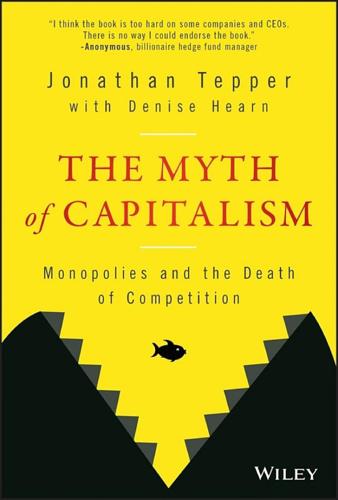
The Myth of Capitalism: Monopolies and the Death of Competition
by
Jonathan Tepper
Published 20 Nov 2018
., 25 Lewis-Mogridge Position, 19 Lew, Jack, 192 Licensing, increase, 84f Life expectancy, health expenditure (contrast), 132f Lilburne, John, 235–236 Lind, Michael, 6, 52 Lindsey, Brink, 174, 188 Litan, Robert E., 46 Littunen, Matti, 100 Lobbying feedback loop, creation, 188 impact, 186–187 incentive, 189 regulation/profits, correlation, 188 Localism, impact, 58–61 Local monopolies breaking, 244 impact, 116–122 Loewe v. Lawlor, 142 London Interbank Offered Rate (Libor), manipulation, 25 Low-wage workers, wage theft victims, 77–78 Luciano, Charles “Lucky,” 21–22 Luxottica, market dominance, 124 Lynch, Peter, 2 Lynn, Barry, 97 Lysine price fixing scandal, 22–23 M Macdonald, Alexander, 240 Madison, James, 236 Mafia Commission, 21 Ma, Jack, 112 Malone, John, 117 Managers, share ownership, 247 Manne, Geoffrey, 96 Manne, Henry, 96 Maranzano, Salvatore, 21 Marathon Asset Management, 7–8 Marinescu, Ioana, 38, 72 Market share, stealing, 199 Markets, reforming, 234 Markups increase, impact, 227f, 228f presence, 226–227 Marshall, Thurgood, 237 Marx, Karl, 9–10 Maryland State Constitution (1776), declaration, 236 Maslow, Abraham (hierarchy of needs), 76f Mastercard, market dominance, 122 Master Switch, The, (Wu), 19 Matchmakers (Evans/Schmalensee), 106 McCarran-Ferguson Act (1945), 30 McDonald, Jennifer, 83 McGrath, J.
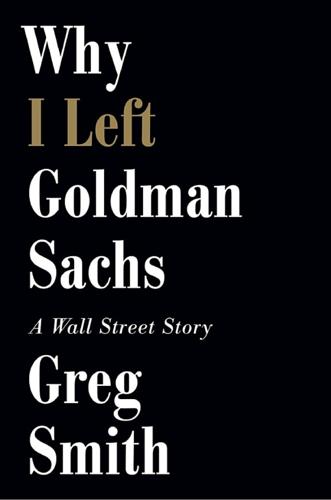
Why I Left Goldman Sachs: A Wall Street Story
by
Greg Smith
Published 21 Oct 2012
Who ultimately loses when Morgan Stanley misprices the Facebook IPO and mutual funds lose billions of dollars of retirement and 401(k) savings? Mom and Pop, that’s who. Whose lives are affected when a sovereign entity such as Libya loses a billion dollars of its own people’s money betting on derivatives? Who loses when Barclays and other major banks rig the London Interbank Offered Rate (LIBOR), the interest rate that underpins trillions of dollars in student loans and mortgages? Whose savings evaporate when JPMorgan brokers sell underperforming mutual funds to their clients to generate more fees? The list goes on and on and on. All this ultimately affects the citizens, teachers, pensioners, and retirees whose destinies are tied to these organizations that are managing their money.
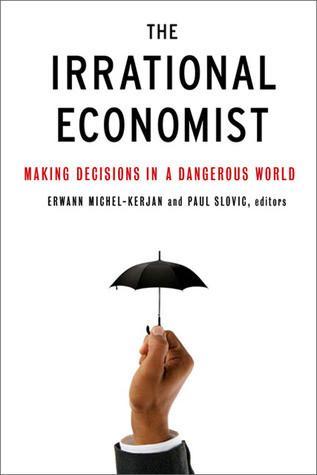
The Irrational Economist: Making Decisions in a Dangerous World
by
Erwann Michel-Kerjan
and
Paul Slovic
Published 5 Jan 2010
I thank Ken Froot for emphasizing for me this application of the debt overhang issue. 12 See Jaffee (2009). Chapter 20 Froot: Toward Financial Stability 1 I modify markets with dealer-centric to indicate the many dealer-intermediated markets that exist, and to contrast them from exchange-centric markets. 2 The London Interbank Offered Rate (LIBOR) is a daily reference rate based on the interest rates at which banks borrow funds from other banks in the London wholesale money market (or interbank market). Overnight index swaps (OIS) are instruments that allow financial institutions to swap the interest rates they are paying without having to refinance or change the terms of the loans they have taken from other financial institutions. 3 A credit default swap (CDS) is a credit derivative contract between two counterparties.
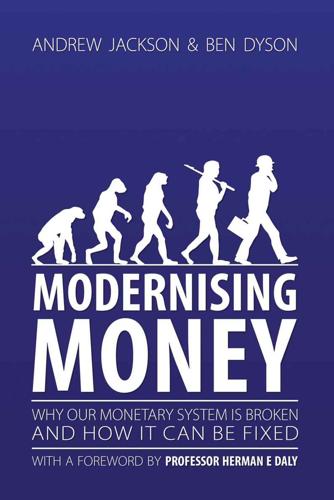
Modernising Money: Why Our Monetary System Is Broken and How It Can Be Fixed
by
Andrew Jackson (economist)
and
Ben Dyson (economist)
Published 15 Nov 2012
By standing ready to lend reserves to banks at a higher rate of interest (than the policy rate), and pay interest on reserves deposited with it at a lower rate of interest (than the policy rate), the central bank controlled the interest rate at which private banks lent reserves to each other on the interbank market (known as the London Interbank Offered Rate, or LIBOR for short). This is because a bank looking to borrow reserves from another bank on the interbank market would not pay more than the interest rate at which it could borrow from the Bank of England. Similarly, a bank lending reserves would not accept a lower interest rate than that which it could receive by leaving its reserves in its own account at the Bank of England.
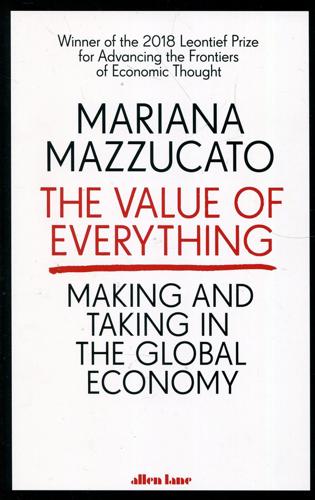
Value of Everything: An Antidote to Chaos The
by
Mariana Mazzucato
Published 25 Apr 2018
The concentration of banking and financial-market trading among a few large players, which is at its most extreme in the derivatives markets (Figure 18) underlines the extent to which financial ‘value added' may be traceable to monopoly and oligopoly rents.33 It is in financial regulators' interest to keep the number of players small, despite the risk of collusive behaviour: they want to maintain an overview of all market players' exposure so as to guard against systemic risk, and the decision (after the 2008 crisis) to bring over-the-counter derivatives trades (derivatives that are not listed on a stock exchange and are often bespoke deals between professional investors such as banks) onto a more viewable transparent central platform works in their favour. Indeed, the rigging of a key interest rate (the London interbank offered rate, Libor, used to set many private-sector borrowing rates globally) in the aftermath of the crisis may have occurred with the connivance of some regulators, at least according to traders who successfully defended themselves against fraud charges.35 The rigging, and subsequent arguments over who gained and lost from it, highlight the extent to which banks and other financial market players today battle over, and perhaps collude in, the distribution of a surplus created by mainly non-financial businesses.
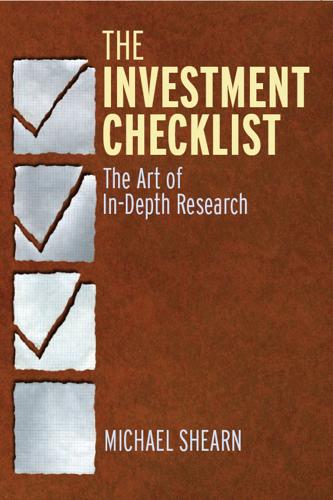
The Investment Checklist: The Art of In-Depth Research
by
Michael Shearn
Published 8 Nov 2011
It also strengthened the balance sheet and eliminated the interest cost and risk of these debentures. Determining Whether the Debt Interest Rate Is Fixed or Variable Determine if the interest rate on the debt is fixed or based on variable rates, such as LIBOR plus 5 percent (LIBOR is the London Interbank Offered Rate). You will find this information in the financial statement footnotes under the note titled Debt. If the interest rates are fixed, then you will be better able to assess the impact of debt financing. If interest rates are variable, you must allow for the possibility that interest rates may increase or decrease, adding uncertainty to your projections.

The End of Wall Street
by
Roger Lowenstein
Published 15 Jan 2010
Gamble, one of the AIG lawyers, bristled over the terms, and asked Jester if the government could tweak them so that AIG would still have an incentive—some value left for the shareholders if it ever emerged from the ruins. Jester didn’t budge. The bankers and officials at the Fed were extremely tense; outside the bank’s stone walls the country’s financial problems were spreading, and in unforeseen directions. The one-month Libor (London Interbank Offered Rate)—a measure of what banks pay for thirty-day loans—surged a quarter of a point, suggesting that banks were having difficulty getting funding. The overnight Libor rate surged three percentage points, a record and altogether bizarre advance. Depositors began to pull assets from weaker banks, particularly WaMu.

The Black Box Society: The Secret Algorithms That Control Money and Information
by
Frank Pasquale
Published 17 Nov 2014
The BBA published the rates within an hour of submission. Just as a high credit card rate may indicate that a consumer is in financial distress, abnormally high borrowing costs could be a clue to a bank’s ill health. By throwing out high and low numbers and averaging the rest, the BBA also set benchmarks like the London interbank offered rate (Libor). This rate was (and remains) the benchmark for hundreds of trillions of dollars of financial instruments and transactions.86 Banks reported estimated rates on an “honor system,” approximating what they believed their borrowing costs to be.87 That practice created opportunities for manipulative traders to push Libor higher or lower to benefit their own positions.
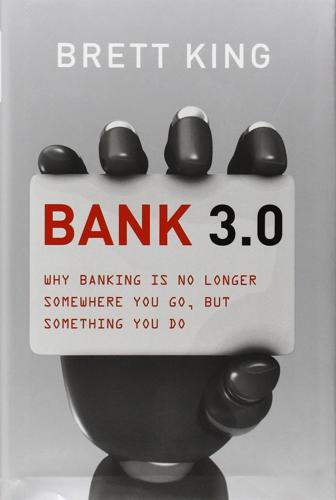
Bank 3.0: Why Banking Is No Longer Somewhere You Go but Something You Do
by
Brett King
Published 26 Dec 2012
Low-Counter: Typically a desk station within a branch where the relationship manager can sit with customers and potential clients and advise them on available products and services. Lo-Fi Prototype: A simple method of prototyping products, interfaces or applications and testing with target customers or users. LIBOR: London Interbank Offered Rate LinkedIn: An online social network for business professionals. Metcalfe’s Law: Attributed to Robert Metcalfe, this law states that the value of a telecommunications network is proportional to the square of the number of connected users of the system (n2). MFI: Microfinance Institution—an alternate form of bank found in developing countries which provides microcredit lending.
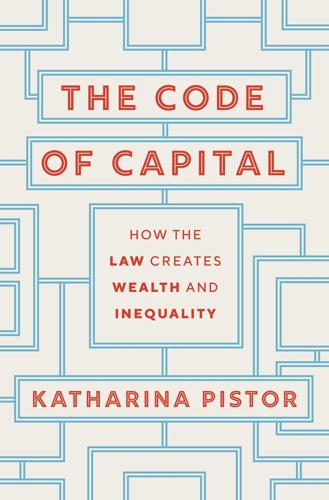
The Code of Capital: How the Law Creates Wealth and Inequality
by
Katharina Pistor
Published 27 May 2019
Oracles can feed a smart contract with benchmark prices, 190 c h a P te r 8 such as interest or exchange rates and price developments, but they can also request a decision from an external arbiter. Choosing the right oracle will, of course, be critical, because a bad choice that is hardwired on an immutable blockchain will be difficult to reverse. The legal code has not been completely without oracles, either. Take the London Interbank Offered Rate (LIBOR), a benchmark interest rate that serves as a reference point for trillions of debt contracts around the world. A handful of trusted banks set LIBOR by reporting the borrowing costs they face. The trouble is that they may not always report the entire truth. Evidence emerged after the crisis of 2008 that LIBOR was manipulated to artificially keep borrowing costs at lower than actual rates.14 Regulators have tried hard to push financial intermediaries to phase it out and replace it with a tamper-proof reference point, which is scheduled to replace LIBOR in 2021—although the fine details have yet to be worked out.15 The costs of switching from one outside anchor to another are high and there are likely to be losers who will resist any change.
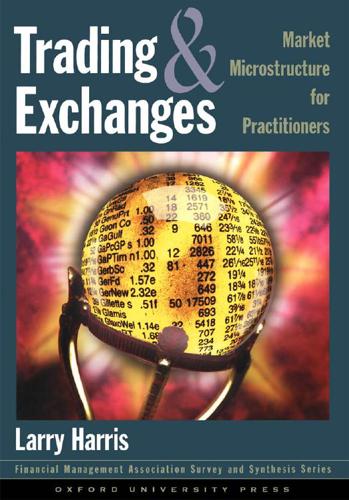
Trading and Exchanges: Market Microstructure for Practitioners
by
Larry Harris
Published 2 Jan 2003
The lender then can invest the cash and earn interest on it. Since the lending market is competitive, lenders must pay brokers interest on the cash collateral in order to obtain their business. This interest is called short interest rebate. In the United States, the short interest rebate rate is usually the federal funds rate or the LIBOR (London InterBank Offering Rate), less a small fee for borrowing the security. The borrowing fee depends on the availability of the security. If it is not difficult to borrow, the fee is only about 10 basis points per year. If the security is difficult to borrow, traders say that it is on special. The borrowing fees for such securities depend on their scarcity
…
An interest rate swap is an agreement between two parties to swap a fixed-rate cash flow for a variable-rate cash flow. The swap contract specifies both cash flows. A typical swap contract involves a five-year swap of semiannual payments. The variable-rate cash flow depends on some short-term interest rate index, like the London InterBank Offered Rate (LIBOR). The fixedrate cash flow depends on the rate that the parties negotiate when they arrange their swap. To reduce its interest rate exposure, Wilshire will swap a fixed-rate cash flow for a variable-rate cash flow. If short-term interest rates rise, the bank will have to pay more for its deposits, but an increase in the variable cash flow from the swap will offset this cost.
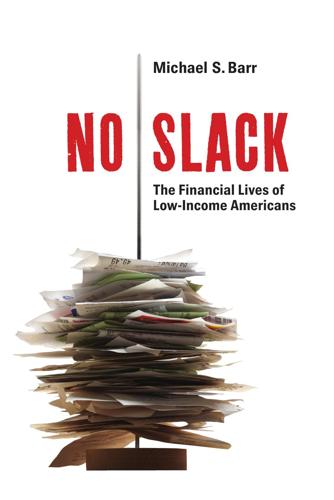
No Slack: The Financial Lives of Low-Income Americans
by
Michael S. Barr
Published 20 Mar 2012
Families commonly make mistakes in taking out home mortgages because they are misled by broker sales tactics, misunderstand the complicated terms and financial trade-offs in mortgages, wrongly forecast their own behavior, and misperceive their risks of borrowing. How many home owners really understand the way the teaser rate, introductory rate, and reset rate relate to the London interbank–offered rate plus some specified margin, or can judge whether the prepayment penalty will offset the gains from the teaser rate? Improved disclosures might help; however, if market pressures and consumer confusion are sufficiently strong, product regulation might prove more appropriate. For example, by barring prepayment penalties, one could reduce lock-in to bad mortgages; by barring very short-term adjustable-rate mortgages and balloon payments, one could reduce refinance pressure; in both cases, more of the cost of the loan would be pushed into interest rates, and competition could focus on a consistently stated price in the form of the annual percentage rate.
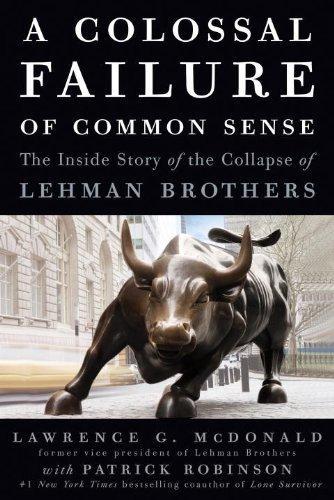
A Colossal Failure of Common Sense: The Inside Story of the Collapse of Lehman Brothers
by
Lawrence G. Mcdonald
and
Patrick Robinson
Published 21 Jul 2009
Treasuries in July 2006. AA-rated CDOs yielded 20 to 25 basis points more. One hundred basis points is equal to 1 percent. *Lehman would be paid the $500 million, less the recovery rate on the bonds. †Beazer Homes’ five-year CDS spread in 2005 was on average 180 basis points over the London Interbank Offered Rate (LIBOR). When an investor buys $500 million of CDS on a corporation like Beazer Homes, unlike buying a bond, the CDS investor (our counterparty on the other side of the e-trade) does not have to put up $500 million in cash. We, as buyers of the CDS protection, are simply responsible for paying a premium (or cash flows above LIBOR to the counterparty) and can get paid as much as the face value if the corporation defaults.
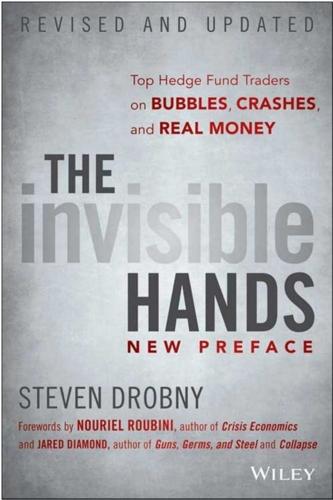
The Invisible Hands: Top Hedge Fund Traders on Bubbles, Crashes, and Real Money
by
Steven Drobny
Published 18 Mar 2010
See also Hyper-Great Macro Experiment explanation (Drobny) success Great Moderation Bernanke opinion Greenspan, Alan actions blame Conundrum speech Gunslinger fund manager Hang Seng, shorting Harvard University, endowments annual long-term performance assets, decline equity returns, contrast portfolio (2010) problems Headline inflation, core inflation (contrast) Hedge funds assets, growth business, Equity Trader outlook downside protection managers cash, availability prop trader, contrast transportation money allocation lending loss management, Commodity Trader perspective one-dimensional managers Plasticine Macro Trader complaint playing problems (2008) prop desk, contrast real money, differentiation redemptions running, worries space, Professor perspective stocks, contrast usage, Plasticine Macro Trader perspective Hedges, purchase Hendry, Hugh HFRI Macro Index Historical asset class, indicator Historical correlations, usage Historical events, examination Hoover, Herbert House, The business entry Human bias, impact Human Development Index (HDI) Hyper-Great Macro Experiment Hyperinflation impact risk scenario worry Hypothecation Hypotheses falsification, absence running Hypothesis testing, preference Ideas source trading Illiquid assets allocation avoidance inexpensiveness overinvestment Illiquid investments Illiquidity appearance cost, calculation increase needs, consideration premium, Pensioner measurement process risk premium, exposure Illiquidity assets risk value Illiquidity risk hedge process location mitigation recognition Illiquid positions, ownership Illiquid private deals, impact Illiquid strategies, investor engagement Incentive structures, change (process) India FDI GDP investment change Industrial production (IP) Inflation approach Commodity Trader perspective control deflation, contrast feeding, absence fiscal stimulus, impact hedge active commodity manager, impact impact increase persistence presence pressure psychological element quantitative easing, impact risk, increase risk premium volatility, reduction Inflation (1980-2000) Inflation-linked bonds Inflation-linked investment Inflation protected government bonds, purchase Inflection points, awareness Information arbitrage definition filtration flow, absence inundation Inside the House of Money (Drobny) Institutional investors impact leverage, usage (preclusion) money, loss outside advisors, usage Institutional money management, change Institutional real money mandates, Plasticine Macro Trader advice Insurance protection Intellectual property, anchor Intercontinental Exchange (ICE) Interest rates (1980-2000) increase trades weakness zero level International diversification, importance Investment account, volatility flow alternatives approach, defense committees, challenge human bias, impact hypotheses/positions, running losses rear view mirror process vehicles, usage Investment grade bonds (IG8) Investment Management Association (IMA) Investors base, impact complacency decisions, manager track record basis losses mistakes purchases, crisis risk management IOU papers/obligations Japan bullishness (Plasticine Macro Trader) economic malaise inflation-protected bonds inflation scenario performance (1990) rolling 10-year inflation stagnation Jobs, saving/creation (Obama phrase) Jones, Paul Tudor (success) JPMorgan Chase (2009) Keynes, John Maynard commodity belief Knowledge gap, reduction Latam-type bond defaults Latam-type financial crisis Latin America, performance Lehman Brothers government bond leverage change saving Leitner, Jim analysis, awareness interview lessons Leitner Center for International Law and Justice Leverage cash, relationship contrast efficient frontier, relationship function impact presence reduction usage Pensioner prediction Limited partnerships, leverage Liquidity crisis crisis (2008), leverage impact excess focus importance management, problem measurement process overvaluation perspective Predator definition premium provider risk excess scarcity valuation quantitative models, usage value example lesson Liquid markets mentality Livermore, Jesse London Interbank Offered Rate (LIBOR) basis, problem futures, ownership increase (2007) LIBOR-OIS basis (2008) three-month LIBOR Long-dated out-of-the-money equity index call options, purchase Longer-dated nominal bonds Long-only investments Long-term bonds, usage Long-Term Capital Management (LTCM) crisis problem Long-term fair value, departure Long-term fixed income assets Long-term historical correlations impact usage Long-term historical returns, usage Long-term horizon, irresponsibility Long-term inflation hedging investor nervousness Long-term money Long-term time horizon, advantage M2 (money supply measurements) Macroeconomics environment, creation imbalances pricing Macro factors examination risk Macro fund, running Macro hedge fund community Macro principles Macro risk management Macro scenario, preparation Macro traders, profits Macro trading Major Market Indices (2007) Managers, investor base (impact) Margin-to-equity, limits Markets Bond Trader viewpoint change conditions, improvement environment, identification functioning, understanding fundamentals/psychology, impact outguessing positioning, importance psychological game psychology, understanding zero-sum game Markets to fundamentals Marshall Plan Maximum Sharpe Ratio (MSR) portfolio construction goal Medium-term bonds, usage Medium-term theme projects Merrill Lynch saving (Thundering Herd) Microeconomic imbalances Mines, Commodity Investor purchase Minsky moment Misery index, peak Mishkin, Frederic S.
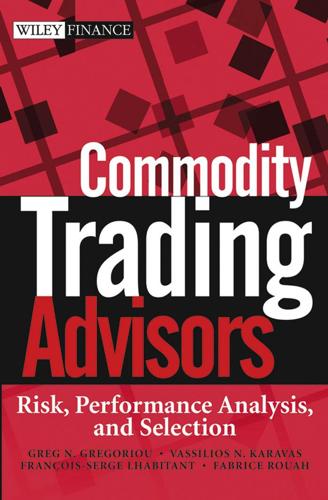
Commodity Trading Advisors: Risk, Performance Analysis, and Selection
by
Greg N. Gregoriou
,
Vassilios Karavas
,
François-Serge Lhabitant
and
Fabrice Douglas Rouah
Published 23 Sep 2004
., drawing 12 samples with replacement from the set of monthly data, using 1,000 repetitions for each fund. This bootstrapping methodology is in the vein of the technique applied by Ederington (1995). We used the Standard and Poor’s monthly return series as underlying. As proxy for the risk-free rate, we took the one-month U.S. Dollar (USD) London Interbank Offered Rate (LIBOR). RESULTS Nonnormality of Returns We test for nonnormality of returns with the Jarque and Bera (1987) test (see Greene 2000). Analyzing the samples, we find that the null hypothesis of normally distributed returns cannot be rejected at the 1 percent level for only 14 cases (11 percent of the observations) and at the 5 percent level for only 11 cases (8.7 percent).
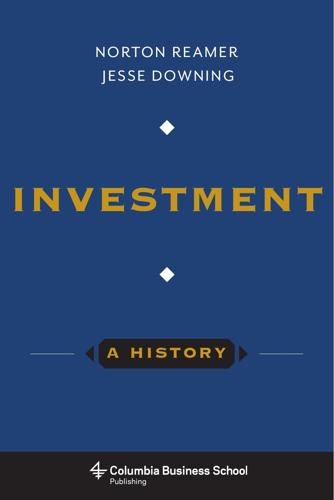
Investment: A History
by
Norton Reamer
and
Jesse Downing
Published 19 Feb 2016
It would not be given true statutory authority until the passage of the Companies Act in 2006, but the Guinness scandal was one piece of evidence that proponents of this statutory footing cited for years.118 LIBOR Scandal One crucial exception to the idea that market manipulation tends to be limited to small, illiquid markets is the LIBOR scandal. The scandal did not come to public light until 2012, though evidence suggests that LIBOR rate fixing took place at least as early as 2005.119 LIBOR, the London Interbank Offered Rate, is intended to represent the interest rate major banks would charge each other for loans. The LIBOR system was implemented in 1986 by the British Bankers’ Association, in large part simply to provide a benchmark that banks could look at in the process of setting rates. Currently, there are a total of 150 different LIBOR rates published daily for ten different currencies and fifteen different time horizons.120 The fundamental problem with LIBOR is that the number is calculated by a survey of the banking institutions themselves, not by analyzing actual transaction data.
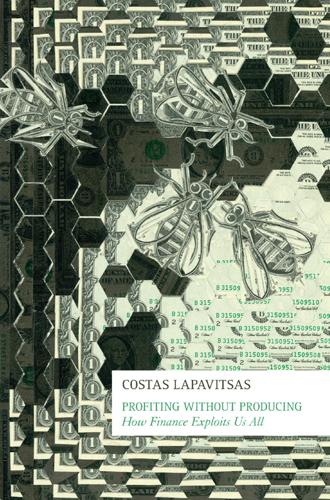
Profiting Without Producing: How Finance Exploits Us All
by
Costas Lapavitsas
Published 14 Aug 2013
In fact, growth in the derivatives markets has generally been dominated by interest-rate and foreign-exchange derivatives; since the early 2000s the strongest growth has been in credit default swaps (CDS), which are briefly discussed in Part III of this book.10 The price of financial derivatives depends, among other factors, on the rate of interest, and the rate that is typically used to value most financial derivatives is the London Interbank Offered Rate (LIBOR). The LIBOR is determined by a committee comprising several of the banks that dominate the derivatives markets; its determination involves the simple averaging of interest rates (excluding outliers) submitted by LIBOR committee banks daily. These are rates at which the LIBOR banks think that they can borrow from each other, although no LIBOR bank is obliged to undertake borrowing at the submitted rate.
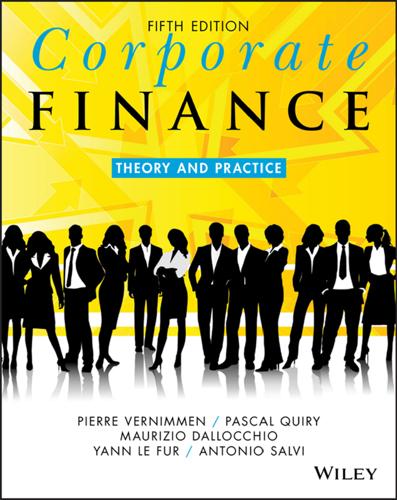
Corporate Finance: Theory and Practice
by
Pierre Vernimmen
,
Pascal Quiry
,
Maurizio Dallocchio
,
Yann le Fur
and
Antonio Salvi
Published 16 Oct 2017
. −0.360% EURIBOR (European Interbank Offered Rate) European money-market rate corresponding to the arithmetic mean of offered rates on the European banking market for a given maturity (between 1 week and 12 months). Sponsored by the European Banking Federation and published by Reuters, it is based on daily quotes provided by 64 European banks. −0.331% (3 months) LIBOR (London Interbank Offered Rate) Money-market rate observed in London corresponding to the arithmetic mean of offered rates on the London banking market for a given maturity (between 1 and 12 months) and a given currency (euro, sterling, dollar, etc.). −0.376% (euro 3 months) IRS The IRS rate indicates the fixed interest rate that will equate the present value of the fixed-rate payments with the present value of the floating-rate payments in an interest rate swap contract.
…
Notes 1 Excluding market products such as cat bonds, where the coupon or redemption price is drastically cut in the event of an occurrence of a disaster suffered by the issuer. 2 See Chapter 18. 3 That is, the use of an average exchange rate for the P&L and the closing rate for the balance sheet. 4 The reinsurance market allows insurers to transfer part of their risks to other insurance companies, called reinsurance companies, which act as insurers for insurers. 5 London Interbank Offered Rate; Euro Interbank Offered Rate. 6 Also called Asian options. Bibliography On the theory behind the purpose and practice of hedging: T. Adam, C. Fernando, Hedging, speculation and shareholder value, Journal of Financial Economics, 81(2), 283–309, August 2006. K. Ben Khediri, D. Folus, Hedging and financing decisions, Bankers, Markets & Investors, 98, 28–38, January–February 2009.
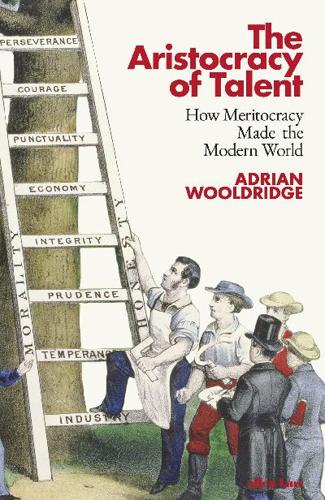
The Aristocracy of Talent: How Meritocracy Made the Modern World
by
Adrian Wooldridge
Published 2 Jun 2021
But the company was forced to file for bankruptcy at the end of 2001 and Skilling and several other senior executives ended up in jail.10 The pro-business Bush administration was forced to pass the Sarbanes–Oxley reforms in 2002 to try to impose more discipline on the corporate sector. But scandals continued. In 2012, the Libor scandal revealed that bankers had been routinely manipulating the London Interbank Offered Rate (Libor) in order to line their pockets at the expense of mortgage holders. In the same year, Goldman Sachs, an investment bank that was once a byword for dignity, was accused of treating some of its clients as ‘muppets’. ‘Getting an unsophisticated client was the golden prize,’ according to Greg Smith, a former employee.
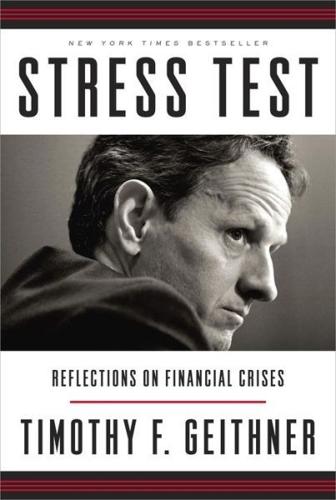
Stress Test: Reflections on Financial Crises
by
Timothy F. Geithner
Published 11 May 2014
For example, if company A owes $100 to company B and after going into bankruptcy repays only $80 of that loan, company B is said to have received a “haircut” of 20 percent. Five: The Fall 1 “TED spread”: The three-month Treasury-Eurodollar, or TED, spread measures the difference in borrowing costs on three-month Treasury bills and the cost that banks pay to borrow from each other for three months, as reflected in the London Interbank Offered Rate (LIBOR). 2 prime money market funds: There are three primary types of money market funds: Treasury and government funds that buy Treasury and agency securities; tax-exempt funds, which invest in short-term municipal securities; and prime funds, which typically pay higher rates of interest by investing in a broader range of riskier securities, including unsecured commercial paper and asset-backed commercial paper.
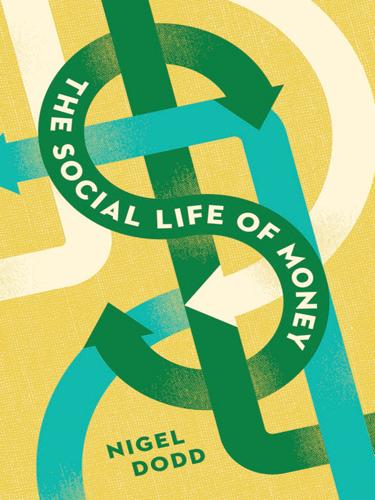
The Social Life of Money
by
Nigel Dodd
Published 14 May 2014
This era would have spanned the entire post–World War II period, during which the Wall Street system was transforming capitalism, leading to a succession of Minsky moments, as well as a financial system in which fraudulent activity was increasingly being seen as part of “normal” business practice. This was a period culminating not just in the subprime crisis, but also in the LIBOR affair (a series of fraudulent actions connected to the LIBOR, London Interbank Offered Rate, and also the resulting investigation and reaction). For some time, Minsky had been warning of the growth of “megabanks” that were predatory and inefficient, and more generally, of the emergence of “money manager capitalism” (Minsky 1993a), arguing that this emergence was fueling the development of an excessively leveraged economy.42 As part of this analysis, Minsky specifically addressed the practice of securitization in a memo written in 1987 that he used for teaching monetary theory.
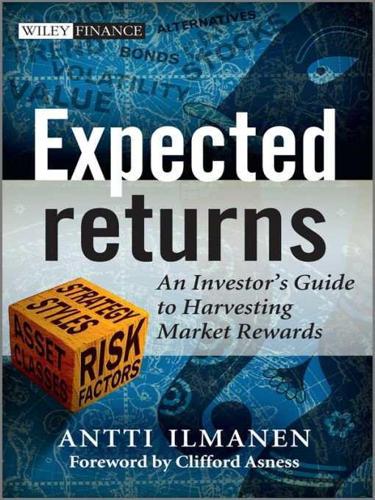
Expected Returns: An Investor's Guide to Harvesting Market Rewards
by
Antti Ilmanen
Published 4 Apr 2011
Antti Ilmanen Bad Homburg, November 2010 Abbreviations and acronyms AM Arithmetic Mean ATM At The Money (option) AUM Assets Under Management BEI Break-Even Inflation BF Behavioral Finance B/P Book/Price, book-to-market ratio BRP Bond Risk Premium, term premium B-S Black–Scholes C-P BRP Cochrane–Piazzesi Bond Risk Premium CAPM Capital Asset Pricing Model CAY Consumption wealth ratio CB Central Bank CCW Covered Call Writing CDO Collateralized Debt Obligation CDS Credit Default Swap CF Cash Flow CFNAI Chicago Fed National Activity Index CFO Chief Financial Officer CMD Commodity (futures) CPIyoy Consumer Price Inflation year on year CRB Commodity Research Bureau CRP Credit Risk Premium (over Treasury bond) CRRA Constant Relative Risk Aversion CTA Commodity Trading Advisor DDM Dividend Discount Model DJ CS Dow Jones Credit Suisse DMS Dimson–Marsh–Staunton D/P Dividend/Price (ratio), dividend yield DR Diversification Return E( ) Expected (conditional expectation) EMH Efficient Markets Hypothesis E/P Earnings/Price ratio, earnings yield EPS Earnings Per Share ERP Equity Risk Premium ERPB Equity Risk Premium over Bond (Treasury) ERPC Equity Risk Premium over Cash (Treasury bill) F Forward price or futures price FF Fama–French FI Fixed Income FoF Fund of Funds FX Foreign eXchange G Growth rate GARCH Generalized AutoRegressive Conditional Heteroskedasticity GC General Collateral repo rate (money market interest rate) GDP Gross Domestic Product GM Geometric Mean, also compound annual return GP General Partner GSCI Goldman Sachs Commodity Index H Holding-period return HF Hedge Fund HFR Hedge Fund Research HML High Minus Low, a value measure, also VMG HNWI High Net Worth Individual HPA House Price Appreciation (rate) HY High Yield, speculative-rated debt IG Investment Grade (rated debt) ILLIQ Measure of a stock’s illiquidity: average absolute daily return over a month divided by dollar volume IPO Initial Public Offering IR Information Ratio IRP Inflation Risk Premium ISM Business confidence index ITM In The Money (option) JGB Japanese Government Bond K-W BRP Kim–Wright Bond Risk Premium LIBOR London InterBank Offered Rate, a popular bank deposit rate LP Limited Partner LSV Lakonishok–Shleifer–Vishny LtA Limits to Arbitrage LTCM Long-Term Capital Management MA Moving Average MBS (fixed rate, residential) Mortgage-Backed Securities MIT-CRE MIT Center for Real Estate MOM Equity MOMentum proxy MSCI Morgan Stanley Capital International MU Marginal Utility NBER National Bureau of Economic Research NCREIF National Council of Real Estate Investment Fiduciaries OAS Option-Adjusted (credit) Spread OTM Out of The Money (option) P Price P/B Price/Book (valuation ratio) P/E Price/Earnings (valuation ratio) PE Private Equity PEH Pure Expectations Hypothesis PT Prospect Theory r Excess return R Real (rate) RE Real Estate REITs Real Estate Investment Trusts RWH Random Walk Hypothesis S Spot price, spot rate SBRP Survey-based Bond Risk Premium SDF Stochastic Discount Factor SMB Small Minus Big, size premium proxy SR Sharpe Ratio SWF Sovereign Wealth Fund TED Treasury–Eurodollar (deposit) rate spread in money markets TIPS Treasury Inflation-Protected Securities, real bonds UIP Uncovered Interest Parity (hypothesis) VaR Value at Risk VC Venture Capital VIX A popular measure of the implied volatility of S&P 500 index options VMG Value Minus Growth, equity value premium proxy WDRA Wealth-Dependent Risk Aversion X Cash flow Y Yield YC Yield Curve (steepness), term spread YTM Yield To Maturity YTW Yield To Worst Disclaimer Antti Ilmanen is a Senior Portfolio Manager at Brevan Howard, one of Europe’s largest hedge fund managers.
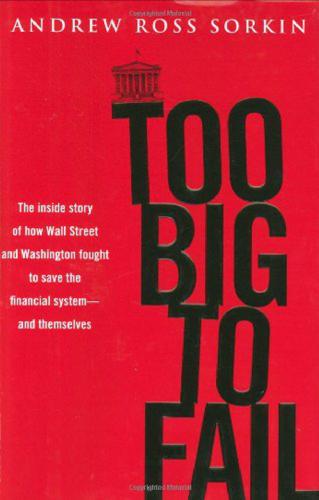
Too big to fail: the inside story of how Wall Street and Washington fought to save the financial system from crisis--and themselves
by
Andrew Ross Sorkin
Published 15 Oct 2009
If Washington was going to take Wall Street off the hook, the government wanted to make certain that at least the old stakeholders didn’t profit in any untoward fashion. “Paulson is handling this the same way he did Fannie, Freddie, and Bear Stearns—if the government steps in, the shareholders will pay for it,” Cohen observed. The Fed loan also came with a significant debt burden. AIG would have to pay at a rate based on a complex formula—the London interbank offered rate, a benchmark for short-term loans between banks, which then came to about 3 percent—plus an extra 8.5 percentage points. Based on that day’s rate, the interest the company would have to pay soared to more than 11 percent, which at the time was considered usurious. The loan would be secured by all AIG’s assets, and the government would have the right to veto payments of dividends to both common and preferred shareholders.
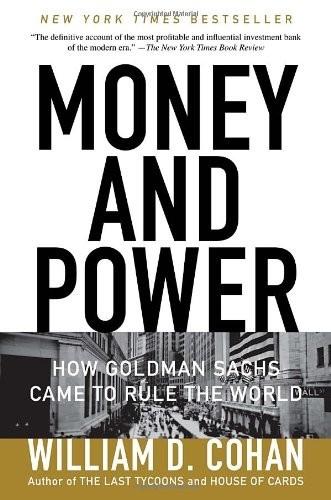
Money and Power: How Goldman Sachs Came to Rule the World
by
William D. Cohan
Published 11 Apr 2011
Goldman was trying—it seemed to him—to distinguish his pay from that of his peer group. “They were doing their job and paid me just enough to keep me around,” he said. In 2001, he came up with another new innovation: something he called “CMM,” for constant maturity mortgage, a kind of interest-rate product tied to mortgage rates, instead of LIBOR (for London Interbank Offered Rate). A CMM was “an attempt to simplify the trading of mortgage price risk by transforming the most liquid portion of the mortgage market into a rate-based market” and can “be used to hedge for mortgage products that are sensitive to changes in mortgage rates.” Regardless of whether mere mortals understood the new product (or not), Birnbaum’s point about it was “that it was another innovation that did well and made good money doing it,” of around $100 million a year or so.